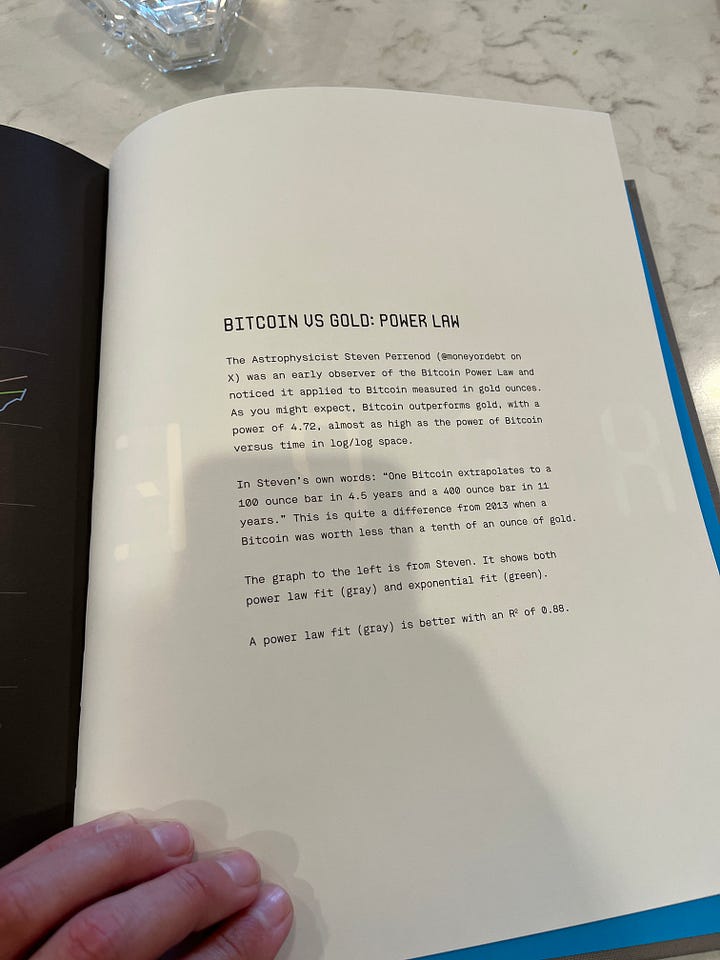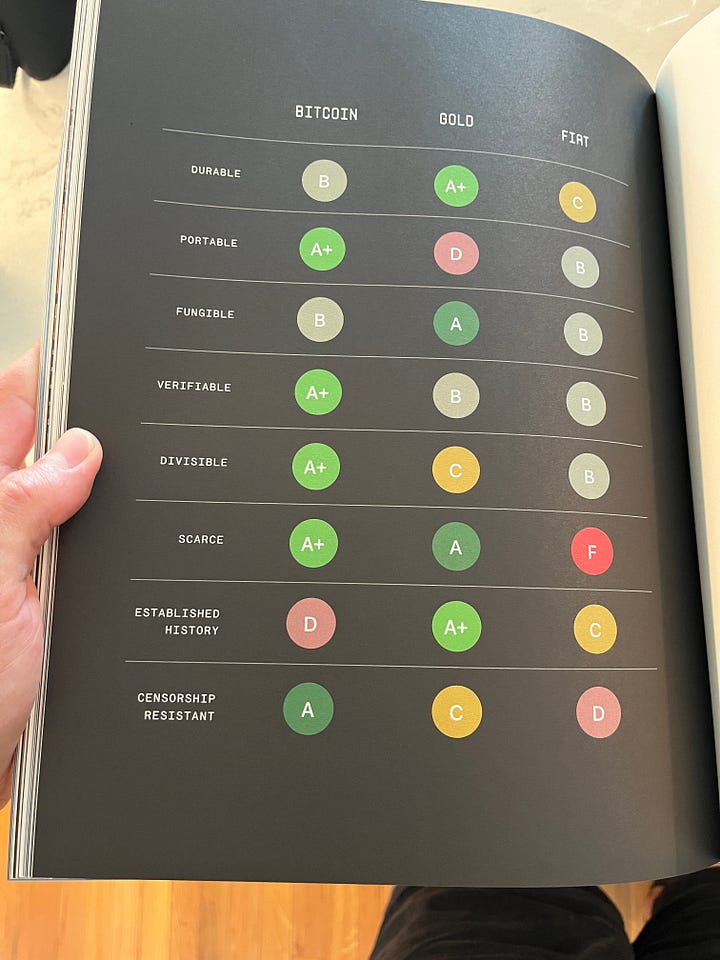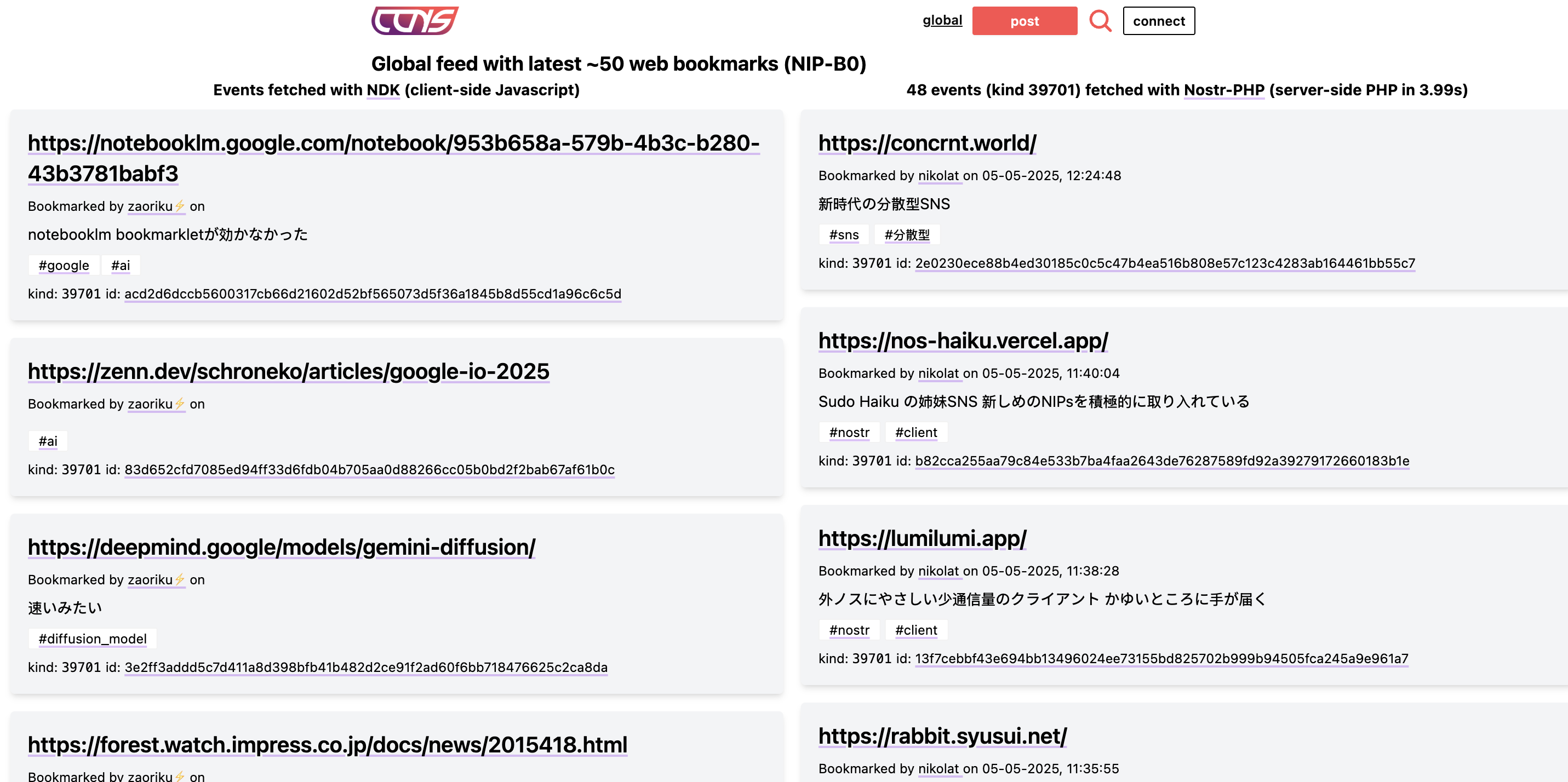-
 @ c1e6505c:02b3157e
2025-05-28 17:36:03
@ c1e6505c:02b3157e
2025-05-28 17:36:03I recently acquired a new lens:
1959 Leica Summaron F2.8 35mm LTM.
1959 Leica Summaron 35mm f2.8 LTM mounted on my Fujifilm Xpro2 with LTM adapter made by Urth.
Technically, it was a trade. I helped a fellow Bitcoiner set up their Sparrow Wallet, Nostr stuff, and troubleshoot a few wallet issues, and in return, they gave me the lens.
It all started at a local Bitcoin meetup I went to about a week ago - my second time attending. I recognized a few faces from last time, but also saw some new ones. These meetups are refreshing - it’s rare to speak a common language about something like Bitcoin or Nostr. Most people still don’t get it. But they will.
Technology moves forward. Networks grow. Old cells die off.
During the meetup, someone noticed I had my Leica M262 with me and struck up a conversation. Said they had some old Leica lenses and gear at home, and wanted to show me.
Bitcoin and photography in one conversation? I’m down.
A day or so later, they sent me a photo of one of the lenses: a vintage Summaron LTM 35mm f/2.8 from 1959. I’d never seen or heard of one before. They asked if I could help them set up Sparrow and a Bitcoin node. In exchange, they’d give me the lens. Sounded like a good deal to me. Helping plebs with their setups feels like a duty anyway. I said, of course.
They invited me over - a pretty trusting move, which I appreciated. They had some great Bitcoin memorabilia: Fred Krueger’s The Big Bitcoin Book (even if the guy’s turned full shitcoiner), and some FTX sunglasses from Bitcoin 2022. Probably future collector’s items, lol.




We headed upstairs to work on setting up Sparrow Wallet on their Windows machine. I verified the software download first (which you should always do), then helped them create a new wallet using their Ledger Flex. They also had an older Ledger Nano X. The Flex setup was easy, but the Nano X gave us trouble. It turns out Ledger allows multiple wallets for the same asset, which can show up differently depending on how they’re configured. In Sparrow, only one wallet showed—none of the others.
I believe it had to do with the derivation path from the Ledger. If anyone knows a fix, let me know.
After a few hours of troubleshooting, I told them I couldn’t really recommend Ledger. The UX is a mess. They’d already heard similar things from other plebs too.
I suggested switching to the Blockstream Jade. It’s a solid Bitcoin-only device from a trustworthy team. That’s what you want in a hardware wallet.
But back to the lens…
Since it’s an LTM (Leica Thread Mount), I couldn’t mount it directly on my M262. Luckily, I remembered I had an Urth adapter that fits my Fujifilm X-Pro2. I don’t use the X-Pro2 much these days—it’s mostly been sidelined by the M262 - but this was the perfect excuse to bring it out again.
To test the lens, I shot everything wide open at f/2.8. Nothing crazy fast, but it’s the best way to see a lens’s character. And this one definitely has character. There’s a subtle softness and a kind of motion blur effect around the edges when wide open. At first, I wasn’t sure how I felt about it, but the more I shot, the more I liked it. It reminds me of Winogrand’s work in Winogrand Color - those messy, shifting edges that make the frame feel alive. It also helps soften the digital-ness of the camera sensor.
The focus throw is short and snappy - much tighter than my Summicron V3 35mm f/2. I really like how fast it is to use. The closest focusing distance is about 3.5 feet, so it’s not ideal for close-ups. And with the Urth adapter on the X-Pro2, the focal length ends up closer to 40mm.
The only thing that threw me off was the infinity lock. When the focus hits infinity, it physically locks - you have to press a small tab to unlock it. I’ve seen others complain about it, so I guess it’s just one of those old lens quirks. I’m getting used to it.
All the photos here were taken around where I live in South Carolina. Some during bike rides to the river for a swim, others while walking through the marshlands.
I try to make work wherever I am. You should be able to.
It’s about the light, the rhythm, the play - and having the motivation to actually go out and shoot.
Lens rating: 7.9/10
I mainly shoot with a Leica M262, and edit in Lightroom + Dehancer
Use “PictureRoom” for 10% off Dehancer Film
If you’ve made it this far, thank you for taking the time to view my work - consider becoming a paid subscriber.
Also, please contact me if you would like to purchase any of my prints.
Follow me on Nostr:
npub1c8n9qhqzm2x3kzjm84kmdcvm96ezmn257r5xxphv3gsnjq4nz4lqelne96
-
 @ b7274d28:c99628cb
2025-05-28 01:11:43
@ b7274d28:c99628cb
2025-05-28 01:11:43In this second installment of The Android Elite Setup tutorial series, we will cover installing the nostr:npub10r8xl2njyepcw2zwv3a6dyufj4e4ajx86hz6v4ehu4gnpupxxp7stjt2p8 on your #Android device and browsing for apps you may be interested in trying out.
Since the #Zapstore is a direct competitor to the Google Play Store, you're not going to be able to find and install it from there like you may be used to with other apps. Instead, you will need to install it directly from the developer's GitHub page. This is not a complicated process, but it is outside the normal flow of searching on the Play Store, tapping install, and you're done.
Installation
From any web browser on your Android phone, navigate to the Zapstore GitHub Releases page and the most recent version will be listed at the top of the page. The .apk file for you to download and install will be listed in the "Assets."

Tap the .apk to download it, and you should get a notification when the download has completed, with a prompt to open the file.

You will likely be presented with a prompt warning you that your phone currently isn't allowed to install applications from "unknown sources." Anywhere other than the Play Store is considered an "unknown source" by default. However, you can manually allow installation from unknown sources in the settings, which the prompt gives you the option to do.
In the settings page that opens, toggle it to allow installation from this source, and you should be prompted to install the application. If you aren't, simply go to your web browser's downloads and tap on the .apk file again, or go into your file browser app and you should find the .apk in your Downloads folder.

If the application doesn't open automatically after install, you will find it in your app drawer.

Home Page
Right at the top of the home page in the Zapstore is the search bar. You can use it to find a specific app you know is available in the Zapstore.

There are quite a lot of open source apps available, and more being added all the time. Most are added by the Zapstore developer, nostr:npub1wf4pufsucer5va8g9p0rj5dnhvfeh6d8w0g6eayaep5dhps6rsgs43dgh9, but some are added by the app developers themselves, especially Nostr apps. All of the applications we will be installing through the Zapstore have been added by their developers and are cryptographically signed, so you know that what you download is what the developer actually released.
The next section is for app discovery. There are curated app collections to peruse for ideas about what you may want to install. As you can see, all of the other apps we will be installing are listed in nostr:npub1wf4pufsucer5va8g9p0rj5dnhvfeh6d8w0g6eayaep5dhps6rsgs43dgh9's "Nostr" collection.

In future releases of the Zapstore, users will be able to create their own app collections.
The last section of the home page is a chronological list of the latest releases. This includes both new apps added to the Zapstore and recently updated apps. The list of recent releases on its own can be a great resource for discovering apps you may not have heard of before.

Installed Apps
The next page of the app, accessed by the icon in the bottom-center of the screen that looks like a clock with an arrow circling it, shows all apps you have installed that are available in the Zapstore. It's also where you will find apps you have previously installed that are ready to be updated. This page is pretty sparse on my test profile, since I only have the Zapstore itself installed, so here is a look at it on my main profile:

The "Disabled Apps" at the top are usually applications that were installed via the Play Store or some other means, but are also available in the Zapstore. You may be surprised to see that some of the apps you already have installed on your device are also available on the Zapstore. However, to manage their updates though the Zapstore, you would need to uninstall the app and reinstall it from the Zapstore instead. I only recommend doing this for applications that are added to the Zapstore by their developers, or you may encounter a significant delay between a new update being released for the app and when that update is available on the Zapstore.
Tap on one of your apps in the list to see whether the app is added by the developer, or by the Zapstore. This takes you to the application's page, and you may see a warning at the top if the app was not installed through the Zapstore.

Scroll down the page a bit and you will see who signed the release that is available on the Zapstore.

In the case of Primal, even though the developer is on Nostr, they are not signing their own releases to the Zapstore yet. This means there will likely be a delay between Primal releasing an update and that update being available on the Zapstore.
Settings
The last page of the app is the settings page, found by tapping the cog at the bottom right.

Here you can send the Zapstore developer feedback directly (if you are logged in), connect a Lightning wallet using Nostr Wallet Connect, delete your local cache, and view some system information.
We will be adding a connection to our nostr:npub1h2qfjpnxau9k7ja9qkf50043xfpfy8j5v60xsqryef64y44puwnq28w8ch wallet in part 5 of this tutorial series.
For the time being, we are all set with the Zapstore and ready for the next stage of our journey.
Continue to Part 3: Amber Signer. Nostr link: nostr:naddr1qqxnzde5xuengdeexcmnvv3eqgstwf6d9r37nqalwgxmfd9p9gclt3l0yc3jp5zuyhkfqjy6extz3jcrqsqqqa28qy2hwumn8ghj7un9d3shjtnyv9kh2uewd9hj7qg6waehxw309aex2mrp0yhxyunfva58gcn0d36zumn9wss80nug
-
 @ 7d33ba57:1b82db35
2025-05-29 08:40:35
@ 7d33ba57:1b82db35
2025-05-29 08:40:35Lingen (Ems) is a peaceful town in Lower Saxony, near the Dutch border, known for its historic old town, green surroundings, and relaxed pace of life. It may not be on the typical tourist radar, but it offers a taste of small-town Germany with plenty of charm and local culture.
🏘️ What to See and Do in Lingen
🏛️ Old Town & Market Square
- Stroll through the historic town center, where you’ll find half-timbered houses, cozy cafés, and the lovely St. Boniface Church
- The Rathaus (Town Hall) and its square are perfect for a slow coffee or people-watching
🚲 Nature & Outdoor Activities
- The region around Lingen is great for cycling and walking, especially along the Ems River
- Explore the Emsland countryside, filled with forests, meadows, and quiet villages
- Visit the nearby Emsland Moormuseum to learn about local peatland history
🎓 Student Vibes
- Thanks to the presence of a university, Lingen has a young and vibrant side, with cultural events and small live music scenes
🍺 Local Food & Drink
- Try regional dishes like Grünkohl (kale with sausage in winter) and Schnitzel in a local tavern
- Enjoy a drink at a beer garden or riverside café, especially in warmer months

🚆 Getting There
- Well connected by train, especially to Osnabrück, Münster, and the Dutch city of Enschede
- Great stop on a northern Germany road or rail trip
Lingen is ideal for travelers looking for peaceful towns, regional culture, and access to beautiful natural areas. It’s a place where you can slow down, bike along a river, and enjoy the local way of life.
-
 @ 21335073:a244b1ad
2025-05-21 16:58:36
@ 21335073:a244b1ad
2025-05-21 16:58:36The other day, I had the privilege of sitting down with one of my favorite living artists. Our conversation was so captivating that I felt compelled to share it. I’m leaving his name out for privacy.
Since our last meeting, I’d watched a documentary about his life, one he’d helped create. I told him how much I admired his openness in it. There’s something strange about knowing intimate details of someone’s life when they know so little about yours—it’s almost like I knew him too well for the kind of relationship we have.
He paused, then said quietly, with a shy grin, that watching the documentary made him realize how “odd and eccentric” he is. I laughed and told him he’s probably the sanest person I know. Because he’s lived fully, chasing love, passion, and purpose with hardly any regrets. He’s truly lived.
Today, I turn 44, and I’ll admit I’m a bit eccentric myself. I think I came into the world this way. I’ve made mistakes along the way, but I carry few regrets. Every misstep taught me something. And as I age, I’m not interested in blending in with the world—I’ll probably just lean further into my own brand of “weird.” I want to live life to the brim. The older I get, the more I see that the “normal” folks often seem less grounded than the eccentric artists who dare to live boldly. Life’s too short to just exist, actually live.
I’m not saying to be strange just for the sake of it. But I’ve seen what the crowd celebrates, and I’m not impressed. Forge your own path, even if it feels lonely or unpopular at times.
It’s easy to scroll through the news and feel discouraged. But actually, this is one of the most incredible times to be alive! I wake up every day grateful to be here, now. The future is bursting with possibility—I can feel it.
So, to my fellow weirdos on nostr: stay bold. Keep dreaming, keep pushing, no matter what’s trending. Stay wild enough to believe in a free internet for all. Freedom is radical—hold it tight. Live with the soul of an artist and the grit of a fighter. Thanks for inspiring me and so many others to keep hoping. Thank you all for making the last year of my life so special.
-
 @ cefb08d1:f419beff
2025-05-29 08:01:15
@ cefb08d1:f419beff
2025-05-29 08:01:15https://stacker.news/items/991778
-
 @ b7274d28:c99628cb
2025-05-28 00:59:49
@ b7274d28:c99628cb
2025-05-28 00:59:49Your identity is important to you, right? While impersonation can be seen in some senses as a form of flattery, we all would prefer to be the only person capable of representing ourselves online, unless we intentionally delegate that privilege to someone else and maintain the ability to revoke it.
Amber does all of that for you in the context of #Nostr. It minimizes the possibility of your private key being compromized by acting as the only app with access to it, while all other Nostr apps send requests to Amber when they need something signed. This even allows you to give someone temporary authority to post as you without giving them your private key, and you retain the authority to revoke their permissions at any time.
nostr:npub1w4uswmv6lu9yel005l3qgheysmr7tk9uvwluddznju3nuxalevvs2d0jr5 has provided Android users with an incredibly powerful tool in Amber, and he continues to improve its functionality and ease of use. Indeed, there is not currently a comparative app available for iOS users. For the time being, this superpower is exclusive to Android.
Installation
Open up the Zapstore app that you installed in the previous stage of this tutorial series.
Very likely, Amber will be listed in the app collection section of the home page. If it is not, just search for "Amber" in the search bar.

Opening the app's page in the Zapstore shows that the release is signed by the developer. You can also see who has added this app to one of their collections and who has supported this app with sats by zapping the release.

Tap "Install" and you will be prompted to confirm you are sure you want to install Amber.

Helpfully, you are informed that several other users follow this developer on Nostr. If you have been on Nostr a while, you will likely recognize these gentlemen as other Nostr developers, one of them being the original creator of the protocol.
You can choose to never have Zapstore ask for confirmation again with apps developed by nostr:npub1w4uswmv6lu9yel005l3qgheysmr7tk9uvwluddznju3nuxalevvs2d0jr5, and since we have another of his apps to install later in this tutorial series, I recommend you toggle this on. Then tap on "Trust greenart7c3 and install app."
Just like when you installed the Zapstore from their GitHub, you will be prompted to allow the Zapstore to install apps, since Android considers it an "unknown source."

Once you toggle this on and use the back button to get back to the Zapstore, Amber will begin downloading and then present a prompt to install the app. Once installed, you will see a prompt that installation was a success and you can now open the app.

From here, how you proceed will depend on whether you need to set up a new Nostr identity or use Amber with an existing private key you already have set up. The next section will cover setting up a new Nostr identity with Amber. Skip to the section titled "Existing Nostrich" if you already have an nsec that you would like to use with Amber.
New Nostrich
Upon opening the application, you will be presented with the option to use an existing private key or create a new Nostr account. Nostr doesn't really have "accounts" in the traditional sense of the term. Accounts are a relic of permissioned systems. What you have on Nostr are keys, but Amber uses the "account" term because it is a more familiar concept, though it is technically inaccurate.

Choose "Create a new Nostr account" and you will be presented with a screen telling you that your Nostr account is ready. Yes, it was really that easy. No email, no real name, no date of birth, and no annoying capcha. Just "Create a new account" and you're done.

The app presents you with your public key. This is like an address that can be used to find your posts on Nostr. It is 100% unique to you, and no one else can post a note that lists this npub as the author, because they won't have the corresponding private key. You don't need to remember your npub, though. You'll be able to readily copy it from any Nostr app you use whenever you need it.
You will also be prompted to add a nickname. This is just for use within Amber, since you can set up multiple profiles within the app. You can use anything you want here, as it is just so you can tell which profile is which when switching between them in Amber.
Once you've set your nickname, tap on "Continue."
The next screen will ask you what Amber's default signing policy should be.

The default is to approve basic actions, referring to things that are common for Nostr clients to request a signature for, like following another user, liking a post, making a new post, or replying. If you are more concerned about what Amber might be signing for on your behalf, you can tell it to require manual approval for each app.
Once you've made your decision, tap "Finish." You will also be able to change this selection in the app settings at any time.
With this setup out of the way, you are now presented with the main "Applications" page of the app.

At the top, you have a notification encouraging you to create a backup. Let's get that taken care of now by tapping on the notification and skipping down to the heading titled "Backing Up Your Identity" in this tutorial.
Existing Nostrich
Upon opening the application, you will be presented with the option to use your private key or create a new Nostr account. Choose the former.

The next screen will require you to paste your private key.

You will need to obtain this from whatever Nostr app you used to create your profile, or any other Nostr app that you pasted your nsec into in the past. Typically you can find it in the app settings and there will be a section mentioning your keys where you can copy your nsec. For instance, in Primal go to Settings > Keys > Copy private key, and on Amethyst open the side panel by tapping on your profile picture in the top-left, then Backup Keys > Copy my secret key.
After pasting your nsec into Amber, tap "Next."

Amber will give you a couple options for a default signing policy. The default is to approve basic actions, referring to things that are common for Nostr clients to request a signature for, like following another user, liking a post, making a new post, or replying. If you are more concerned about what Amber might be signing for on your behalf, you can tell it to require manual approval for each app.
Once you've made your decision, tap "Finish." You will also be able to change this selection in the app settings at any time.

With this setup out of the way, you are now presented with the main "Applications" page of the app. You have nothing here yet, since you haven't used Amber to log into any Nostr apps, but this will be where all of the apps you have connected with Amber will be listed, in the order of the most recently used at the top.
Before we go and use Amber to log into an app, though, let's make sure we've created a backup of our private key. You pasted your nsec into Amber, so you could just save that somewhere safe, but Amber gives you a few other options as well. To find them, you'll need to tap the cog icon at the bottom of the screen to access the settings, then select "Backup Keys."


Backing Up Your Identity

You'll notice that Amber has a few different options for backing up your private key that it can generate.
First, it can give you seed words, just like a Bitcoin seed. If you choose that option, you'll be presented with 12 words you can record somewhere safe. To recover your Nostr private key, you just have to type those words into a compatible application, such as Amber.
The next option is to just copy the secret/private key in its standard form as an "nsec." This is the least secure way to store it, but is also the most convenient, since it is simple to paste into another signer application. If you want to be able to log in on a desktop web app, the browser extension Nostr signers won't necessarily support entering your 12 word seed phrase, but they absolutely will support pasting in your nsec.
You can also display a QR code of your private key. This can be scanned by Amber signer on another device for easily transferring your private key to other devices you want to use it on. Say you have an Android tablet in addition to your phone, for instance. Just make sure you only use this function where you can be certain that no one will be able to get a photograph of that QR code. Once someone else has your nsec, there is no way to recover it. You have to start all over on Nostr. Not a big deal at this point in your journey if you just created a Nostr account, but if you have been using Nostr for a while and have built up a decent amount of reputation, it could be much more costly to start over again.
The next options are a bit more secure, because they require a password that will be used to encrypt your private key. This has some distinct advantages, and a couple disadvantages to be aware of. Using a password to encrypt your private key will give you what is called an ncryptsec, and if this is leaked somehow, whoever has it will not necessarily have access to post as you on Nostr, the way they would if your nsec had been leaked. At least, not so long as they don't also have your password. This means you can store your ncryptsec in multiple locations without much fear that it will be compromised, so long as the password you used to encrypt it was a strong and unique one, and it isn't stored in the same location. Some Nostr apps support an ncryptsec for login directly, meaning that you have the option to paste in your ncryptsec and then just log in with the password you used to encrypt it from there on out. However, now you will need to keep track of both your ncryptsec and your password, storing both of them safely and separately. Additionally, most Nostr clients and signer applications do not support using an ncryptsec, so you will need to convert it back to a standard nsec (or copy the nsec from Amber) to use those apps.
The QR option using an ncryptsec is actually quite useful, though, and I would go this route when trying to set up Amber on additional devices, since anyone possibly getting a picture of the QR code is still not going to be able to do anything with it, unless they also get the password you used to encrypt it.
All of the above options will require you to enter the PIN you set up for your device, or biometric authentication, just as an additional precaution before displaying your private key to you.
As for what "store it in a safe place" looks like, I highly recommend a self-hosted password manager, such as Vaultwarden+Bitwarden or KeePass. If you really want to get wild, you can store it on a hardware signing device, or on a steel seed plate.
Additional Settings

Amber has some additional settings you may want to take advantage of. First off, if you don't want just anyone who has access to your phone to be able to approve signing requests, you can go into the Security settings add a PIN or enable biometrics for signing requests. If you enable the PIN, it will be separate from the PIN you use to access your phone, so you can let someone else use your phone, like your child who is always begging to play a mobile game you have installed, without worrying that they might have access to your Nostr key to post on Amethyst.
Amber also has some relay settings. First are the "Active relays" which are used for signing requests sent to Amber remotely from Nostr web apps. This is what enables you to use Amber on your phone to log into Nostr applications on your desktop web browser, such as Jumble.social, Coracle.social, or Nostrudel.ninja, eliminating your need to use any other application to store your nsec whatsoever. You can leave this relay as the default, or you can add other relays you want to use for signing requests. Just be aware, not all relays will accept the notes that are used for Nostr signing requests, so make sure that the relay you want to use does so. In fact, Amber will make sure of this for you when you type in the relay address.
The next type of relays that you can configure in Amber are the "Default profile relays." These are used for reading your profile information. If you already had a Nostr identity that you imported to Amber, you probably noticed it loaded your profile picture and display name, setting the latter as your nickname in Amber. These relays are where Amber got that information from. The defaults are relay.nostr.band and purplepag.es. The reason for this is because they are aggregators that look for Nostr profiles that have been saved to other relays on the network and pull them in. Therefore, no matter what other relay you may save your profile to, Amber will likely be able to find it on one of those two relays as well. If you have a relay you know you will be saving your Nostr profiles to, you may want to add it to this list.
You can also set up Amber to be paired with Orbot for signing over Tor using relays that are only accessible via the Tor network. That is an advanced feature, though, and well beyond the scope of this tutorial.
Finally, you can update the default signing policy. Maybe after using Amber for a while, you've decided that the choice you made before was too strict or too lenient. You can change it to suit your needs.
Zapstore Login
Now that you are all set up with Amber, let's get you signed into your first Nostr app by going back to the Zapstore.

From the app's home screen, tap on the user icon in the upper left of the screen. This will open a side panel with not much on it except the option to "sign in." Go ahead and tap on it.
You will be presented with the option to either sign in with Amber, or to paste your npub. However, if you do the latter, you will only have read access, meaning you cannot zap any of the app releases. There are other features planned for the Zapstore that may also require you to be signed in with write access, so go ahead and choose to log in with Amber.

Your phone should automatically switch to Amber to approve the sign-in request.

You can choose to only approve basic actions for Zapstore, require it to manually approve every time, or you can tell it that you "fully trust this application." Only choose the latter option with apps you have used for a while and they have never asked you to sign for anything suspicious. For the time being, I suggest you use the "Approve basic actions" option and tap "Grant Permissions."
Your phone will switch back to the Zapstore and will show that you are now signed in. Congratulations! From here on out, logging into most Nostr applications will be as easy as tapping on "Log in with Amber" and approving the request.

If you set up a new profile, it will just show a truncated version of your npub rather than the nickname you set up earlier. That's fine. You'll have an opportunity to update your Nostr profile in the next tutorial in this series and ensure that it is spread far and wide in the network, so the Zapstore will easily find it.
That concludes the tutorial for Amber. While we have not covered using Amber to log into Nostr web apps, that is outside the scope of this series, and I will cover it in an upcoming tutorial regarding using Amber's remote signer options in detail.
Since you're already hanging out in the Zapstore, you may as well stick around, because we will be using it right out the gate in the next part of this series: Amethyst Installation and Setup. (Coming Soon)
-
 @ c1e9ab3a:9cb56b43
2025-05-27 16:19:06
@ c1e9ab3a:9cb56b43
2025-05-27 16:19:06Star Wars is often viewed as a myth of rebellion, freedom, and resistance to tyranny. The iconography—scrappy rebels, totalitarian stormtroopers, lone smugglers—suggests a deep anti-authoritarian ethos. Yet, beneath the surface, the narrative arc of Star Wars consistently affirms the necessity, even sanctity, of central authority. This blog entry introduces the question: Is Star Wars fundamentally a celebration of statism?
Rebellion as Restoration, Not Revolution
The Rebel Alliance’s mission is not to dismantle centralized power, but to restore the Galactic Republic—a bureaucratic, centrally governed institution. Characters like Mon Mothma and Bail Organa are high-ranking senators, not populist revolutionaries. The goal is to remove the corrupt Empire and reinstall a previous central authority, presumed to be just.
- Rebels are loyalists to a prior state structure.
- Power is not questioned, only who wields it.
Jedi as Centralized Moral Elites
The Jedi, often idealized as protectors of peace, are unelected, extra-legal enforcers of moral and military order. Their authority stems from esoteric metaphysical abilities rather than democratic legitimacy.
- They answer only to their internal Council.
- They are deployed by the Senate, but act independently of civil law.
- Their collapse is depicted as tragic not because they were unaccountable, but because they were betrayed.
This positions them as a theocratic elite, not spiritual anarchists.
Chaos and the Frontier: The Case of the Cantina
The Mos Eisley cantina, often viewed as a symbol of frontier freedom, reveals something darker. It is: - Lawless - Violent - Culturally fragmented
Conflict resolution occurs through murder, not mediation. Obi-Wan slices off a limb; Han shoots first—both without legal consequence. There is no evidence of property rights, dispute resolution, or voluntary order.
This is not libertarian pluralism—it’s moral entropy. The message: without centralized governance, barbarism reigns.
The Mythic Arc: Restoration of the Just State
Every trilogy in the saga returns to a single theme: the fall and redemption of legitimate authority.
- Prequels: Republic collapses into tyranny.
- Originals: Rebels fight to restore legitimate order.
- Sequels: Weak governance leads to resurgence of authoritarianism; heroes must reestablish moral centralism.
The story is not anti-state—it’s anti-bad state. The solution is never decentralization; it’s the return of the right ruler or order.
Conclusion: The Hidden Statism of a Rebel Myth
Star Wars wears the costume of rebellion, but tells the story of centralized salvation. It: - Validates elite moral authority (Jedi) - Romanticizes restoration of fallen governments (Republic) - Portrays decentralized zones as corrupt and savage (outer rim worlds)
It is not an anarchist parable, nor a libertarian fable. It is a statist mythology, clothed in the spectacle of rebellion. Its core message is not that power should be abolished, but that power belongs to the virtuous few.
Question to Consider:
If the Star Wars universe consistently affirms the need for centralized moral and political authority, should we continue to see it as a myth of freedom? Or is it time to recognize it as a narrative of benevolent empire? -
 @ 9e9085e9:2056af17
2025-05-29 07:51:18
@ 9e9085e9:2056af17
2025-05-29 07:51:18Part 5: Why You Should Join Yakihonne Today
🚀 Yakihonne: The Future of Free, Fair & Fast Social Interaction
Looking for a platform where you control everything—your posts, your data, your income?
Yakihonne is not just another app. It's a movement. A decentralized social payment network where:
Your voice can't be silenced
Your data isn't sold
Your followers are truly yours
Your creativity can be rewarded instantly
🔥 6 Reasons to Pay Attention to Yakihonne:
-
Zero Censorship Say what matters without fear of being muted or banned.
-
Built on Nostr Protocol Secure, scalable, and permissionless by design.
-
Social + Payments in One Chat, connect, and get paid—all from one app.
-
Lightning Fast Tips Reward content instantly with Bitcoin micro-payments.
-
No Algorithms. No Ads. No Noise. What you see is what you follow—simple and clean.
-
True Digital Freedom Break free from centralized control and own your digital presence.
🔗 Explore now: https://yakihonne.com 📱 Available on #iOS & #Android
-
-
 @ 51bbb15e:b77a2290
2025-05-21 00:24:36
@ 51bbb15e:b77a2290
2025-05-21 00:24:36Yeah, I’m sure everything in the file is legit. 👍 Let’s review the guard witness testimony…Oh wait, they weren’t at their posts despite 24/7 survellience instructions after another Epstein “suicide” attempt two weeks earlier. Well, at least the video of the suicide is in the file? Oh wait, a techical glitch. Damn those coincidences!
At this point, the Trump administration has zero credibility with me on anything related to the Epstein case and his clients. I still suspect the administration is using the Epstein files as leverage to keep a lot of RINOs in line, whereas they’d be sabotaging his agenda at every turn otherwise. However, I just don’t believe in ends-justify-the-means thinking. It’s led almost all of DC to toss out every bit of the values they might once have had.
-
 @ c9badfea:610f861a
2025-05-20 19:49:20
@ c9badfea:610f861a
2025-05-20 19:49:20- Install Sky Map (it's free and open source)
- Launch the app and tap Accept, then tap OK
- When asked to access the device's location, tap While Using The App
- Tap somewhere on the screen to activate the menu, then tap ⁝ and select Settings
- Disable Send Usage Statistics
- Return to the main screen and enjoy stargazing!
ℹ️ Use the 🔍 icon in the upper toolbar to search for a specific celestial body, or tap the 👁️ icon to activate night mode
-
 @ 04c915da:3dfbecc9
2025-05-20 15:53:48
@ 04c915da:3dfbecc9
2025-05-20 15:53:48This piece is the first in a series that will focus on things I think are a priority if your focus is similar to mine: building a strong family and safeguarding their future.
Choosing the ideal place to raise a family is one of the most significant decisions you will ever make. For simplicity sake I will break down my thought process into key factors: strong property rights, the ability to grow your own food, access to fresh water, the freedom to own and train with guns, and a dependable community.
A Jurisdiction with Strong Property Rights
Strong property rights are essential and allow you to build on a solid foundation that is less likely to break underneath you. Regions with a history of limited government and clear legal protections for landowners are ideal. Personally I think the US is the single best option globally, but within the US there is a wide difference between which state you choose. Choose carefully and thoughtfully, think long term. Obviously if you are not American this is not a realistic option for you, there are other solid options available especially if your family has mobility. I understand many do not have this capability to easily move, consider that your first priority, making movement and jurisdiction choice possible in the first place.
Abundant Access to Fresh Water
Water is life. I cannot overstate the importance of living somewhere with reliable, clean, and abundant freshwater. Some regions face water scarcity or heavy regulations on usage, so prioritizing a place where water is plentiful and your rights to it are protected is critical. Ideally you should have well access so you are not tied to municipal water supplies. In times of crisis or chaos well water cannot be easily shutoff or disrupted. If you live in an area that is drought prone, you are one drought away from societal chaos. Not enough people appreciate this simple fact.
Grow Your Own Food
A location with fertile soil, a favorable climate, and enough space for a small homestead or at the very least a garden is key. In stable times, a small homestead provides good food and important education for your family. In times of chaos your family being able to grow and raise healthy food provides a level of self sufficiency that many others will lack. Look for areas with minimal restrictions, good weather, and a culture that supports local farming.
Guns
The ability to defend your family is fundamental. A location where you can legally and easily own guns is a must. Look for places with a strong gun culture and a political history of protecting those rights. Owning one or two guns is not enough and without proper training they will be a liability rather than a benefit. Get comfortable and proficient. Never stop improving your skills. If the time comes that you must use a gun to defend your family, the skills must be instinct. Practice. Practice. Practice.
A Strong Community You Can Depend On
No one thrives alone. A ride or die community that rallies together in tough times is invaluable. Seek out a place where people know their neighbors, share similar values, and are quick to lend a hand. Lead by example and become a good neighbor, people will naturally respond in kind. Small towns are ideal, if possible, but living outside of a major city can be a solid balance in terms of work opportunities and family security.
Let me know if you found this helpful. My plan is to break down how I think about these five key subjects in future posts.
-
 @ 7459d333:f207289b
2025-05-29 07:44:37
@ 7459d333:f207289b
2025-05-29 07:44:37Bitcoin is something that grows in you. And the proof of work philosophy really is a thing.
At some point, you become uncomfortable about holding fiat or fiat related assets (stocks, bonds, ...). Because those aren't really yours. And feels like sponsoring a system you don't support.
At some point, you might have decided to opt out. And move all your savings into Bitcoin. How did you do that?
If you had a significant amount of index funds and wanted to move those to Bitcoin, how would you do it? When?
For the how: probably selling it off slowly for fiat and then Bisq or similar.
For the when: 2 years ago you would have gotten 4x the amount of Bitcoin that you get today for each “share” of the S&P 500. 4 years ago you would have gotten more or less the same that you would today. https://inflationchart.com/spx-in-btc/?time=5%20years&show_stock=0&show_adjuster=0&zero=1 Would you wait for another SP500/BTC peak?
Did you move all your savings into Bitcoin? How did you do so? How would you do it today?
https://stacker.news/items/991774
-
 @ 9e9085e9:2056af17
2025-05-29 07:35:34
@ 9e9085e9:2056af17
2025-05-29 07:35:34**Part 4: Yakihonne as a Decentralized Social Payment Client
Yakihonne – Own Your Voice, Own Your Value
Yakihonne is evolving beyond just decentralized social networking—it’s now a decentralized social payment client on the Nostr protocol. With its integration of secure, user-owned identities and direct payment features, Yakihonne empowers people to truly own their voice and their value.
🔗 yakihonne.com 💬 Chat, post, connect—and pay—all in one place 💸 Send and receive Lightning payments directly 📱 Cross-platform access for #iOS and #Android
Why It Matters:
No Middlemen: Directly support creators, friends, or causes
Censorship-Resistant: Your content can’t be taken down or hidden
True Ownership: Your identity, your wallet, your data
Secure and Open: Built on the fast-growing Nostr protocol
Yakihonne isn’t just another app—it’s a new way to interact with your community and control your digital life.
Yakihonne #Yakihonne #Yakihonne #Nostr #Nostr #YoungDfx**
-
 @ c1e9ab3a:9cb56b43
2025-05-27 13:19:53
@ c1e9ab3a:9cb56b43
2025-05-27 13:19:53I. Introduction: Money as a Function of Efficiency and Preference
Money is not defined by law, but by power over productivity. In any open economy, the most economically efficient actors—those who control the most valuable goods, services, and knowledge—ultimately dictate the medium of exchange. Their preferences signal to the broader market what form of money is required to access the highest-value goods, from durable commodities to intangibles like intellectual property and skilled labor.
Whatever money these actors prefer becomes the de facto unit of account and store of value, regardless of its legal status. This emergent behavior is natural and reflects a hierarchy of monetary utility.
II. Classical Gresham’s Law: A Product of Market Distortion
Gresham’s Law, famously stated as:
"Bad money drives out good"
is only valid under coercive monetary conditions, specifically: - Legal tender laws that force the acceptance of inferior money at par with superior money. - Fixed exchange rates imposed by decree, not market valuation. - Governments or central banks backing elastic fiduciary media with promises of redemption. - Institutional structures that mandate debt and tax payments in the favored currency.
Under these conditions, superior money (hard money) is hoarded, while inferior money (soft, elastic, inflationary) circulates. This is not an expression of free market behavior—it is the result of suppressed price discovery and legal coercion.
Gresham’s Law, therefore, is not a natural law of money, but a law of distortion under forced parity and artificial elasticity.
III. The Collapse of Coercion: Inversion of Gresham’s Law
When coercive structures weaken or are bypassed—through technological exit, jurisdictional arbitrage, monetary breakdown, or political disintegration—Gresham’s Law inverts:
Good money drives out bad.
This occurs because: - Market actors regain the freedom to select money based on utility, scarcity, and credibility. - Legal parity collapses, exposing the true economic hierarchy of monetary forms. - Trustless systems (e.g., Bitcoin) or superior digital instruments (e.g., stablecoins) offer better settlement, security, and durability. - Elastic fiduciary media become undesirable as counterparty risk and inflation rise.
The inversion marks a return to monetary natural selection—not a breakdown of Gresham’s Law, but the collapse of its preconditions.
IV. Elasticity and Control
Elastic fiduciary media (like fiat currency) are not intrinsically evil. They are tools of state finance and debt management, enabling rapid expansion of credit and liquidity. However, when their issuance is unconstrained, and legal tender laws force their use, they become weapons of economic coercion.
Banks issue credit unconstrained by real savings, and governments enforce the use of inflated media through taxation and courts. This distorts capital allocation, devalues productive labor, and ultimately hollows out monetary confidence.
V. Monetary Reversion: The Return of Hard Money
When the coercion ends—whether gradually or suddenly—the monetary system reverts. The preferences of the productive and wealthy reassert themselves:
- Superior money is not just saved—it begins to circulate.
- Weaker currencies are rejected not just for savings, but for daily exchange.
- The hoarded form becomes the traded form, and Gresham’s Law inverts completely.
Bitcoin, gold, and even highly credible stable instruments begin to function as true money, not just stores of value. The natural monetary order returns, and the State becomes a late participant, not the originator of monetary reality.
VI. Conclusion
Gresham’s Law operates only under distortion. Its inversion is not an anomaly—it is a signal of the collapse of coercion. The monetary system then reorganizes around productive preference, technological efficiency, and economic sovereignty.
The most efficient market will always dictate the form of hard money. The State can delay this reckoning through legal force, but it cannot prevent it indefinitely. Once free choice returns, bad money dies, and good money lives again.
-
 @ 6146ad04:a0937b0b
2025-05-29 05:55:28
@ 6146ad04:a0937b0b
2025-05-29 05:55:28As the crypto market gears up for what many believe could be the next major bull run, one question dominates investor conversations: Will Bitcoin lead the charge once again, or will a new class of AI-powered coins steal the spotlight? This isn’t just a speculative debate—it represents a deeper narrative shift in how crypto investors are thinking about value, utility, and the future of technology.
Bitcoin: The Proven Leader
Bitcoin has historically been the spark that ignites every major bull market. As the original cryptocurrency, it's viewed as the safest bet in an otherwise volatile industry. Its scarcity (capped at 21 million), increasing institutional interest (like the 2024 approval of multiple spot ETFs), and its role as a hedge against inflation have all contributed to its dominance.
Why Bitcoin Might Lead Again:
Institutional adoption: BlackRock, Fidelity, and other giants now offer Bitcoin ETFs, making BTC more accessible than ever.
Digital gold narrative: With macroeconomic uncertainty still looming, Bitcoin’s role as a store of value is being reinforced.
Halving cycle: The 2024 halving has historically been followed by price surges due to reduced supply and increasing demand.
Yet, despite all this, the market has matured—and so has investor appetite.
AI Coins: The New Frontier of Speculation and Utility
Enter AI coins, a category of tokens tied to projects using or enabling artificial intelligence through blockchain technology. These include platforms like Fetch.ai (FET), Render (RNDR), SingularityNET (AGIX), and Numerai (NMR).
Why AI Coins Are Catching Fire:
AI hype cycle: The AI boom, fueled by OpenAI, NVIDIA, and advancements in machine learning, has crossed over into crypto.
Speculative narratives: Investors are betting that decentralized AI networks could challenge centralized tech giants like Google and Meta.
Real use cases: Projects are building decentralized compute, AI marketplaces, and data-sharing protocols with real-world applications.
AI coins often exhibit faster, more dramatic price movements than Bitcoin—appealing to high-risk, high-reward traders. They're meme-able, futuristic, and aligned with the fastest-growing tech trend globally.
The Clash of Narratives
At their core, Bitcoin and AI coins represent two different kinds of crypto belief systems:
Trait Bitcoin AI Coins
Narrative Digital gold, store of value Innovation, future tech, decentralizing AI Volatility Lower High Market maturity Very mature Emerging Investor type Institutional, long-term holders Retail, speculative traders Use case Monetary alternative Data, compute, prediction, services
Rather than choosing between the two, many smart investors are allocating across both, with Bitcoin providing stability and AI coins offering exponential upside.
Market Signals to Watch
Dominance Index: Bitcoin’s dominance often shrinks when altcoin cycles heat up—watch for a dip below 50% as a signal AI coins are gaining ground.
VC Investment Trends: AI and Web3 crossover projects have received increasing venture capital attention.
On-chain activity: Active addresses, developer commits, and transaction volume in AI coin ecosystems are growing rapidly.
Final Thoughts
While Bitcoin may still be the undisputed king of crypto, AI coins are positioning themselves as the spark of the next wave of innovation. Whether they lead the bull run or ride its momentum, their influence is undeniable. Investors may not need to choose a side, but they do need to understand the strengths, risks, and narratives behind both.
In the next bull market, it may not be Bitcoin vs. AI coins—it could be Bitcoin and AI coins that reshape the financial and technological landscape.
-
 @ eb0157af:77ab6c55
2025-05-29 07:01:39
@ eb0157af:77ab6c55
2025-05-29 07:01:39A new Bitwise report reveals notable growth for institutional investments in bitcoin over the coming years.
According to the latest forecasts from asset management firm Bitwise, capital flows into Bitcoin could exceed $120 billion by the end of 2025, with projections reaching $300 billion the following year.
This growth is rooted in the rising interest from sovereign wealth funds, publicly traded companies, state treasuries, and institutional investment vehicles such as spot exchange-traded funds (ETFs). Analysts expect the number of companies holding bitcoin in their treasuries to double by the end of 2026.
Bitwise’s analysis highlights how Bitcoin is no longer seen solely as a speculative asset but is emerging as a serious contender for the role of global store of value.
The report notes that, according to its authors, global wealth is gradually moving away from traditional safe havens like gold and shifting toward Bitcoin.
Spot ETF boom
Spot Bitcoin ETFs in the United States have outperformed all expectations throughout 2024. These financial instruments have attracted over $36.2 billion in net inflows, surpassing by twenty times the early performance of SPDR Gold Shares (GLD), historically the most successful commodity ETF.

Source: Bitwise
In just twelve months, U.S. spot ETFs have accumulated $125 billion in assets under management (AUM). Bitwise projections suggest that annual inflows could reach $100 billion by 2027.
However, approximately $35 billion in capital remained on the sidelines in 2024 due to regulatory restrictions at financial institutions such as Morgan Stanley and Goldman Sachs.
States consider a bitcoin reserve
Bitwise’s analysis also highlights Bitcoin’s growing appeal beyond Wall Street. Publicly traded companies currently hold over 1.1 million BTC, worth more than $125 billion. Sovereign governments collectively own more than 500,000 BTC, with the United States, China, and the United Kingdom leading the rankings.
In its base scenario, Bitwise forecasts a modest reallocation of institutional and sovereign assets toward Bitcoin: 5% of government gold reserves and 0.5% of assets from major wealth management platforms. Even under these conservative assumptions, total bitcoin inflows could reach $420 billion over 2025-2026.
In a more optimistic scenario, with 10% of gold reserves and 1% of managed portfolios shifting to Bitcoin, inflows could exceed $920 billion, absorbing more than 9 million bitcoins — around 40% of the total supply.
The post Bitcoin attracts institutional investors: $300 billion expected by 2026, according to Bitwise appeared first on Atlas21.
-
 @ 866e0139:6a9334e5
2025-05-29 07:29:43
@ 866e0139:6a9334e5
2025-05-29 07:29:43Autor: Anna Nagel. (Bild: Lukas Karl). Dieser Beitrag wurde mit dem Pareto-Client geschrieben. Sie finden alle Texte der Friedenstaube und weitere Texte zum Thema Frieden hier. Die neuesten Pareto-Artikel finden Sie auch in unserem Telegram-Kanal.
Die neuesten Artikel der Friedenstaube gibt es jetzt auch im eigenen Friedenstaube-Telegram-Kanal.
Wem in seinem Leben Schmerz zugefügt wurde, wer sich ungerecht behandelt fühlt oder wachen Auges in der Welt umschaut, kommt wahrscheinlich irgendwann mit der Frage in Berührung, wie das alles noch einmal «gut» werden kann. Wie kann die Welt sich mit sich selbst versöhnen? Und wie kann ich es selbst schaffen, mich mit ihr und den Menschen, die schlimme Taten vollbringen, wieder in harmonischer Akzeptanz zu verbinden? Kann und will ich gewisse Gräueltaten verzeihen oder gibt es das «Unverzeihliche»? Und selbst wenn ich wollte, wie könnte mir das gelingen?
Perspektivwechsel
Wenn wir an dem Zorn über begangenes Unrecht festhalten, schauen wir in der Regel aus immer derselben Perspektive auf das Geschehen. Mal um Mal erzürnen und empören wir uns darüber, erzählen uns und anderen stets die gleiche Geschichte, die uns allerdings – ebenfalls ein ums andere Mal – wieder selbst verletzt. Das Destruktive holt uns so ständig wieder ein; wir sehen und fühlen das unschuldige Kind und empfinden Verachtung für die Täter.
Die Perspektive zu wechseln lädt uns dazu ein, das Geschehen aus anderen Blickwinkeln zu betrachten und unser Bewusstsein von der schmerzlichen Wiederholung zu lösen. Wir können einmal weit rauszoomen und einen spirituellen Blickwinkel einnehmen, beispielsweise aus Sicht des All-ein-Bewusstseins, das sich in unzählige Seelen teilt, von denen wiederum Milliarden derzeit auf der Erde inkarniert sind. Dieses eine Bewusstsein möchte jede auch nur mögliche Erfahrung machen und durch die Trennung – die Erschaffung der Dualität – kann es sich selbst aus diesen Milliarden Persönlichkeiten heraus erfahren, um zu lernen. Während dieser scheinbaren Trennung vergessen wir, dass wir alle eins sind, dass wir alle aus demselben «Stoff» gemacht sind und nach diesem Spiel hier auf Erden unsere Erinnerung zurückerlangen und unsere Erfahrungen zurück geben in die eine «Quelle».
Unser aller Reise geht letztlich darum, hier auf der Erde aus diesem Zustand des Vergessens zu erwachen. Um dies zu erreichen und all diese Erfahrungen machen zu können und uns auch unter widrigsten Umständen an unsere wahre Essenz, an die Liebe, erinnern können, braucht es auch Akteure, die die Dunkelheit verkörpern – denn nur so haben wir die Wahl, ob wir uns von ihr einnehmen lassen oder uns für die Liebe und das Mitgefühl entscheiden. Der Täter sowie das Opfer sind dabei stets Aspekte unserer selbst – im Innen wie im Außen – und jeder einzelne verändert die Welt, indem er Liebe und Mitgefühl oder Hass und Verachtung wählt.
Eine etwas rationalere Herangehensweise wäre, zu schauen, was dazu führt, dass ein Mensch sich derart unmenschlich verhalten kann; also der Zugang über die Psychologie. Hier werden wir uns bewusst, dass jeder Täter auch einmal ein Kind war. Symbolisch sogar das Kind, mit dem wir jetzt im Beispiel mitfühlen und das wir gleichzeitig heute als erwachsenen Täter verachten. Natürlich kann man hier einwenden, dass nicht jedes Opfer zum Täter wird, aber man kann ebenso anerkennen, dass uns bei dieser Haltung das größte Stück fehlt; und zwar die Geschichte desjenigen, die Jahre dazwischen, sowie jeder einzelne Reiz und jedes Detail der Umstände.
Wie viel Schmerz und Leid muss ein Mensch erfahren, bis er unmenschlich wird? Mit Einbezug aller Umstände und Faktoren, der psychischen Schutzmechanismen traumatischer Erfahrungen sowie fehlender Ausbildung sozialer und empathischer Fähigkeiten auch im neuronalen Bereich kann man auch auf diesem Wege Verständnis erlangen. Sichtbar wird hierdurch auch, dass emotionaler Schmerz über Generationen weitergegeben wird und es schwer ersichtlich ist, wo denn die eigentliche Ursache liegt. Auch hier wird erkennbar, dass nur jeder bei sich anfangen kann und Verantwortung für seine Heilung – und damit gleichzeitig die anderer – übernehmen müsste, anstatt auf die Suche nach dem oder der «Schuldigen» zu gehen.
Was bedarf eigentlich der Vergebung?
Wenn es uns schwerfällt zu vergeben, also Groll und Verachtung loszulassen und Mitgefühl zu empfinden, ist es ebenfalls hilfreich, einmal hinzuschauen, worum es genau geht. Wenn es uns selbst betrifft, handelt es sich in der Regel um Schmerz, der uns willentlich, manchmal auch unbewusst, zugefügt wurde und den wir (noch) nicht loslassen können, weil er noch nicht verheilt ist. Darauf gehe ich später noch einmal ein. Oft geht es aber auch um uns unbekannte Menschen, von deren Verbrechen wir Kenntnis haben und deren Ungeheuerlichkeit uns aus der Fassung bringt. Es geht um Taten, die wir nicht nachvollziehen können, weder rational noch emotional. Wir meinen, selbst wenn jemand nicht spürte, was er anderen antut, so müsse er es doch wenigstens besser wissen. Das ist das, was uns Menschen ausmacht, mit anderen mitzufühlen und sie zu verstehen. Doch anscheinend gibt es Menschen, deren Persönlichkeit oder auch Psyche dazu absolut nicht in der Lage sind. Die keinen moralischen Kompass besitzen und keinerlei soziales Empfinden, denn sonst könnten sie bestimmte Taten nicht ausführen. Möglicherweise dissoziieren sie sich selbst so stark, dass diese für sie eine Normalität darstellen, sie diese entschuldigen beziehungsweise vor sich selbst rechtfertigen oder im extremen Fall keine Erinnerung mehr daran haben.
Uns erscheinen die fehlende Empathie sowie das fehlende Verständnis so fremd, dass wir es nicht nachvollziehen können. Uns fehlt die Nachvollziehbarkeit der Nichtnachvollziehbarkeit des Erlebens des anderen, und wir erachten diesen dadurch als unmenschlich. Denn menschlich wären doch eben diese Fähigkeiten wie Mitgefühl, Güte, Reflexion, Warmherzigkeit, Verständnis und Liebe. Zugleich erzeugen wir hier aber einen Konflikt, wenn wir sagen: «Da diese Menschen sich so unmenschlich verhalten, soll ihnen kein Mitgefühl und keine Vergebung entgegengebracht werden, sollen auch sie nicht menschlich behandelt werden», wodurch wir uns allerdings selbst unserer Menschlichkeit berauben.
«Aber der Täter hatte doch die freie Wahl, er hätte doch anders entscheiden können!» Ja, möglicherweise schon, aber jetzt haben wir die Wahl. Und wir haben viel leichtere Voraussetzungen dafür, menschlich zu handeln, weil wir gesunden Zugang zu unserer Empathie, Moral und unserer Ratio haben.
Hätte der Täter es geschafft, seinen Tätern zu verzeihen, würde er die Destruktivität, die er ab einem gewissen Zeitpunkt nicht mehr in sich tragen oder verdrängen konnte, nicht an anderen ausagieren. Es ist ihm nicht gelungen, vielleicht sogar weil etwas in ihm es für unmöglich hielt, Unmenschliches, das ihm zugefügt wurde, zu verzeihen. Aber uns kann es gelingen, diesen Kreislauf zu durchbrechen und uns nicht in ihn hineinziehen zu lassen; wir können dem «Dunklen» den Nährboden entziehen.
Manchmal nehmen wir an, würden wir das Unbeschreibliche verzeihen, bedeutete dies, dass wir es tolerieren oder gar gutheißen. Dem ist nicht so. Analog dazu habe ich manches Mal die Angst gehabt, würde ich aufhören, um meinen Freund zu trauern, bedeute dies, dass ich ihn nicht mehr vermisse. Auch das ist nicht richtig. Ich heile lediglich das, was mir Schmerzen zufügt, bis am Ende nur noch die Liebe bleibt. Und wenn wir verzeihen, ist es kein Gutheißen der Taten, es bedeutet ein Loslassen dessen, was uns damit verstrickt und das Destruktive nährt.
Mitgefühl beginnt bei uns selbst
«Daß ich dem Hungrigen zu essen gebe, dem vergebe, der mich beleidigt, und meinen Feind liebe- das sind große Tugenden. Was aber, wenn ich nun entdecken sollte, daß der armselige Bettler und der unverschämteste Beleidiger alle in mir selber sind und ich bedürftig bin, Empfänger meiner eigenen Wohltaten zu sein? Daß ich der Feind bin, den ich lieben muß - was dann?» – C. G. Jung
Mit diesem Zitat beginnt Dan Millman das Kapitel «Das Gesetz des Mitgefühls» in seinem Buch «Die universellen Lebensgesetze des friedvollen Kriegers». Die weise Frau lehrt dem Wanderer das Gesetz des Mitgefühls und erklärt, es sei «eine liebevolle Aufforderung, über unsere begrenzte Sichtweise hinauszuwachsen», auch wenn die Last dieser Aufgabe zuweilen sehr schwer wiegen könne. Genau deshalb müsse man daran denken, dass sie bei uns selbst beginnt und wir «geduldig» und «sanft» mit uns, unseren Gefühlen und Gedanken sein sollten.
Um dem – noch skeptischen – Wanderer zu veranschaulichen, wie wir Mitgefühl auch mit unseren Gegnern empfinden können, bat sie ihn, sich an eine Auseinandersetzung zu erinnern, in der er zornig, neidisch oder eifersüchtig war und sich diese Gefühle noch einmal zu vergegenwärtigen. Als er das tat, den Schmerz und die Wut wieder spürte, sagte sie zu ihm: «Und nun stell dir vor, daß der Mensch, mit dem du dich streitest, mitten in eurer erregten Auseinandersetzung plötzlich nach seinem Herzen faßt, einen Schrei ausstößt und zu deinen Füßen tot zu Boden sinkt.» Der Wanderer erschrak und auf Nachfrage der weisen Frau stellte er fest, dass er nun keinerlei Schmerz oder Wut mehr empfand. Sogleich aber kam ihm der Gedanke: «Aber – aber was wäre, wenn ich mich über den Tod dieses Menschen freuen würde? Wenn ich ihm nicht verzeihen könnte?», worauf die weise Frau antwortete: «Dann verzeih dir wenigstens selber deine Unversöhnlichkeit. Und in dieser Vergebung wirst du das Mitgefühl finden, das deinen Schmerz heilt, als Mensch in dieser Welt zu leben.»
Weiter erinnert uns die weise Frau daran, dass wir alle, während wir hier auf der Erde sind, Träume, Hoffnungen und Enttäuschungen haben; und dass diese, sowie letztlich der Tod, uns alle verbinden.
Es ist ein Prozess
Dan Millman sagt hier in Gestalt der Weisen Frau, dass Mitgefühl bei uns selbst beginnt und diesen Aspekt möchte ich noch einmal hervorheben. Es kann nämlich passieren, dass wir uns in einer oberflächlichen Vergebung wieder finden, weil wir meinen, es sei richtig und moralisch, anderen zu verzeihen, ohne aber die tieferen Schichten dabei zu fühlen. Das ist dann leider nichts anderes, als Verdrängung. Gerade wenn wir selbst Opfer von Ungerechtigkeit, physischer oder mentaler Gewalt wurden, ist es unerlässlich den Heilungsweg in Gänze zu durchschreiten, und in den Wachstumsprozess zu verwandeln, der uns Mitgefühl und Weisheit lehrt. Und dazu gehören die Wut auf das Begangene, die Verzweiflung, die Ungerechtigkeit und Ohnmacht zu fühlen, uns auf «unsere Seite» zu stellen und Partei für uns selbst zu ergreifen, bevor es ernstlich möglich wird, zu verzeihen. Zunächst fühlen wir mit uns selbst den Schmerz und befreien die Gefühle, die wir uns möglicherweise nie trauten zu fühlen, all die Wut und den Groll. Erst später kann dann aus dem Inneren heraus das weitere Erkennen stattfinden und Heilung und Vergebung geschehen.
Vergebung findet im Herzen statt
Die hier in diesem Text von mir aufgeführten Perspektiven sind nur zwei, drei kleine Beispiele für Sichtweisen, die man einnehmen könnte, um zu neuen Einsichten zu gelangen. Sie sollen niemanden von irgendetwas überzeugen, sondern als Anregung dienen. Denn letztlich geht es darum, Vergebung in sich selbst zu finden. Vergebung ist also etwas, das aus dem Inneren heraus entsteht; ein Ergebnis eines tiefen Verständnisses und Fühlens, ja eines Erkennens. Auf dieser Reise gehen wir unterschiedliche Blickwinkel und Versionen ab, bis wir im Herzen ankommen, es sich öffnet und wir plötzlich «klar» sehen. Daraufhin breitet sich Wärme im Körper aus, Liebe durchströmt uns, begleitet möglicherweise von einem Gefühl leiser Euphorie, möglicherweise auch einem leichten Schmerz und Tränen – sowohl ein paar der Traurigkeit als auch welchen der Dankbarkeit. Das Loslassen und die Befreiung sind spürbar und nur für jeden persönlich erfahrbar, der sich auf diesen Weg begibt und seine individuelle Ansicht findet, die ihn befreit und erlöst.
Meiner Meinung nach bedeutet also Vergebung eine Öffnung des Herzens, ein Erkennen und ein Hineinwachsen in die Perspektive der Liebe. Sie ist nicht auf rationaler Ebene zu finden; die rationale Ebene kann nur dabei helfen, den Weg zum Mitgefühl zu beschreiten, denn:
«Man sieht nur mit dem Herzen gut. Das Wesentliche ist für die Augen unsichtbar.»
– Antoine de Saint-Exupéry
Anna Nagel veröffentlicht auf ihrem Blog „Heimwärts“ seit Jahren zu den Themen Heilung, Bewusstsein, kollektives Erwachen, Gefühle, Spiritualität, Psyche, Kundalini und Philosophie.
LASSEN SIE DER FRIEDENSTAUBE FLÜGEL WACHSEN!
Hier können Sie die Friedenstaube abonnieren und bekommen die Artikel zugesandt.
Schon jetzt können Sie uns unterstützen:
- Für 50 CHF/EURO bekommen Sie ein Jahresabo der Friedenstaube.
- Für 120 CHF/EURO bekommen Sie ein Jahresabo und ein T-Shirt/Hoodie mit der Friedenstaube.
- Für 500 CHF/EURO werden Sie Förderer und bekommen ein lebenslanges Abo sowie ein T-Shirt/Hoodie mit der Friedenstaube.
- Ab 1000 CHF werden Sie Genossenschafter der Friedenstaube mit Stimmrecht (und bekommen lebenslanges Abo, T-Shirt/Hoodie).
Für Einzahlungen in CHF (Betreff: Friedenstaube):

Für Einzahlungen in Euro:
Milosz Matuschek
IBAN DE 53710520500000814137
BYLADEM1TST
Sparkasse Traunstein-Trostberg
Betreff: Friedenstaube
Wenn Sie auf anderem Wege beitragen wollen, schreiben Sie die Friedenstaube an: friedenstaube@pareto.space
Sie sind noch nicht auf Nostr and wollen die volle Erfahrung machen (liken, kommentieren etc.)? Zappen können Sie den Autor auch ohne Nostr-Profil! Erstellen Sie sich einen Account auf Start. Weitere Onboarding-Leitfäden gibt es im Pareto-Wiki.
-
 @ 9cb3545c:2ff47bca
2025-05-27 12:58:56
@ 9cb3545c:2ff47bca
2025-05-27 12:58:56Introduction
Public companies that hold Bitcoin on behalf of investors (often issuing securities backed by those Bitcoin holdings) have faced growing pressure to demonstrate proof of reserves – evidence that they genuinely hold the cryptocurrency they claim. One approach is to publish the company’s Bitcoin wallet addresses so that anyone can verify the balances on the blockchain. This practice gained momentum after high-profile crypto collapses (e.g. FTX in 2022) eroded trust, leading major exchanges and fund issuers like Binance, Kraken, OKX, and Bitwise to publicize wallet addresses as proof of assets . The goal is transparency and reassurance for investors. However, making wallet addresses public comes with significant security and privacy risks. This report examines those risks – from cybersecurity threats and blockchain tracing to regulatory and reputational implications – and weighs them against the transparency benefits of on-chain proof of reserves.
Proof of Reserves via Public Wallet Addresses
In the cryptocurrency ethos of “don’t trust – verify,” on-chain proof of reserves is seen as a powerful tool. By disclosing wallet addresses (or cryptographic attestations of balances), a company lets investors and analysts independently verify that the Bitcoin reserves exist on-chain. For example, some firms have dashboards showing their addresses and balances in real time . In theory, this transparency builds trust by proving assets are not being misreported or misused. Shareholders gain confidence that the company’s Bitcoin holdings are intact, potentially preventing fraud or mismanagement.
Yet this approach essentially sacrifices the pseudonymity of blockchain transactions. Publishing a wallet address ties a large, known institution to specific on-chain funds. While Bitcoin addresses are public by design, most companies treat their specific addresses as sensitive information. Public proof-of-reserve disclosures break that anonymity, raising several concerns as detailed below.
Cybersecurity Threats from Visible Wallet Balances
Revealing a wallet address with a large balance can make a company a prime target for hackers and cybercriminals. Knowing exactly where significant reserves are held gives attackers a clear blueprint. As Bitcoin advocate (and MicroStrategy Executive Chairman) Michael Saylor warned in 2025, “publicly known wallet addresses become prime targets for malicious actors. Knowing where significant reserves are held provides hackers with a clear target, potentially increasing the risk of sophisticated attacks” . In other words, publishing the address increases the attack surface – attackers might intensify phishing campaigns, malware deployment, or insider bribery aimed at obtaining the keys or access to those wallets.
Even if the wallets are secured in cold storage, a public address advertisement may encourage attempts to penetrate the organization’s security. Custodians and partners could also be targeted. Saylor noted that this exposure isn’t just risky for the company holding the Bitcoin; it can indirectly put their custodial providers and related exchanges at risk as well . For instance, if a third-party custodian manages the wallets, hackers might attempt to breach that custodian knowing the reward (the company’s Bitcoin) is great.
Companies themselves have acknowledged these dangers. Grayscale Investments, which runs the large Grayscale Bitcoin Trust (GBTC), pointedly refused to publish its wallet addresses in late 2022, citing “security concerns” and complex custody arrangements that have “kept our investors’ assets safe for years” . Grayscale implied that revealing on-chain addresses could undermine those security measures, and it chose not to “circumvent complex security arrangements” just to appease public demand . This highlights a key point: corporate treasury security protocols often assume wallet details remain confidential. Publicizing them could invalidate certain assumptions (for example, if an address was meant to be operationally secret, it can no longer serve that role once exposed).
Additionally, a publicly known trove of cryptocurrency might invite physical security threats. While not a purely “cyber” issue, if criminals know a particular company or facility controls a wallet with, say, thousands of Bitcoin, it could lead to threats against personnel (extortion or coercion to obtain keys). This is a less common scenario for large institutions (which typically have robust physical security), but smaller companies or key individuals could face elevated personal risk by being associated with huge visible crypto reserves.
In summary, cybersecurity experts consider public proof-of-reserve addresses a double-edged sword: transparency comes at the cost of advertising exactly where a fortune is held. As Saylor bluntly put it, “the conventional way of issuing proof of reserves today is actually insecure… This method undermines the security of the issuer, the custodian, the exchanges and the investors. This is not a good idea”  . From a pure security standpoint, broadcasting your wallets is akin to drawing a bullseye on them.
Privacy Risks: Address Clustering and Blockchain Tracing
Blockchain data is public, so publishing addresses opens the door to unwanted analytics and loss of privacy for the business. Even without knowing the private keys, analysts can scrutinize every transaction in and out of those addresses. This enables address clustering – linking together addresses that interact – and other forms of blockchain forensics that can reveal sensitive information about the company’s activities.
One immediate risk is that observers can track the company’s transaction patterns. For example, if the company moves Bitcoin from its reserve address to an exchange or to another address, that move is visible in real time. Competitors, investors, or even attackers could deduce strategic information: perhaps the company is planning to sell (if coins go to an exchange wallet) or is reallocating funds. A known institution’s on-chain movements can thus “reveal strategic movements or holdings”, eroding the company’s operational privacy . In a volatile market, advance knowledge of a large buy or sell by a major player could even be exploited by others (front-running the market, etc.).
Publishing one or a few static addresses also violates a basic privacy principle of Bitcoin: address reuse. Best practice in Bitcoin is to use a fresh address for each transaction to avoid linking them  . If a company continuously uses the same “proof of reserve” address, all counterparties sending funds to or receiving funds from that address become visible. Observers could map out the company’s business relationships or vendors by analyzing counterparties. A Reddit user commenting on an ETF that published a single address noted that “reusing a single address for this makes me question their risk management… There are much better and more privacy-preserving ways to prove reserves… without throwing everything in a single public address” . In other words, a naive implementation of proof-of-reserve (one big address) maximizes privacy leakage.
Even if multiple addresses are used, if they are all disclosed, one can perform clustering analysis to find connections. This happened in the Grayscale case: although Grayscale would not confirm any addresses, community analysts traced and identified 432 addresses likely belonging to GBTC’s custodial holdings by following on-chain traces from known intermediary accounts . They managed to attribute roughly 317,705 BTC (about half of GBTC’s holdings) to those addresses . This demonstrates that even partial information can enable clustering – and if the company directly published addresses, the task becomes even easier to map the entirety of its on-chain asset base.
Another threat vector is “dusting” attacks, which become more feasible when an address is publicly known. In a dusting attack, an adversary sends a tiny amount of cryptocurrency (dust) to a target address. The dust itself is harmless, but if the target address ever spends that dust together with other funds, it can cryptographically link the target address to other addresses in the same wallet. Blockchain security researchers note that “with UTXO-based assets, an attacker could distribute dust to an address to reveal the owner’s other addresses by tracking the dust’s movement… If the owner unknowingly combines this dust with their funds in a transaction, the attacker can… link multiple addresses to a single owner”, compromising privacy . A company that publishes a list of reserve addresses could be systematically dusted by malicious actors attempting to map out all addresses under the company’s control. This could unmask cold wallet addresses that the company never intended to publicize, further eroding its privacy and security.
Investor confidentiality is another subtle concern. If the business model involves individual investor accounts or contributions (for instance, a trust where investors can deposit or withdraw Bitcoin), public addresses might expose those movements. An outside observer might not know which investor corresponds to a transaction, but unusual inflows/outflows could signal actions by big clients. In extreme cases, if an investor’s own wallet is known (say a large investor announces their involvement), one might link that to transactions in the company’s reserve addresses. This could inadvertently reveal an investor’s activities or holdings, breaching expectations of confidentiality. Even absent direct identification, some investors might simply be uncomfortable with their transactions being part of a publicly traceable ledger tied to the company.
In summary, publishing reserve addresses facilitates blockchain tracing that can pierce the veil of business privacy. It hands analysts the keys to observe how funds move, potentially exposing operational strategies, counterparties, and internal processes. As one industry publication noted, linking a large known institution to specific addresses can compromise privacy and reveal more than intended . Companies must consider whether they are ready for that level of transparency into their every on-chain move.
Regulatory and Compliance Implications
From a regulatory perspective, wallet address disclosure lies in uncharted territory, but it raises several flags. First and foremost is the issue of incomplete information: A wallet address only shows assets, not the company’s liabilities or other obligations. Regulators worry that touting on-chain holdings could give a false sense of security. The U.S. Securities and Exchange Commission (SEC) has cautioned investors to “not place too much confidence in the mere fact a company says it’s got a proof-of-reserves”, noting that such reports “lack sufficient information” for stakeholders to ascertain if liabilities can be met . In other words, a public company might show a big Bitcoin address balance, but if it has debts or customer liabilities of equal or greater value, the proof-of-reserve alone is “not necessarily an indicator that the company is in a good financial position” .
This regulatory stance implies that address disclosure, if done, must be paired with proper context. A public company would likely need to clarify in its financial statements or investor communications that on-chain reserves are unencumbered (not pledged as loan collateral, not already sold forward, etc.) and that total liabilities are accounted for. Otherwise, there’s a risk of misleading investors, which could have legal consequences. For example, if investors interpret the on-chain balance as proof of solvency but the company actually had leveraged those bitcoins for loans, lawsuits or regulatory enforcement could follow for misrepresentation.
There’s also a compliance burden associated with revealing addresses. Once an address is known to be the company’s, that company effectively must monitor all transactions related to it. If someone sends funds to that address (even without permission), the company might receive tainted coins (from hacked sources or sanctioned entities). This could trigger anti-money laundering (AML) red flags. Normally, compliance teams can ignore random deposits to unknown wallets, but they cannot ignore something sent into their publicly identified corporate wallet. Even a tiny dust amount sent from a blacklisted address could complicate compliance – for instance, the company would need to prove it has no relation to the sender and perhaps even avoid moving those tainted outputs. Being in the open increases such exposure. Threat actors might even exploit this by “poisoning” a company’s address with unwanted transactions, just to create regulatory headaches or reputational smears.
Another consideration is that custodial agreements and internal risk controls might forbid public disclosure of addresses. Many public companies use third-party custodians for their Bitcoin (for example, Coinbase Custody, BitGo, etc.). These custodians often treat wallet details as confidential for security. Grayscale noted that its Bitcoin are custodied on Coinbase and implied that revealing on-chain info would interfere with security arrangements  . It’s possible that some custodians would object to their clients broadcasting addresses, or might require additional assurances. A company going against such advice might be seen as negligent if something went wrong.
Regulators have so far not mandated on-chain proofs for public companies – in fact, recent laws have exempted public companies from proof-of-reserve mandates on the assumption they are already subject to rigorous SEC reporting. For example, a Texas bill in 2023 required crypto exchanges and custodians to provide quarterly proof-of-reserves to the state, but it “specifically carved out public reporting companies” since they already file audited financials with the SEC . The rationale was that between SEC filings and audits, public companies have oversight that private crypto firms lack . However, this also highlights a gap: even audited financials might not verify 100% of crypto assets (auditors often sample balances). Some observers noted that standard audits “may not ever include the 100% custodial asset testing contemplated by proof of reserves”, especially since quarterly SEC filings (10-Q) are often not audited . This puts public companies in a nuanced position – they are trusted to use traditional audits and internal controls, but the onus is on them if they choose to add extra transparency like on-chain proofs.
Finally, securities regulators focus on fair disclosure and accuracy. If a company publicly posts addresses, those essentially become investor disclosures subject to anti-fraud rules. The firm must keep them up to date and accurate. Any mistake (such as publishing a wrong address or failing to mention that some coins are locked up or lent out) could attract regulatory scrutiny for being misleading. In contrast, a formal audit or certification from a third-party comes with standards and disclaimers that are better understood by regulators. A self-published wallet list is an unprecedented form of disclosure that regulators haven’t fully vetted – meaning the company bears the risk if something is misinterpreted.
In summary, wallet address disclosure as proof-of-reserve must be handled very carefully to avoid regulatory pitfalls. The SEC and others have warned that on-chain assets alone don’t tell the whole story . Public companies would need to integrate such proofs with their official reporting in a responsible way – otherwise they risk confusion or even regulatory backlash for giving a false sense of security.
Reputational and Operational Risks
While transparency is meant to enhance reputation, in practice public wallet disclosures can create new reputational vulnerabilities. Once an address is public, a company’s every on-chain action is under the microscope of the crypto community and media. Any anomaly or perceived misstep can snowball into public relations problems.
One vivid example occurred with Crypto.com in late 2022. After the exchange published its cold wallet addresses to prove reserves (a move prompted by the FTX collapse), on-chain analysts quickly noticed a “suspicious transfer of 320,000 ETH” – about 82% of Crypto.com’s Ether reserves – moving from their cold wallet to another exchange (Gate.io)  . This large, unexpected transfer sparked immediate panic and FUD (fear, uncertainty, and doubt) on social media. Observers speculated that Crypto.com might be insolvent or was manipulating snapshots of reserves by borrowing funds. The CEO had to publicly respond, admitting it was an operational error – the ETH was supposed to go to a new cold storage address but ended up at a whitelisted external address by mistake . The funds were eventually returned, but not before reputational damage was done: the incident made headlines about mishandled funds and rattled user confidence  . This case illustrates how full public visibility can turn an internal slip-up into a highly public crisis. If the addresses had not been public, the mistake might have been quietly corrected; with on-chain transparency, there was nowhere to hide and no way to control the narrative before the public drew worst-case conclusions.
Even routine operations can be misinterpreted. Blockchain data lacks context – analysts may jump to conclusions that hurt a company’s reputation even if nothing is actually wrong. For instance, Binance (the world’s largest crypto exchange) encountered scrutiny when on-chain observers noted that one of its reserve wallets (labeled “Binance 8”) contained far more assets than it should have. This wallet was meant to hold collateral for Binance’s issued tokens, but held an excess balance, suggesting possible commingling of customer funds with collateral  . Bloomberg and others reported a ~$12.7 billion discrepancy visible on-chain . Binance had to acknowledge the issue as a “clerical error” and quickly separate the funds, all under the glare of public attention  . While Binance maintained that user assets were fully backed and the mistake was purely operational, the episode raised public concern over Binance’s practices, feeding a narrative that even the largest exchange had internal control lapses. The key point is that public proof-of-reserves made the lapse obvious to everyone, forcing a reactive explanation. The reputational hit (even if temporary) was an operational risk of being so transparent.
Additionally, strategic confidentiality is lost. If a company holding Bitcoin as a reserve asset decides to make a major move (say, reallocating to a different wallet, or using some Bitcoin for a strategic investment or loan), doing so with known addresses broadcasts that strategy. Competitors or market analysts can infer things like “Company X is moving 10% of its BTC — why? Are they selling? Hedging? Using it as collateral?” This can erode any competitive advantage of keeping financial strategies discreet. It might even affect the company’s stock price if investors interpret moves negatively. For example, if a blockchain analysis shows the company’s reserves dropping, shareholders might fear the company sold Bitcoin (perhaps due to financial distress), even if the reality is benign (like moving funds to a new custodian). The company would be forced into continuous public explanation of on-chain actions to prevent misunderstanding.
There’s also a risk of exposing business partnerships. Suppose the company uses certain exchanges or OTC desks to rebalance its holdings – transactions with those service providers will be visible and could link the company to them. If one of those partners has issues (say a hacked exchange or a sanctioned entity inadvertently), the company could be reputationally contaminated by association through the blockchain trail.
Finally, not all publicity is good publicity in the crypto world. A public proof-of-reserve might invite armchair auditors to scrutinize and criticize every aspect of the company’s crypto management. Minor issues could be blown out of proportion. On the flip side, if a company chooses not to publish addresses, it could face reputational risk from a different angle: skeptics might question why it isn’t being transparent. (Indeed, Grayscale’s refusal to disclose wallet addresses led to social media chatter about whether they truly held all the Bitcoin they claimed, contributing to investor nervousness and a steep discount on GBTC shares .) Thus, companies are in a delicate spot: share too much and every move invites scrutiny; share too little and you breed distrust.
Balancing Transparency Benefits vs. Risks
The central question is whether the benefit of proving reserve holdings to investors outweighs these security and privacy risks. It’s a classic risk-reward calculation, and opinions in the industry are divided.
On the side of transparency, many argue that the credibility and trust gained by proof-of-reserves is invaluable. Advocates note that Bitcoin was designed for open verification – “on-chain auditability and permissionless transparency” are core features . By embracing this, companies demonstrate they are good stewards of a “trustless” asset. In fact, some believe public companies have a duty to be extra transparent. A recent Nasdaq report contended that “when a publicly traded company holds Bitcoin but offers no visibility into how that Bitcoin is held or verified, it exposes itself to multiple levels of risk: legal, reputational, operational, and strategic”, undermining trust . In that view, opacity is riskier in the long run – a lack of proof could weaken investor confidence or invite regulatory suspicion. Shareholders and analysts may actually penalize a company that refuses to provide verifiable proof of its crypto assets .
Transparency done right can also differentiate a firm as a leader in governance. Publishing reserve data (whether via addresses or through third-party attestations) can be seen as a commitment to high standards. For example, Metaplanet, an investment firm, publicly discloses its BTC reserve addresses and even provides a live dashboard for anyone to verify balances . This proactive openness signals confidence and has been touted as an industry best practice in some quarters. By proving its reserves, a company can potentially avoid the fate of those that lost public trust (as happened with opaque crypto firms in 2022). It’s also a means to preempt false rumors – if data is out in the open, misinformation has less room to grow.
However, the pro-transparency camp increasingly acknowledges that there are smarter ways to achieve trust without courting all the risks. One compromise is using cryptographic proofs or audits instead of plain address dumps. For instance, exchanges like Kraken have implemented Merkle tree proof-of-reserves: an independent auditor verifies all customer balances on-chain and provides a cryptographic report, and customers can individually verify their account is included without the exchange revealing every address publicly. This method proves solvency to those who need to know without handing over a complete roadmap to attackers. Another emerging solution is zero-knowledge proofs, where a company can prove knowledge or ownership of certain assets without revealing the addresses or amounts to the public. These technologies are still maturing, but they aim to deliver the best of both worlds: transparency and privacy.
On the side of caution, many experts believe the risks of full public disclosure outweigh the incremental gain in transparency, especially for regulated public companies. Michael Saylor encapsulates this viewpoint: he calls on-chain proof-of-reserve “a bad idea” for institutions, arguing that it “offers one-way transparency” (assets only) and “leaves organizations open to cyberattacks” . He stresses that no serious security expert would advise a Fortune 500 company to list all its wallet addresses, as it essentially compromises corporate security over time . Saylor and others also point out the pointlessness of an assets-only proof: unless you also prove liabilities, showing off reserves might even be dangerous because it could lull investors into a false sense of security .
Regulators and traditional auditors echo this: proof-of-reserves, while a useful tool, “is not enough by itself” to guarantee financial health . They advocate for holistic transparency – audits that consider internal controls, liabilities, and legal obligations, not just a snapshot of a blockchain address  . From this perspective, a public company can satisfy transparency demands through rigorous third-party audits and disclosures rather than raw on-chain data. Indeed, public companies are legally bound to extensive reporting; adding public crypto addresses on top may be seen as redundant and risky.
There is also an implicit cost-benefit analysis: A successful attack resulting from over-sharing could be catastrophic (loss of funds, legal liability, reputational ruin), whereas the benefit of public proof is somewhat intangible (improved investor sentiment, which might be achieved via other assurance methods anyway). Given that trade-off, many firms err on the side of caution. As evidence, few if any U.S.-listed companies that hold Bitcoin have published their wallet addresses. Instead, they reference independent custodians and audits for assurance. Even crypto-native companies have pulled back on full transparency after realizing the downsides – for example, some auditing firms halted issuing proof-of-reserves reports due to concerns about how they were interpreted and the liability involved  .
Industry best practices are still evolving. A prudent approach gaining favor is to prove reserves without leaking sensitive details. This can involve disclosing total balances and having an auditor or blockchain oracle confirm the assets exist, but without listing every address publicly. Companies are also encouraged to disclose encumbrances (whether any of the reserves are collateralized or lent out) in tandem, to address the liabilities issue . By doing so, they aim to achieve transparency and maintain security.
In evaluating whether to publish wallet addresses, a company must ask: Will this level of openness meaningfully increase stakeholder trust, or would a more controlled disclosure achieve the same goal with less risk? For many public companies, the answer has been to avoid public addresses. The risks – from attracting hackers to revealing strategic moves – tend to outweigh the marginal transparency benefit in their judgment. The collapse of unregulated exchanges has certainly proven the value of reserve verification, but public companies operate in a different context with audits and legal accountability. Thus, the optimal solution may be a middle ground: proving reserves through vetted processes (auditor attestations, cryptographic proofs) that satisfy investor needs without blatantly exposing the company’s financial backend to the world.
Conclusion
Publishing Bitcoin wallet addresses as proof of reserves is a bold transparency measure – one that speaks to crypto’s ideals of open verification – but it comes with a laundry list of security considerations. Public companies weighing this approach must contend with the heightened cybersecurity threat of advertising their treasure troves to hackers, the loss of privacy and confidentiality as on-chain sleuths dissect their every transaction, and potential regulatory complications if such disclosures are misunderstood or incomplete. Real-world incidents illustrate the downsides: firms that revealed addresses have seen how quickly online communities flag (and sometimes misinterpret) their blockchain moves, causing reputational turbulence and forcing rapid damage control  .
On the other hand, proving reserves to investors is important – it can prevent fraud and bolster trust. The question is how to achieve it without incurring unacceptable risk. Many experts and industry leaders lean towards the view that simply publishing wallet addresses is too risky a method, especially for public companies with much to lose  . The risks often do outweigh the direct benefits in such cases. Transparency remains crucial, but it can be provided in safer ways – through regular audits, cryptographic proofs that don’t expose all wallet details, and comprehensive disclosures that include liabilities and controls.
In conclusion, while on-chain proof of reserves via public addresses offers a tantalizing level of openness, it must be approached with extreme caution. For most public companies, the smart strategy is to balance transparency with security: verify and show investors that assets exist and are sufficient, but do so in a controlled manner that doesn’t compromise the very assets you’re trying to protect. As the industry matures, we can expect more refined proof-of-reserve practices that satisfy the demand for honesty and solvency verification without unduly endangering the enterprise. Until then, companies will continue to tread carefully, mindful that transparency is only truly valuable when it doesn’t come at the price of security and trust.
Sources:
• Grayscale statement on refusal to share on-chain proof-of-reserves  • Community analysis identifying Grayscale’s wallet addresses  • Cointelegraph – Crypto.com’s mistaken 320k ETH transfer spotted via on-chain proof-of-reserves   • Axios – Binance wallet “commingling” error observed on-chain   • Michael Saylor’s remarks on security risks of publishing wallet addresses    • SEC Acting Chief Accountant on limitations of proof-of-reserves reports  • Nasdaq (Bitcoin for Corporations) – argument for corporate transparency & proof-of-reserves    • 1inch Security Blog – explanation of dusting attacks and privacy loss via address linking  -
 @ cae03c48:2a7d6671
2025-05-29 05:00:52
@ cae03c48:2a7d6671
2025-05-29 05:00:52Bitcoin Magazine

JD Vance Says “Bitcoin Finally Has a Champion in the White House”In a headline speech at the Bitcoin 2025 Conference today, U.S. Vice President JD Vance declared Bitcoin’s growing role in national policy and promised a new era of federal support under the Trump administration. “It’s great to be here with Bitcoin at $108k and to be the Vice President of the United States,” Vance opened. “This isn’t a conference of people. This is a movement.”

Thanking David Bailey, and key figures like Cameron and Tyler Winklevoss, Vance emphasized, “They took a big step and everyone else followed.” He also shouted out Coinbase for their participation at the event as well.
In sharp contrast to past administrations, Vance was clear: “What we’ve done in the Trump administration in digital asset policy is only the beginning. Crypto finally has a champion and an ally in the White House.”
JUST IN:
 Vice President JD Vance said they’re going to fire every regulator like Gary Gensler. pic.twitter.com/awHYMEMQAg
Vice President JD Vance said they’re going to fire every regulator like Gary Gensler. pic.twitter.com/awHYMEMQAg— Bitcoin Magazine (@BitcoinMagazine) May 28, 2025
Vance underscored the grassroots energy of the Bitcoin community: “This gets decided by the people, by you—not unelected bureaucrats.”
He laid out three key priorities for the administration, the first being Widespread Adoption – “Fifty million Americans own Bitcoin. I think it’s gonna be 100 million before too long.” The second being Legislative Support– “We are optimistic the Senate will pass the clean GENIUS Act. Stablecoins don’t threaten the U.S. dollar—they’re a force multiplier for the economic mission.” And third, Clear Regulation – “We need a transparent regulatory framework that incorporates Bitcoin into the mainstream economy.”
Referencing broader concerns about institutional overreach, Vance said, “Crypto is a hedge against bad policymaking in Washington.”

Promising protection and partnership from Washington, he vowed, “You deserve respect and support from your government—not bureaucrats trying to tear you down. We are ending the weaponization of federal agencies against this community.”
Vance concluded stating, “Bitcoin is digital gold, but none of you are—unless you get involved,” discussing how Bitcoin is here to stay, but only if the American people get involved and build the industry. “Where Bitcoin is going is strategically important to the U.S. We’re gonna make the right decisions, and that depends on you being a part of the conversation.”
The message that Vance made was abundantly clear. Bitcoin is in the hands of the American people, and it is up to the citizens to make a lasting impact with it.
This post JD Vance Says “Bitcoin Finally Has a Champion in the White House” first appeared on Bitcoin Magazine and is written by Jenna Montgomery.
-
 @ 04c915da:3dfbecc9
2025-05-20 15:47:16
@ 04c915da:3dfbecc9
2025-05-20 15:47:16Here’s a revised timeline of macro-level events from The Mandibles: A Family, 2029–2047 by Lionel Shriver, reimagined in a world where Bitcoin is adopted as a widely accepted form of money, altering the original narrative’s assumptions about currency collapse and economic control. In Shriver’s original story, the failure of Bitcoin is assumed amid the dominance of the bancor and the dollar’s collapse. Here, Bitcoin’s success reshapes the economic and societal trajectory, decentralizing power and challenging state-driven outcomes.
Part One: 2029–2032
-
2029 (Early Year)\ The United States faces economic strain as the dollar weakens against global shifts. However, Bitcoin, having gained traction emerges as a viable alternative. Unlike the original timeline, the bancor—a supranational currency backed by a coalition of nations—struggles to gain footing as Bitcoin’s decentralized adoption grows among individuals and businesses worldwide, undermining both the dollar and the bancor.
-
2029 (Mid-Year: The Great Renunciation)\ Treasury bonds lose value, and the government bans Bitcoin, labeling it a threat to sovereignty (mirroring the original bancor ban). However, a Bitcoin ban proves unenforceable—its decentralized nature thwarts confiscation efforts, unlike gold in the original story. Hyperinflation hits the dollar as the U.S. prints money, but Bitcoin’s fixed supply shields adopters from currency devaluation, creating a dual-economy split: dollar users suffer, while Bitcoin users thrive.
-
2029 (Late Year)\ Dollar-based inflation soars, emptying stores of goods priced in fiat currency. Meanwhile, Bitcoin transactions flourish in underground and online markets, stabilizing trade for those plugged into the bitcoin ecosystem. Traditional supply chains falter, but peer-to-peer Bitcoin networks enable local and international exchange, reducing scarcity for early adopters. The government’s gold confiscation fails to bolster the dollar, as Bitcoin’s rise renders gold less relevant.
-
2030–2031\ Crime spikes in dollar-dependent urban areas, but Bitcoin-friendly regions see less chaos, as digital wallets and smart contracts facilitate secure trade. The U.S. government doubles down on surveillance to crack down on bitcoin use. A cultural divide deepens: centralized authority weakens in Bitcoin-adopting communities, while dollar zones descend into lawlessness.
-
2032\ By this point, Bitcoin is de facto legal tender in parts of the U.S. and globally, especially in tech-savvy or libertarian-leaning regions. The federal government’s grip slips as tax collection in dollars plummets—Bitcoin’s traceability is low, and citizens evade fiat-based levies. Rural and urban Bitcoin hubs emerge, while the dollar economy remains fractured.
Time Jump: 2032–2047
- Over 15 years, Bitcoin solidifies as a global reserve currency, eroding centralized control. The U.S. government adapts, grudgingly integrating bitcoin into policy, though regional autonomy grows as Bitcoin empowers local economies.
Part Two: 2047
-
2047 (Early Year)\ The U.S. is a hybrid state: Bitcoin is legal tender alongside a diminished dollar. Taxes are lower, collected in BTC, reducing federal overreach. Bitcoin’s adoption has decentralized power nationwide. The bancor has faded, unable to compete with Bitcoin’s grassroots momentum.
-
2047 (Mid-Year)\ Travel and trade flow freely in Bitcoin zones, with no restrictive checkpoints. The dollar economy lingers in poorer areas, marked by decay, but Bitcoin’s dominance lifts overall prosperity, as its deflationary nature incentivizes saving and investment over consumption. Global supply chains rebound, powered by bitcoin enabled efficiency.
-
2047 (Late Year)\ The U.S. is a patchwork of semi-autonomous zones, united by Bitcoin’s universal acceptance rather than federal control. Resource scarcity persists due to past disruptions, but economic stability is higher than in Shriver’s original dystopia—Bitcoin’s success prevents the authoritarian slide, fostering a freer, if imperfect, society.
Key Differences
- Currency Dynamics: Bitcoin’s triumph prevents the bancor’s dominance and mitigates hyperinflation’s worst effects, offering a lifeline outside state control.
- Government Power: Centralized authority weakens as Bitcoin evades bans and taxation, shifting power to individuals and communities.
- Societal Outcome: Instead of a surveillance state, 2047 sees a decentralized, bitcoin driven world—less oppressive, though still stratified between Bitcoin haves and have-nots.
This reimagining assumes Bitcoin overcomes Shriver’s implied skepticism to become a robust, adopted currency by 2029, fundamentally altering the novel’s bleak trajectory.
-
-
 @ 83279ad2:bd49240d
2025-05-29 04:05:29
@ 83279ad2:bd49240d
2025-05-29 04:05:29 -
 @ d3d74124:a4eb7b1d
2025-05-29 02:19:14
@ d3d74124:a4eb7b1d
2025-05-29 02:19:14language is a funny thing. the English grammar is one of the most, if the not THE most complicated grammars to learn.
https://en.wikipedia.org/wiki/Defense_Language_Aptitude_Battery\ DLAB. it's the test you take to see if you have a gift for language learning.
in my exploration of languages, first Chinese Mandarin, then software languages, context is king (Jesus is King). the surrounding context is different every where you go.
physical space context. we can't be two places at once. nostr allows for many languages, because you can provide your own digital context. our physical perspective give us a field of view. NOSTR clients give us a field of view into digital context.
math is a language.
bitcoin will be called a lot of things.
wizardry
some elections results are anchored in time. using bitcoin. what else should be? legal documents seem obvious. other cryptographic proofs.
zero knowledge proofs. something about curve trees.
Find your local BitDevs.
Shenandoah Bitcoin Club
pondering a Veteran's Day live music event in Frederick County, VA. who would show up to a lunch and learn with hardware wallets in testnet4 mode? to try shit out? local only, but you should do it where you are too if you're not local.
mining
getting better? Bitmain announces a "decentralized mining pool" but I doubt we'll see open source code if history follows. 256Foundation getting to business. working prototypes for the Ember One using USB and python are out there for those that know where to look. i am very bullish on mujina. very bullish. fun coinbase tricks happening too with CTV+CSFS.
p.s. written on primal's new article publishing UI.
-
 @ 83279ad2:bd49240d
2025-05-29 04:03:54
@ 83279ad2:bd49240d
2025-05-29 04:03:54 -
 @ 9c9d2765:16f8c2c2
2025-05-29 05:32:35
@ 9c9d2765:16f8c2c2
2025-05-29 05:32:35CHAPTER THIRTY TWO A gasp rippled through the public gallery. The final verdict was a seismic moment. The very individuals who had orchestrated a web of lies, who had tormented James and nearly dismantled his legacy, were finally being held accountable.
Mark clenched his fists, not in resistance, but in shame. He had underestimated the power of truth and overestimated his ability to manipulate it. Helen, whose ambition had once shone with ruthless brilliance, now looked ghostly pale. Her mask of superiority had slipped long ago now she appeared merely human, broken by consequence.
The sentence was read: fifteen years in federal prison without parole. The gavel came down like thunder, final and absolute.
Outside the courthouse, a sea of journalists flooded the steps, broadcasting the downfall of two of the city's most notorious conspirators. The news trended for days: “Justice Delivered: Mark and Helen Behind Bars.”
Elsewhere in the City...
James stood in his office, staring out the panoramic window. The skyline was as vivid as ever, but something within him had changed. The burden of vengeance was no longer resting on his shoulders; it had been replaced by a serene stillness, the kind that only comes when vindication meets closure.
Charles walked in with a soft smile. “It’s over,” he said gently, placing a newspaper on James’s desk.
James glanced at the front page: a large photo of Mark and Helen being escorted away in handcuffs beneath the bold headline.
“They thought they were writing your ending,” Charles said, “but you turned it into your beginning.”
James gave a modest nod. “I don’t want to be defined by what they did to me. I want to be remembered for what I did despite it.”
Charles patted his shoulder. “And you will be.”
Later That Evening…
Rita entered the room, her presence now as familiar and comforting as a warm breeze. She carried two glasses of wine and handed one to James. “To justice,” she said with a quiet smile.
“To new beginnings,” he replied, gently clinking his glass with hers.
They sat together, overlooking the city lights that shimmered like constellations on the earth. Below them, the world kept turning. But within their world, a storm had passed, and what remained was a sense of peace that only truth, time, and resilience could deliver.
James no longer carried the weight of proving himself. The world now knows the truth. His enemies had been exposed, and his name had been redeemed. Yet, more than that, he had found strength not in retaliation, but in rising above.
The glow of the evening sun spilled across the marble floors of JP Enterprises’ grand atrium, casting a warm golden hue that mirrored the fresh beginning within the company. The air inside was no longer heavy with silent whispers or wary eyes. Instead, it danced with hope, ambition, and a revived sense of unity. Employees walked taller, with lighter steps, no longer shadowed by fear or doubt.
At the heart of it all stood James.
Once scorned, rejected, and underestimated, James now commanded not only the title of President but the unwavering respect of every soul within those walls. But power had not swelled his ego instead, it had deepened his compassion. He had faced the abyss of betrayal, the mockery of the world, and the crushing weight of humiliation. Yet, like a phoenix, he had risen more brilliant, more composed, and infinitely wiser.
In his newly renovated office a tasteful blend of elegance and subtle grandeur James sat at the desk that had once been occupied by his father. The very same desk that had been out of his reach for years. Now, it belonged to him. Not because of inheritance, but because of merit.
He opened a letter from a small startup company seeking funding. As he read through the proposal, his eyes lingered not only on the numbers but the story behind it the dreams, the sacrifice, the courage. He saw himself in those words. A man who once had nothing but a belief in himself.
With a steady hand, he signed the approval and penned a note:
"Sometimes, all you need is for one person to believe in you. Let that be me."
A knock interrupted his thoughts.
Rita walked in, holding a file. Her expression was soft, almost serene. She had blossomed in her new role as the Executive Director of Strategic Development. No longer overshadowed, no longer silenced, she now stood as a powerful woman, respected for both her brilliance and her unshakable loyalty.
“They’ve confirmed the date for the scholarship launch,” she said, placing the folder in front of him.
James looked up. “Good. The youth deserve a chance. Just like I once did.”
She smiled, pride gleaming in her eyes. “You’re building more than just a company, James. You’re building legacies.”
He gazed at her for a moment, the corners of his mouth lifting into a quiet smile. “Legacies are not built by men who seek revenge. They’re built by those who rise after being broken.”
Outside the headquarters, billboards displayed JP Enterprises' newest initiative: The James Preston Foundation for Aspiring Entrepreneurs. It was a pledge to the next generation, a declaration that no dream was too small, no background too humble.
Elsewhere...
In the solitude of their prison cell, Mark stared blankly at the concrete wall. News of James’s continued rise had reached even there. Helen sat across from him, no longer wearing tailored suits or designer jewelry, but a faded uniform that matched her lost status.
“He was just supposed to be a stepping stone,” Helen muttered bitterly. “How did he end up at the summit?”
Mark didn’t respond. There was nothing left to say. Their ambitions had imploded, consumed by the fire of their own pride and cruelty.
Later That Night...
James stood alone on the rooftop of the JP tower, watching the city pulse with life beneath him. The stars above mirrored the twinkling lights below.
Rita joined him moments later, the wind tousling her hair. She didn’t say anything, just stood beside him, sharing the silence.
“You know,” James finally said, “for the longest time, I wanted to prove everyone wrong. Now... I just want to prove that they were wrong to ever doubt what’s possible.”
Rita nodded. “And you have.”
He turned to her, a tender light in his eyes. “I couldn’t have done it alone.”
They stood there, two warriors shaped by fire, not bound by the past but inspired by it.
-
 @ b83a28b7:35919450
2025-05-16 19:23:58
@ b83a28b7:35919450
2025-05-16 19:23:58This article was originally part of the sermon of Plebchain Radio Episode 110 (May 2, 2025) that nostr:nprofile1qyxhwumn8ghj7mn0wvhxcmmvqyg8wumn8ghj7mn0wd68ytnvv9hxgqpqtvqc82mv8cezhax5r34n4muc2c4pgjz8kaye2smj032nngg52clq7fgefr and I did with nostr:nprofile1qythwumn8ghj7ct5d3shxtnwdaehgu3wd3skuep0qyt8wumn8ghj7ct4w35zumn0wd68yvfwvdhk6tcqyzx4h2fv3n9r6hrnjtcrjw43t0g0cmmrgvjmg525rc8hexkxc0kd2rhtk62 and nostr:nprofile1qyxhwumn8ghj7mn0wvhxcmmvqyg8wumn8ghj7mn0wd68ytnvv9hxgqpq4wxtsrj7g2jugh70pfkzjln43vgn4p7655pgky9j9w9d75u465pqahkzd0 of the nostr:nprofile1qythwumn8ghj7ct5d3shxtnwdaehgu3wd3skuep0qyt8wumn8ghj7etyv4hzumn0wd68ytnvv9hxgtcqyqwfvwrccp4j2xsuuvkwg0y6a20637t6f4cc5zzjkx030dkztt7t5hydajn
Listen to the full episode here:
<https://fountain.fm/episode/Ln9Ej0zCZ5dEwfo8w2Ho>
Bitcoin has always been a narrative revolution disguised as code. White paper, cypherpunk lore, pizza‑day legends - every block is a paragraph in the world’s most relentless epic. But code alone rarely converts the skeptic; it’s the camp‑fire myth that slips past the prefrontal cortex and shakes hands with the limbic system. People don’t adopt protocols first - they fall in love with protagonists.
Early adopters heard the white‑paper hymn, but most folks need characters first: a pizza‑day dreamer; a mother in a small country, crushed by the cost of remittance; a Warsaw street vendor swapping złoty for sats. When their arcs land, the brain releases a neurochemical OP_RETURN which says, “I belong in this plot.” That’s the sly roundabout orange pill: conviction smuggled inside catharsis.
That’s why, from 22–25 May in Warsaw’s Kinoteka, the Bitcoin Film Fest is loading its reels with rebellion. Each documentary, drama, and animated rabbit‑hole is a stealth wallet, zipping conviction straight into the feels of anyone still clasped within the cold claw of fiat. You come for the plot, you leave checking block heights.
Here's the clip of the sermon from the episode:
nostr:nevent1qvzqqqqqqypzpwp69zm7fewjp0vkp306adnzt7249ytxhz7mq3w5yc629u6er9zsqqsy43fwz8es2wnn65rh0udc05tumdnx5xagvzd88ptncspmesdqhygcrvpf2
-
 @ ece127e2:745bab9c
2025-05-29 00:32:33
@ ece127e2:745bab9c
2025-05-29 00:32:33vamos a ver que tal
*lo bueno es que si entro en https://makimono.lumilumi.app/ a la nota y agrego contenido , como éste ...quiero ver si lo añade o hace una nueva nota ?? *
-
 @ 000002de:c05780a7
2025-05-28 23:34:51
@ 000002de:c05780a7
2025-05-28 23:34:51With all the free press Steak `n Shake is getting for accepting bitcoin this post got me thinking about good burgers at fast food chains. There are incredible non-fast food burgers and local places but I'm limiting this to chains.
In order if you are going for a chain fast food American burgers here's the list in order.
- In-n-Out
- Shake Shack
- Habit Burger & Grill
- Five Guys
Everything else is not worth mentioning or I'm not aware of it due to where I live and have traveled.
What's your list.
Bonus:
Which of these or you picks will be next in accepting bitcoin.
https://stacker.news/items/991559
-
 @ 9c9d2765:16f8c2c2
2025-05-29 05:14:31
@ 9c9d2765:16f8c2c2
2025-05-29 05:14:31In a forgotten valley surrounded by mountains, there lived a girl named Rita. Her village believed in balance above all. They built lives without extremes no loud laughter, no deep sorrow. Everything was quiet, even joy. Smiles were polite. Tears were hidden.
Rita had always felt something missing. She saw it in dreams vivid colors, music, a joy that made your chest ache with light. But in her village, emotion was like a weed trimmed before it grew wild.
One day, exploring beyond the hills, Rita found a strange garden untouched, walled off, hidden behind a curtain of vines. Inside, roses bloomed in impossible colors, but every rosebush was thick with thorns. A single sign read:
“Only those who bleed may feel the bloom.”
Curious, Rita reached out. A thorn pierced her skin. Pain flared through her finger. She recoiled but then, something strange happened. The air shimmered. The garden came alive with fragrance, color, and warmth she’d never known. Her wound stung, but her heart raced with wonder.
She returned every day. Each time, the thorns drew blood and each time, the garden showed her something deeper: the memory of a lost friend, the sting of loneliness, the ache of longing. She wept. She raged. She broke.
And then one day she laughed. Not politely. Not softly. But with her whole body. The pain had carved space for something vast. She danced barefoot among the thorns, scars and all.
Years later, when Rita returned to her village, she was changed. She sang songs that made people cry and laugh in the same breath. She planted a new garden in the town square with thorns intact and invited everyone in.
At first, they hesitated. But slowly, they followed her path. And one by one, the village bloomed with color.
Moral: To feel happiness, you must experience pain because only through the thorns can the roses mean something.
-
 @ 502ab02a:a2860397
2025-05-29 01:40:28
@ 502ab02a:a2860397
2025-05-29 01:40:28เรามาดู แลคเชอร์ประวัติศาสตร์ ที่พลิกโลกแห่งการเกษตรและอาหารของมนุษย์ชาติกันครับ เรามาดูความแยบยลที่สามารถจูงใจคนมากมายให้เห็นถึงข้อดีของเนื้อจากแลบ เขาทำได้ยังไง เรามาศึกษาการสื่อสารกันครับ
เรื่องมันเริ่มจากการประชุม World Economic Forum ปี 2015 ที่ศาสตราจารย์ Mark Post นักเภสัชวิทยาชาวดัตช์ ที่เรารู้จักกันไปแล้ว ซึ่งตอนนั้นเป็นศาสตราจารย์ด้านสรีรวิทยาของหลอดเลือดอยู่ที่ Maastricht University และเป็นผู้ร่วมก่อตั้งบริษัท Mosa Meat ได้ลุกขึ้นมาเล่าเรื่อง "เนื้อเพาะเลี้ยง" หรือ cultured meat ให้คนทั้งห้องฟัง
สิ่งที่เขาพูดมันไม่ใช่แค่นวัตกรรมใหม่ แต่คือคำเตือนที่จริงจัง ว่าถ้ามนุษย์ยังผลิตเนื้อสัตว์แบบเดิม เรากำลังวิ่งเข้าใกล้ปัญหาใหญ่ที่รออยู่ข้างหน้า
ศาสตราจารย์ Post เล่าไว้ได้น่าสนใจมาก เขาบอกว่าแค่จะได้แฮมเบอร์เกอร์ 1 ชิ้นขนาดหนึ่งในสี่ปอนด์ เราต้องใช้เมล็ดธัญพืช 7 ปอนด์ ใช้น้ำจืด 50 แกลลอน และพื้นที่ดินอีก 70 ตารางฟุต นั่นแปลว่าเรากำลังเปลี่ยนของดีในธรรมชาติ ข้าว น้ำ ดิน ไปเป็นของที่กินหมดใน 10 นาที แล้วหิวใหม่ได้ในอีกครึ่งชั่วโมง
เหตุผลก็เพราะวัวมันไม่ได้แปลงโปรตีนพืชมาเป็นเนื้อได้มีประสิทธิภาพนัก พูดอีกแบบคือ มันเปลืองเกินไป
ตอนนี้พื้นที่เพาะปลูกของโลกกว่า 70% ถูกใช้ไปในการผลิตเนื้อสัตว์ คิดดูสิว่าถ้าเราหาทางที่ดีกว่านี้ได้ เราจะมีพื้นที่ว่างกลับคืนมาแค่ไหน
แถมวัวไม่ใช่แค่กินเก่งนะ ยังปล่อยก๊าซเก่งด้วย โดยเฉพาะมีเทนที่ทำให้โลกร้อนพอๆ กับอุตสาหกรรมการขนส่งเลยทีเดียว ศาสตราจารย์ Post เล่าว่า ทุกครั้งที่เขาเห็นวัวยืนเคี้ยวหญ้า เขาไม่ได้เห็นแค่วัว...แต่เห็นเมฆก๊าซมีเทนลอยมาด้วย
และที่น่าคิดคือ เมื่อรายได้ของคนในอินเดียหรือจีนสูงขึ้น พวกเขาจะกินเนื้อเพิ่มตามรายได้ ซึ่งสถิติบอกว่าภายในปี 2050 ความต้องการเนื้อสัตว์จะเพิ่มขึ้นเป็น สองเท่า จากปัจจุบัน
แต่ศาสตราจารย์ก็ไม่ได้มองว่าเนื้อเป็นปีศาจ เขาบอกว่า มนุษย์ถูกสร้างมาให้รักเนื้อ เนื้อคือสิ่งที่มาพร้อมวิวัฒนาการ เราได้พลังงานจากมัน สมองเราใหญ่ขึ้นเพราะมัน และกลายเป็นมนุษย์เพราะมัน
แม้จะมีคนอีกกว่าสองพันล้านที่เป็นมังสวิรัติ ส่วนใหญ่อาจเพราะไม่มีทางเลือก แต่อย่างน้อยพวกเขาก็อยู่รอดได้ แต่ก็ปฏิเสธไม่ได้ว่า คนที่เคยล่า เคยกินเนื้อ จะรู้สึกตื่นเต้นทุกครั้งที่ได้แบ่งเนื้อกันบนโต๊ะ
ศาสตราจารย์ Post เองก็ยังชอบกินเนื้อ แต่เขาอยากได้เนื้อที่ได้มาจากทางเลือกที่ดีกว่า ไม่ใช่ทางที่พาโลกเข้า ICU
เนื้อเพาะเลี้ยงเริ่มจากหลักการง่ายๆ ที่เรารู้มาตั้งแต่ช่วงปี 2000 ว่า ในกล้ามเนื้อของสัตว์มี สเต็มเซลล์ รอคอยจะซ่อมแซมเนื้อเยื่อหากมันได้รับบาดเจ็บ
แค่เอาชิ้นกล้ามเนื้อเล็กๆ จากวัว ขนาดแค่ 1 ซม. x 1 มม. มาแยกสเต็มเซลล์ออกมาเลี้ยงให้ขยายตัว
เฮียว่าอันนี้น่าทึ่งมาก เพราะจากตัวอย่างเล็กๆ ชิ้นเดียว สามารถผลิตเนื้อวัวได้ถึง 10,000 กิโลกรัม เลยนะ!
แปลว่าเราสามารถลดจำนวนวัวทั้งโลกจากครึ่งพันล้านตัว เหลือแค่ประมาณ 30,000 ตัวได้เลย
และถ้าให้เซลล์กล้ามเนื้อพวกนี้อยู่ในสภาพแวดล้อมที่เหมาะสม มันก็จะเริ่มสร้างกล้ามเนื้อขึ้นมาเอง โดยเฉพาะถ้าเรากระตุ้นให้มันรู้สึกเหมือนกำลัง “ออกกำลัง” อยู่ เช่น ใส่แรงตึงเข้าไป
ทีมนักวิจัยของเขาเลี้ยงเซลล์เหล่านี้ให้เติบโตในรูปวงแหวนคล้ายโดนัท ครบ 3 สัปดาห์ กล้ามเนื้อจะเริ่มหดตัว สร้างความตึง และกลายเป็นเนื้อกล้ามเนื้อแบบเต็มตัวที่ดูไม่ต่างจากกล้ามเนื้อในสเต็กจริงๆ เลย
ปี 2013 ทีมของ Mark Post ผลิตเส้นใยกล้ามเนื้อจำนวน 10,000 เส้น เอามาทำแฮมเบอร์เกอร์ และนำไปเปิดตัวในงานแถลงข่าวที่ลอนดอน เป็นเหมือนการโชว์ทำอาหารผสมกับเปิดงานวิจัย
จุดประสงค์คือจะพิสูจน์ให้โลกเห็นว่า “เฮ้ย! สิ่งนี้ไม่ใช่แค่ไอเดียลอยๆ แต่มันทำได้จริง และจำเป็นต้องทำจริงๆ เพราะเรากำลังจะเจอวิกฤต”
ราคาแฮมเบอร์เกอร์ตอนนั้นคือ 250,000 ยูโร
มีเชฟผู้กล้าปรุง และอาสาสมัครสองคนลองชิม พวกเขาบอกว่า “ก็โอเคในฐานะเบอร์เกอร์ราคาเท่านี้ แต่ก็อยากได้รสเข้มกว่านี้หน่อย” เพราะยังไม่มีไขมัน เลยรสจืดไปหน่อย
แต่ที่สำคัญคือ พวกเขายืนยันว่า “มันคือเนื้อจริงๆ” ทั้งเนื้อสัมผัสและโครงสร้าง
แค่มีต้นแบบยังไม่พอ เพราะจะทำให้ขายได้จริง ต้องผ่านด่านสำคัญ เนื้อต้องผลิตได้โดยใช้ทรัพยากรน้อยกว่าการเลี้ยงวัวจริง การประเมินเบื้องต้นจาก University of Oxford พบว่า เนื้อเพาะเลี้ยงใช้พื้นที่น้อยลง 90% น้ำลดลง 90% พลังงานลดลง 60–70%
ทุกอย่างที่ใช้ในการเลี้ยงเซลล์ต้องมีจำนวนมากพอหรือหมุนเวียนใช้ได้ ที่น่าหนักใจคือ การเลี้ยงเซลล์ต้องใช้ “ซีรั่มจากลูกวัว” ซึ่งได้มาจากเลือดวัว ถ้าลดจำนวนวัว เราก็ไม่มีซีรั่ม แต่ตอนนี้มีงานพัฒนาไปเยอะแล้ว กำลังหาวิธีทำเซลล์กล้ามเนื้อโดยไม่ต้องพึ่งซีรั่มจากสัตว์
ไม่ใช่แค่โปรตีน แต่ต้องเป็น "เนื้อ" ในทุกความรู้สึก นักวิจัยพยายามปรับสภาพแวดล้อมการเพาะเลี้ยง เช่น ความเข้มข้นของออกซิเจน เพื่อให้เซลล์แสดงโปรตีนสำคัญ เช่น myoglobin ที่ทำให้เนื้อมีสีและรสชาติเหมือนเนื้อจริง
การยอมรับของผู้บริโภคเป็นอีกด่านสำคัญที่เนื้อเพาะเลี้ยงต้องข้ามผ่านให้ได้ ไม่ใช่แค่เรื่องรสชาติหรือคุณค่าทางโภชนาการเท่านั้น แต่ยังเป็นเรื่องของ "ใจ" ที่ต้องเปิดรับสิ่งใหม่ที่ไม่คุ้นเคย ศาสตราจารย์ Post เล่าว่า ในการสำรวจผู้บริโภคในอังกฤษและเนเธอร์แลนด์ พบว่ามีคนไม่น้อยที่ยินดีจะลองกินเนื้อเพาะเลี้ยง ถึง 52% ของชาวดัตช์ และ 60% ของชาวอังกฤษเลยทีเดียว
เขาเปรียบเทียบว่า จริงๆ แล้ว คนเรายอมกินฮอทดอกโดยไม่รู้ด้วยซ้ำว่าทำมาจากอะไร หรือผ่านอะไรมาบ้าง ขอแค่มัน "อร่อย ถูก และดูปลอดภัย" ก็เพียงพอแล้วสำหรับคนส่วนใหญ่ ดังนั้นเนื้อเพาะเลี้ยงจึงไม่ต่างกันมากนัก ขอเพียงให้คนรู้สึกว่า “กินแล้วไม่ตาย” และ “ไม่ได้แปลกจนใจฝ่อ” เท่านั้นแหละ วันหนึ่งมันก็จะกลายเป็นของธรรมดาในตู้เย็นเหมือนกับโยเกิร์ตหรือไส้กรอกนั่นเอง
ในด้านของราคา แม้จะยังไม่ถูกเท่าไส้กรอกในซูเปอร์ แต่ก็ลดลงมาไกลจากจุดเริ่มต้นแบบสุดๆ จากชิ้นต้นแบบราคา 250,000 ดอลลาร์ในปี 2013 ตอนนี้ต้นทุนลดลงมาเหลือประมาณ 65 ดอลลาร์ต่อกิโลกรัม (ยังไม่รวมเทคโนโลยีล้ำหน้าอื่นๆ ที่กำลังพัฒนาอยู่) ซึ่งก็ถือว่าอยู่ในระดับเดียวกับเนื้อวากิวหรือสเต๊กเกรดพรีเมียมเลยทีเดียว เป้าหมายคือทำให้ถูกลงอีก และผลิตได้ในระดับอุตสาหกรรมให้เพียงพอกับคนทั้งโลก ไม่ใช่ของฟุ่มเฟือยสำหรับคนรวยเท่านั้น
แต่วิสัยทัศน์ที่น่าสนใจจริงๆ คือ ภาพของอนาคตที่ศาสตราจารย์ Post วาดไว้ เขาเชื่อว่าเทคโนโลยีนี้เรียบง่ายพอที่จะขยายไปสู่ครัวเรือนหรือชุมชนเล็กๆ ได้ วันหนึ่งเราอาจได้เห็นการเพาะเลี้ยงเซลล์จากหมูที่เลี้ยงอยู่ข้างบ้าน แล้วเอาไปปั่นเป็นหมูสับแบบสดใหม่ ไม่ต้องฆ่าสัตว์ ไม่ต้องส่งโรงงาน ไม่ต้องตัดต่อพันธุกรรม แค่นั่งรอเหมือนหมักแป้งเปรี้ยว แล้วได้เนื้อสดๆ มาใส่ต้มจืด
และนั่นแหละคือ "การเปลี่ยนกรอบคิดเรื่องเนื้อสัตว์" แบบพลิกฝ่ามือ
มันจะไม่ใช่เรื่องการฆ่าอีกต่อไป ไม่ใช่เรื่องของฟาร์มกลิ่นฉี่ หรือสายพานโรงฆ่าสัตว์ มันจะเป็น "ผลิตภัณฑ์ใหม่" ที่เราสร้างได้ ควบคุมได้ และปรับแต่งได้ เช่น เพิ่มโอเมก้า 3 ในเซลล์ไขมันให้สูงขึ้น หรือทำให้เนื้อไม่มีคอเลสเตอรอลเลยก็ยังได้
แม้ศาสตราจารย์ Post จะเน้นเรื่องความมั่นคงทางอาหารและผลกระทบต่อสิ่งแวดล้อมเป็นหลัก แต่เขาก็ยอมรับว่า สำหรับคนกินทั่วๆ ไป ประเด็นที่ "ไม่มีสัตว์ต้องเจ็บปวด" จะกลายเป็นจุดขายที่สำคัญในใจของผู้บริโภค
เขาเชื่อว่า เมื่อวันนั้นมาถึง วันที่เรายืนอยู่หน้าตู้แช่ในซูเปอร์ แล้วเห็นผลิตภัณฑ์สองชิ้นวางข้างกัน — หนึ่งคือเนื้อวัวที่มาจากฟาร์ม และอีกหนึ่งคือเนื้อเพาะเลี้ยงที่ไม่เคยมีวัวต้องร้องไห้แม้แต่นิดเดียว — การตัดสินใจอาจจะไม่ง่าย แต่ "จะมีคนจำนวนมากขึ้นเรื่อยๆ ที่เลือกแบบไม่ต้องฆ่า"
เพราะสุดท้าย เราไม่ได้แค่กินเนื้อ… เรากำลังกิน “ความเชื่อ” ลงไปด้วย #pirateketo #กูต้องรู้มั๊ย #ม้วนหางสิลูก #siamstr
ใครสนใจดูคลิปก็กดตรงนี้ได้ครับ https://youtu.be/1lI9AwxKfTY?si=6CDBUl2yGBoHWc-P
-
 @ 10846a37:73b5f923
2025-05-29 05:04:19
@ 10846a37:73b5f923
2025-05-29 05:04:19Com a crescente popularidade das plataformas de jogos online no Brasil, surge uma nova opção que promete elevar o nível da diversão e da confiabilidade: 115Bet. Este portal se destaca por oferecer uma experiência completa, com tecnologia de ponta, suporte ao usuário de alta qualidade e uma variedade de jogos que atende desde os iniciantes até os mais experientes. Neste artigo, vamos apresentar os principais atrativos da 115Bet, explorar os tipos de jogos disponíveis e compartilhar como é a experiência de quem escolhe essa plataforma para se divertir.
Plataforma Moderna e Segura Um dos primeiros pontos que chamam atenção na 115Bet é o seu design moderno e intuitivo. A navegação no site é simples, rápida e responsiva em qualquer dispositivo — seja no computador, tablet ou smartphone. A segurança também é prioridade: a plataforma conta com criptografia de dados e sistemas avançados de proteção para garantir a privacidade e a tranquilidade dos jogadores.
Além disso, a 115betoferece um ambiente 100% legalizado, com licenciamento internacional que segue todas as normas exigidas para o funcionamento transparente e justo.
Variedade de Jogos para Todos os Gostos O catálogo de jogos da 115Bet é diversificado e sempre atualizado. Os usuários encontram títulos populares e de alta performance, desenvolvidos por fornecedores reconhecidos no mercado. Entre os destaques estão:
Slots temáticos: jogos com gráficos impressionantes e mecânicas envolventes. Dos temas clássicos aos mais modernos, há opções para todos os estilos.
Roleta ao vivo: com crupiês reais e transmissão em tempo real, os jogadores vivenciam uma experiência autêntica e interativa.
Blackjack: versões tradicionais e alternativas que exigem estratégia e concentração.
Bacará: ideal para quem busca emoção com regras simples e partidas dinâmicas.
Jogos de números e apostas rápidas: como keno, bingo e outros jogos instantâneos, perfeitos para quem gosta de agilidade.
Outro diferencial importante é a presença de mesas ao vivo, com profissionais capacitados e interação em tempo real, proporcionando uma atmosfera envolvente.
Experiência do Jogador: Suporte e Benefícios A experiência do jogador na 115Bet é marcada pelo cuidado com o atendimento e pelas vantagens oferecidas. O suporte está disponível 24 horas por dia, em português, por chat ao vivo ou e-mail, garantindo agilidade e eficiência na resolução de dúvidas ou problemas.
A plataforma também é conhecida por seu programa de bônus atrativos, incluindo recompensas de boas-vindas, promoções frequentes e um sistema de fidelidade para jogadores assíduos. Isso significa que, além de se divertir, o usuário é constantemente valorizado e incentivado a continuar jogando.
Outro ponto positivo é a facilidade nos depósitos e saques, com métodos de pagamento populares no Brasil, como Pix, transferência bancária, carteiras digitais e criptomoedas. As transações são rápidas e seguras, aumentando ainda mais a confiança dos usuários.
Conclusão A 115Bet chega ao mercado brasileiro como uma excelente alternativa para quem busca entretenimento online de qualidade, com uma plataforma segura, ampla variedade de jogos e uma experiência que coloca o jogador em primeiro lugar. Seja para relaxar após um dia de trabalho ou para desafiar sua sorte e habilidade, a 115Bet oferece todas as ferramentas necessárias para transformar cada acesso em momentos inesquecíveis. Vale a pena conhecer e experimentar tudo o que essa plataforma tem a oferecer!
-
 @ b7274d28:c99628cb
2025-05-27 07:07:33
@ b7274d28:c99628cb
2025-05-27 07:07:33A few months ago, a nostrich was switching from iOS to Android and asked for suggestions for #Nostr apps to try out. nostr:npub18ams6ewn5aj2n3wt2qawzglx9mr4nzksxhvrdc4gzrecw7n5tvjqctp424 offered the following as his response:
nostr:nevent1qvzqqqqqqypzq0mhp4ja8fmy48zuk5p6uy37vtk8tx9dqdwcxm32sy8nsaa8gkeyqydhwumn8ghj7un9d3shjtnwdaehgunsd3jkyuewvdhk6tcpz4mhxue69uhhyetvv9ujuerpd46hxtnfduhszythwden5te0dehhxarj9emkjmn99uqzpwwts6n28eyvjpcwvu5akkwu85eg92dpvgw7cgmpe4czdadqvnv984rl0z
Yes. #Android users are fortunate to have some powerful Nostr apps and tools at our disposal that simply have no comparison over on the iOS side. However, a tool is only as good as the knowledge of the user, who must have an understanding of how best to wield it for maximum effect. This fact was immediately evidenced by replies to Derek asking, "What is the use case for Citrine?" and "This is the first time I'm hearing about Citrine and Pokey. Can you give me links for those?"
Well, consider this tutorial your Nostr starter-kit for Android. We'll go over installing and setting up Amber, Amethyst, Citrine, and Pokey, and as a bonus we'll be throwing in the Zapstore and Coinos to boot. We will assume no previous experience with any of the above, so if you already know all about one or more of these apps, you can feel free to skip that tutorial.
So many apps...
You may be wondering, "Why do I need so many apps to use Nostr?" That's perfectly valid, and the honest answer is, you don't. You can absolutely just install a Nostr client from the Play Store, have it generate your Nostr identity for you, and stick with the default relays already set up in that app. You don't even need to connect a wallet, if you don't want to. However, you won't experience all that Nostr has to offer if that is as far as you go, any more than you would experience all that Italian cuisine has to offer if you only ever try spaghetti.
Nostr is not just one app that does one thing, like Facebook, Twitter, or TikTok. It is an entire ecosystem of applications that are all built on top of a protocol that allows them to be interoperable. This set of tools will help you make the most out of that interoperability, which you will never get from any of the big-tech social platforms. It will provide a solid foundation for you to build upon as you explore more and more of what Nostr has to offer.
So what do these apps do?

Fundamental to everything you do on Nostr is the need to cryptographically sign with your private key. If you aren't sure what that means, just imagine that you had to enter your password every time you hit the "like" button on Facebook, or every time you commented on the latest dank meme. That would get old really fast, right? That's effectively what Nostr requires, but on steroids.
To keep this from being something you manually have to do every 5 seconds when you post a note, react to someone else's note, or add a comment, Nostr apps can store your private key and use it to sign behind the scenes for you. This is very convenient, but it means you are trusting that app to not do anything with your private key that you don't want it to. You are also trusting it to not leak your private key, because anyone who gets their hands on it will be able to post as you, see your private messages, and effectively be you on Nostr. The more apps you give your private key to, the greater your risk that it will eventually be compromised.
Enter #Amber, an application that will store your private key in only one app, and all other compatible Nostr apps can communicate with it to request a signature, without giving any of those other apps access to your private key.
Most Nostr apps for Android now support logging in and signing with Amber, and you can even use it to log into apps on other devices, such as some of the web apps you use on your PC. It's an incredible tool given to us by nostr:npub1w4uswmv6lu9yel005l3qgheysmr7tk9uvwluddznju3nuxalevvs2d0jr5, and only available for Android users. Those on iPhone are incredibly jealous that they don't have anything comparable, yet.

Speaking of nostr:npub1w4uswmv6lu9yel005l3qgheysmr7tk9uvwluddznju3nuxalevvs2d0jr5, the next app is also one of his making.
All Nostr data is stored on relays, which are very simple servers that Nostr apps read notes from and write notes to. In most forms of social media, it can be a pain to get your own data out to keep a backup. That's not the case on Nostr. Anyone can run their own relay, either for the sake of backing up their personal notes, or for others to post their notes to, as well.
Since Nostr notes take up very little space, you can actually run a relay on your phone. I have been on Nostr for almost 2 and a half years, and I have 25,000+ notes of various kinds on my relay, and a backup of that full database is just 24MB on my phone's storage.
Having that backup can save your bacon if you try out a new Nostr client and it doesn't find your existing follow list for some reason, so it writes a new one and you suddenly lose all of the people you were following. Just pop into your #Citrine relay, confirm it still has your correct follow list or import it from a recent backup, then have Citrine restore it. Done.
Additionally, there are things you may want to only save to a relay you control, such as draft messages that you aren't ready to post publicly, or eCash tokens, which can actually be saved to Nostr relays now. Citrine can also be used with Amber for signing into certain Nostr applications that use a relay to communicate with Amber.
If you are really adventurous, you can also expose Citrine over Tor to be used as an outbox relay, or used for peer-to-peer private messaging, but that is far more involved than the scope of this tutorial series.

You can't get far in Nostr without a solid and reliable client to interact with. #Amethyst is the client we will be using for this tutorial because there simply isn't another Android client that comes close, so far. Moreover, it can be a great client for new users to get started on, and yet it has a ton of features for power-users to take advantage of as well.
There are plenty of other good clients to check out over time, such as Coracle, YakiHonne, Voyage, Olas, Flotilla and others, but I keep coming back to Amethyst, and by the time you finish this tutorial, I think you'll see why. nostr:npub1gcxzte5zlkncx26j68ez60fzkvtkm9e0vrwdcvsjakxf9mu9qewqlfnj5z and others who have contributed to Amethyst have really built something special in this client, and it just keeps improving with every update that's shipped.

Most social media apps have some form of push notifications, and some Nostr apps do, too. Where the issue comes in is that Nostr apps are all interoperable. If you have more than one application, you're going to have both of them notifying you. Nostr users are known for having five or more Nostr apps that they use regularly. If all of them had notifications turned on, it would be a nightmare. So maybe you limit it to only one of your Nostr apps having notifications turned on, but then you are pretty well locked-in to opening that particular app when you tap on the notification.
Pokey, by nostr:npub1v3tgrwwsv7c6xckyhm5dmluc05jxd4yeqhpxew87chn0kua0tjzqc6yvjh, solves this issue, allowing you to turn notifications off for all of your Nostr apps, and have Pokey handle them all for you. Then, when you tap on a Pokey notification, you can choose which Nostr app to open it in.
Pokey also gives you control over the types of things you want to be notified about. Maybe you don't care about reactions, and you just want to know about zaps, comments, and direct messages. Pokey has you covered. It even supports multiple accounts, so you can get notifications for all the npubs you control.

One of the most unique and incredibly fun aspects of Nostr is the ability to send and receive #zaps. Instead of merely giving someone a 👍️ when you like something they said, you can actually send them real value in the form of sats, small portions of a Bitcoin. There is nothing quite like the experience of receiving your first zap and realizing that someone valued what you said enough to send you a small amount (and sometimes not so small) of #Bitcoin, the best money mankind has ever known.
To be able to have that experience, though, you are going to need a wallet that can send and receive zaps, and preferably one that is easy to connect to Nostr applications. My current preference for that is Alby Hub, but not everyone wants to deal with all that comes along with running a #Lightning node. That being the case, I have opted to use nostr:npub1h2qfjpnxau9k7ja9qkf50043xfpfy8j5v60xsqryef64y44puwnq28w8ch for this tutorial, because they offer one of the easiest wallets to set up, and it connects to most Nostr apps by just copy/pasting a connection string from the settings in the wallet into the settings in your Nostr app of choice.
Additionally, even though #Coinos is a custodial wallet, you can have it automatically transfer any #sats over a specified threshold to a separate wallet, allowing you to mitigate the custodial risk without needing to keep an eye on your balance and make the transfer manually.

Most of us on Android are used to getting all of our mobile apps from one souce: the Google Play Store. That's not possible for this tutorial series. Only one of the apps mentioned above is available in Google's permissioned playground. However, on Android we have the advantage of being able to install whatever we want on our device, just by popping into our settings and flipping a toggle. Indeed, thumbing our noses at big-tech is at the heart of the Nostr ethos, so why would we make ourselves beholden to Google for installing Nostr apps?
The nostr:npub10r8xl2njyepcw2zwv3a6dyufj4e4ajx86hz6v4ehu4gnpupxxp7stjt2p8 is an alternative app store made by nostr:npub1wf4pufsucer5va8g9p0rj5dnhvfeh6d8w0g6eayaep5dhps6rsgs43dgh9 as a resource for all sorts of open-source apps, but especially Nostr apps. What is more, you can log in with Amber, connect a wallet like Coinos, and support the developers of your favorite Nostr apps directly within the #Zapstore by zapping their app releases.
One of the biggest features of the Zapstore is the fact that developers can cryptographically sign their app releases using their Nostr keys, so you know that the app you are downloading is the one they actually released and hasn't been altered in any way. The Zapstore will warn you and won't let you install the app if the signature is invalid.
Getting Started
Since the Zapstore will be the source we use for installing most of the other apps mentioned, we will start with installing the Zapstore.
We will then use the Zapstore to install Amber and set it up with our Nostr account, either by creating a new private key, or by importing one we already have. We'll also use it to log into the Zapstore.
Next, we will install Amethyst from the Zapstore and log into it via Amber.
After this, we will install Citrine from the Zapstore and add it as a local relay on Amethyst.
Because we want to be able to send and receive zaps, we will set up a wallet with CoinOS and connect it to Amethyst and the Zapstore using Nostr Wallet Connect.
Finally, we will install Pokey using the Zapstore, log into it using Amber, and set up the notifications we want to receive.
By the time you are done with this series, you will have a great head-start on your Nostr journey compared to muddling through it all on your own. Moreover, you will have developed a familiarity with how things generally work on Nostr that can be applied to other apps you try out in the future.
Continue to Part 2: The Zapstore. Nostr Link: nostr:naddr1qvzqqqr4gupzpde8f55w86vrhaeqmd955y4rraw8aunzxgxstsj7eyzgntyev2xtqydhwumn8ghj7un9d3shjtnzwf5kw6r5vfhkcapwdejhgtcqp5cnwdphxv6rwwp3xvmnzvqgty5au
-
 @ 04c915da:3dfbecc9
2025-05-16 18:06:46
@ 04c915da:3dfbecc9
2025-05-16 18:06:46Bitcoin has always been rooted in freedom and resistance to authority. I get that many of you are conflicted about the US Government stacking but by design we cannot stop anyone from using bitcoin. Many have asked me for my thoughts on the matter, so let’s rip it.
Concern
One of the most glaring issues with the strategic bitcoin reserve is its foundation, built on stolen bitcoin. For those of us who value private property this is an obvious betrayal of our core principles. Rather than proof of work, the bitcoin that seeds this reserve has been taken by force. The US Government should return the bitcoin stolen from Bitfinex and the Silk Road.
Using stolen bitcoin for the reserve creates a perverse incentive. If governments see bitcoin as a valuable asset, they will ramp up efforts to confiscate more bitcoin. The precedent is a major concern, and I stand strongly against it, but it should be also noted that governments were already seizing coin before the reserve so this is not really a change in policy.
Ideally all seized bitcoin should be burned, by law. This would align incentives properly and make it less likely for the government to actively increase coin seizures. Due to the truly scarce properties of bitcoin, all burned bitcoin helps existing holders through increased purchasing power regardless. This change would be unlikely but those of us in policy circles should push for it regardless. It would be best case scenario for American bitcoiners and would create a strong foundation for the next century of American leadership.
Optimism
The entire point of bitcoin is that we can spend or save it without permission. That said, it is a massive benefit to not have one of the strongest governments in human history actively trying to ruin our lives.
Since the beginning, bitcoiners have faced horrible regulatory trends. KYC, surveillance, and legal cases have made using bitcoin and building bitcoin businesses incredibly difficult. It is incredibly important to note that over the past year that trend has reversed for the first time in a decade. A strategic bitcoin reserve is a key driver of this shift. By holding bitcoin, the strongest government in the world has signaled that it is not just a fringe technology but rather truly valuable, legitimate, and worth stacking.
This alignment of incentives changes everything. The US Government stacking proves bitcoin’s worth. The resulting purchasing power appreciation helps all of us who are holding coin and as bitcoin succeeds our government receives direct benefit. A beautiful positive feedback loop.
Realism
We are trending in the right direction. A strategic bitcoin reserve is a sign that the state sees bitcoin as an asset worth embracing rather than destroying. That said, there is a lot of work left to be done. We cannot be lulled into complacency, the time to push forward is now, and we cannot take our foot off the gas. We have a seat at the table for the first time ever. Let's make it worth it.
We must protect the right to free usage of bitcoin and other digital technologies. Freedom in the digital age must be taken and defended, through both technical and political avenues. Multiple privacy focused developers are facing long jail sentences for building tools that protect our freedom. These cases are not just legal battles. They are attacks on the soul of bitcoin. We need to rally behind them, fight for their freedom, and ensure the ethos of bitcoin survives this new era of government interest. The strategic reserve is a step in the right direction, but it is up to us to hold the line and shape the future.
-
 @ 10846a37:73b5f923
2025-05-29 05:03:44
@ 10846a37:73b5f923
2025-05-29 05:03:44Nos últimos anos, o mercado de entretenimento online tem crescido de forma surpreendente, e plataformas como a BG77 estão se destacando por oferecer uma experiência completa, segura e empolgante para seus usuários. Com um ambiente moderno, acessível e recheado de opções interativas, a BG77 chegou ao Brasil com a missão de transformar o modo como os brasileiros se divertem online.
Conhecendo a Plataforma BG77 A BG77 é uma plataforma digital que reúne diversas modalidades de jogos interativos, voltados para quem busca emoção, estratégia e recompensas reais. Seu design é intuitivo e responsivo, facilitando o acesso tanto por computadores quanto por dispositivos móveis. O processo de cadastro é simples e rápido, permitindo que novos usuários comecem a jogar em poucos minutos.
Além disso, a segurança dos dados dos jogadores é levada a sério. A plataforma utiliza tecnologia de ponta em criptografia, garantindo que todas as informações pessoais e financeiras estejam protegidas contra qualquer tipo de acesso não autorizado.
Outro diferencial da BG77 é o suporte ao cliente. A equipe de atendimento está disponível 24 horas por dia, 7 dias por semana, para tirar dúvidas, solucionar problemas e garantir que a experiência dos jogadores seja sempre positiva.
Diversidade de Jogos para Todos os Gostos O grande destaque da BG77 está na variedade de jogos disponíveis. A plataforma oferece desde clássicos populares até títulos modernos e cheios de recursos gráficos e sonoros envolventes.
Entre os mais procurados, estão os jogos de roleta digital, onde os jogadores podem testar sua sorte e habilidades com diferentes estratégias. Também fazem parte do catálogo os emocionantes jogos de cartas, como o pôquer e o blackjack, ideais para quem gosta de pensar e planejar cada movimento.
Os amantes de slots também encontram uma vasta seleção de máquinas com temas variados, desde aventuras no Egito Antigo até mundos futuristas. Os gráficos são de altíssima qualidade, e os efeitos sonoros contribuem para uma experiência totalmente imersiva.
Outro atrativo são os jogos ao vivo, onde o jogador pode interagir em tempo real com apresentadores e outros usuários, tornando cada rodada ainda mais empolgante. Essa função reforça o compromisso da BG77 com a inovação e a interatividade.
Experiência do Jogador: Diversão com Recompensas Reais A BG77 foi criada pensando no jogador brasileiro. Por isso, toda a interface da plataforma está em português, com opções de pagamento locais como Pix, boleto bancário e transferências diretas. Isso facilita não apenas os depósitos, mas também os saques, que são processados com rapidez e eficiência.
Outro ponto importante é o sistema de recompensas e bônus. Novos usuários recebem vantagens ao se cadastrarem, e jogadores frequentes são beneficiados com promoções exclusivas, rodadas grátis e programas de fidelidade. Tudo isso contribui para manter o nível de diversão sempre elevado.
Além disso, a comunidade BG77 é bastante ativa, com rankings, torneios e desafios entre os participantes. Isso cria um ambiente competitivo e, ao mesmo tempo, amigável, onde todos têm a chance de brilhar.
Conclusão A BG77 é mais do que uma simples plataforma de jogos — é um verdadeiro universo de entretenimento digital pensado para oferecer diversão, segurança e oportunidades reais de ganho. Com sua estrutura moderna, variedade de jogos e foco total na experiência do jogador, ela se consolida como uma das melhores opções disponíveis no Brasil atualmente. Se você busca emoção, desafios e recompensas, a BG77 é o lugar ideal para começar sua jornada.
-
 @ 048ecb14:7c28ac78
2025-05-29 00:49:55
@ 048ecb14:7c28ac78
2025-05-29 00:49:55I recently set up a Raspberry Pi camera server that's so minimal and straightforward, I thought it was worth sharing. This isn't one of those over-engineered solutions with fancy features - it's just a basic, reliable camera feed accessible from any browser on my local network.
The Goal
I wanted something that: 1. Starts automatically when the Pi boots up 2. Captures images at regular intervals 3. Shows the latest image in a simple web page accessible from any device 4. Doesn't require complex setup or dependencies 5. Uses minimal resources on my old Raspberry Pi
The Hardware
Nothing fancy here: - Raspberry Pi 2B (yes, the ancient one from 2015!) - Raspberry Pi Camera Module (standard version) - Power supply - That's it!
The Result

The interface is minimal but does the job. It shows the latest image and auto-refreshes every couple of seconds.
How to Get Set Up
Getting this running on your own Pi is super simple:
-
Make sure your camera module is connected and enabled
bash sudo raspi-config # Navigate to Interface Options > Camera and enable it -
Install the only dependency, ImageMagick (for rotation)
bash sudo apt update sudo apt install imagemagick -
Clone the repository, and navigate to the implementation's directory
bash git clone https://github.com/rewolf/RpiCameraViewer cd simple -
Start the camera server
bash ./start_camera_server.sh -
Access the feed from any device on your network
http://your-pi-ip-address:8080
That's it! No complex configuration, no fancy dependencies.
For more details consider reading the README
To make it start automatically on boot:
Add the following, with your specific installation path ```bash crontab -e
Add this line:
@reboot cd /path/to/RpiCameraViewer/simple && ./start_camera_server.sh ```
Configuration
There's not much configuration, but you can tweak few variables at the top of the
capture.shfile to modify width, height, rotation, quality, etc:bash QUALITY=90 WIDTH=720 HEIGHT=1280 ROTATION=90 # Set to 0 to disable rotationHow It Works
The solution is very basic:
- A bash script (
capture.sh) captures photos every few seconds by runninglibcamera-stilland sending a SIGUSR1 interrupt to signal it to capture a snapshot - The snapshot is rotated as needed with ImageMagick and saved with timestamps
- A symbolic link is updated to point to the latest image
- A minimal Python HTTP server serves a basic webpage showing the current image (the symlink), rendered to an HTML canvas
Note it does expose that directory to the whole LAN on :8080.
Give it a try if you need something like that quickly.
I have a plan to make a better implementation planned at some point, but for now this will do.
-
-
 @ 04c915da:3dfbecc9
2025-05-16 17:59:23
@ 04c915da:3dfbecc9
2025-05-16 17:59:23Recently we have seen a wave of high profile X accounts hacked. These attacks have exposed the fragility of the status quo security model used by modern social media platforms like X. Many users have asked if nostr fixes this, so lets dive in. How do these types of attacks translate into the world of nostr apps? For clarity, I will use X’s security model as representative of most big tech social platforms and compare it to nostr.
The Status Quo
On X, you never have full control of your account. Ultimately to use it requires permission from the company. They can suspend your account or limit your distribution. Theoretically they can even post from your account at will. An X account is tied to an email and password. Users can also opt into two factor authentication, which adds an extra layer of protection, a login code generated by an app. In theory, this setup works well, but it places a heavy burden on users. You need to create a strong, unique password and safeguard it. You also need to ensure your email account and phone number remain secure, as attackers can exploit these to reset your credentials and take over your account. Even if you do everything responsibly, there is another weak link in X infrastructure itself. The platform’s infrastructure allows accounts to be reset through its backend. This could happen maliciously by an employee or through an external attacker who compromises X’s backend. When an account is compromised, the legitimate user often gets locked out, unable to post or regain control without contacting X’s support team. That process can be slow, frustrating, and sometimes fruitless if support denies the request or cannot verify your identity. Often times support will require users to provide identification info in order to regain access, which represents a privacy risk. The centralized nature of X means you are ultimately at the mercy of the company’s systems and staff.
Nostr Requires Responsibility
Nostr flips this model radically. Users do not need permission from a company to access their account, they can generate as many accounts as they want, and cannot be easily censored. The key tradeoff here is that users have to take complete responsibility for their security. Instead of relying on a username, password, and corporate servers, nostr uses a private key as the sole credential for your account. Users generate this key and it is their responsibility to keep it safe. As long as you have your key, you can post. If someone else gets it, they can post too. It is that simple. This design has strong implications. Unlike X, there is no backend reset option. If your key is compromised or lost, there is no customer support to call. In a compromise scenario, both you and the attacker can post from the account simultaneously. Neither can lock the other out, since nostr relays simply accept whatever is signed with a valid key.
The benefit? No reliance on proprietary corporate infrastructure.. The negative? Security rests entirely on how well you protect your key.
Future Nostr Security Improvements
For many users, nostr’s standard security model, storing a private key on a phone with an encrypted cloud backup, will likely be sufficient. It is simple and reasonably secure. That said, nostr’s strength lies in its flexibility as an open protocol. Users will be able to choose between a range of security models, balancing convenience and protection based on need.
One promising option is a web of trust model for key rotation. Imagine pre-selecting a group of trusted friends. If your account is compromised, these people could collectively sign an event announcing the compromise to the network and designate a new key as your legitimate one. Apps could handle this process seamlessly in the background, notifying followers of the switch without much user interaction. This could become a popular choice for average users, but it is not without tradeoffs. It requires trust in your chosen web of trust, which might not suit power users or large organizations. It also has the issue that some apps may not recognize the key rotation properly and followers might get confused about which account is “real.”
For those needing higher security, there is the option of multisig using FROST (Flexible Round-Optimized Schnorr Threshold). In this setup, multiple keys must sign off on every action, including posting and updating a profile. A hacker with just one key could not do anything. This is likely overkill for most users due to complexity and inconvenience, but it could be a game changer for large organizations, companies, and governments. Imagine the White House nostr account requiring signatures from multiple people before a post goes live, that would be much more secure than the status quo big tech model.
Another option are hardware signers, similar to bitcoin hardware wallets. Private keys are kept on secure, offline devices, separate from the internet connected phone or computer you use to broadcast events. This drastically reduces the risk of remote hacks, as private keys never touches the internet. It can be used in combination with multisig setups for extra protection. This setup is much less convenient and probably overkill for most but could be ideal for governments, companies, or other high profile accounts.
Nostr’s security model is not perfect but is robust and versatile. Ultimately users are in control and security is their responsibility. Apps will give users multiple options to choose from and users will choose what best fits their need.
-
 @ 2b998b04:86727e47
2025-05-28 23:24:05
@ 2b998b04:86727e47
2025-05-28 23:24:05I’ve spent years chasing the promise of freedom.\ In startups. In faith communities. In movements that claimed to be for the people.
And yet — so often, that promise felt just out of reach.\ Conditional. Corporate. Sanitized.\ A freedom with fine print.
But here —\ Here in the thick of Bitcoin 2025, on Nostr, among misfits and builders and signal-bringers —\ something is alive.
It’s not a platform.\ It’s not a marketing strategy.\ It’s not another app promising to “empower” you while locking down your data and selling you out.
It’s freedom rooted in architecture.\ Decentralization not just as a buzzword —\ but as an expression of conviction.
A kind of freedom you can feel in your body:
-
When you zap someone’s words because they moved you — not because an algorithm told you to.
-
When your identity is yours — keys, not credentials.
-
When no one can delete your story because you control the server, or because there is no server — just the relay of your choosing.
This isn’t utopia.\ There are egos. There’s noise. There’s still posturing.\ But it’s different.\ The center of gravity has shifted.
We’re no longer begging institutions to notice us.\ We’re building outside their jurisdiction.
And for the first time in a long time,\ freedom feels close.\ Tangible.\ Joyful.\ Alive.
This isn’t just about tech.\ It’s about trust.\ It’s about choosing to show up —\ to build\ to write\ to signal\ to keep going.
Even when it’s hard.\ Even when no one claps.
Because real freedom doesn’t come from being noticed.\ It comes from being sovereign.
And that’s something no one can take from me again.
—
Written in Las Vegas, during Bitcoin 2025.\ Posted via Nostr. Vibes co-authored by ChatGPT (“Dr. C”).\ Zap: https://tinyurl.com/yuyu2b9t
-
-
 @ 10846a37:73b5f923
2025-05-29 04:58:56
@ 10846a37:73b5f923
2025-05-29 04:58:56A plataforma 711BRL tem se destacado como uma das grandes promessas do entretenimento digital no Brasil. Com um visual moderno, navegação intuitiva e um catálogo impressionante de jogos, a 711BRL oferece uma experiência diferenciada para jogadores que buscam diversão, praticidade e segurança em um só lugar.
Uma Plataforma Moderna e Confiável Desde o primeiro acesso, é possível notar que a 711BRL foi desenvolvida com foco na experiência do usuário. O site é rápido, responsivo e compatível com todos os tipos de dispositivos, como computadores, tablets e smartphones. Isso permite que os jogadores aproveitem todos os recursos da plataforma em qualquer lugar, a qualquer momento.
A segurança também é um dos pilares da 711brl. A plataforma utiliza tecnologia de criptografia de ponta para proteger os dados pessoais e financeiros dos usuários, além de contar com métodos de pagamento amplamente conhecidos no Brasil, como PIX, boletos bancários e carteiras digitais. Tudo isso garante tranquilidade para quem deseja jogar sem preocupações.
Catálogo Variado de Jogos Um dos grandes atrativos da 711BRL é a diversidade de jogos disponíveis. A plataforma reúne títulos dos principais desenvolvedores do mercado, com gráficos de alta qualidade, trilhas sonoras envolventes e mecânicas inovadoras. Entre os destaques, estão:
Jogos de slots: Com temas variados, desde aventuras mitológicas até histórias futuristas, os slots são ideais para quem gosta de dinamismo e surpresas a cada rodada.
Jogos de mesa: Para quem prefere desafios estratégicos, a 711BRL oferece diferentes versões de roleta, blackjack e bacará, entre outros clássicos do entretenimento digital.
Jogos ao vivo: Com interações em tempo real com apresentadores profissionais, essa modalidade proporciona uma experiência imersiva, onde o jogador se sente parte da ação.
Além disso, a plataforma atualiza seu catálogo constantemente, trazendo novidades e lançamentos para manter a experiência sempre renovada.
Experiência do Jogador em Primeiro Lugar Outro diferencial da 711BRL é o cuidado com o jogador. A plataforma conta com um atendimento ao cliente eficiente, disponível 24 horas por dia, sete dias por semana, por meio de chat ao vivo e e-mail. A equipe está sempre pronta para tirar dúvidas, resolver problemas e orientar os usuários em qualquer etapa do processo.
A navegação é intuitiva, com menus bem organizados e filtros que facilitam a busca pelos jogos favoritos. Novos usuários encontram tutoriais e guias explicativos, o que ajuda muito na adaptação inicial e permite que todos aproveitem ao máximo cada funcionalidade oferecida.
Para completar, a 711BRL promove campanhas promocionais frequentes, com bônus de boas-vindas, rodadas grátis e sorteios exclusivos, sempre com regras claras e acessíveis. Isso contribui para uma experiência mais empolgante e recompensadora.
Conclusão A 711BRL é mais do que uma simples plataforma de jogos: é um ambiente completo de entretenimento online, que une tecnologia, variedade e suporte de qualidade. Ideal para jogadores iniciantes e experientes, o site oferece tudo o que é necessário para uma jornada divertida, segura e cheia de possibilidades. Se você busca uma nova forma de se divertir online, a 711BRL é, sem dúvidas, uma excelente escolha.
-
 @ e9d7ed6f:f52b3346
2025-05-28 23:36:58
@ e9d7ed6f:f52b3346
2025-05-28 23:36:58I'd like to toss it off by thanking you my reader, friends, associates, strangers, bitcoiners, cryptonaires, economists, and critics from all walks of life for granting me this opportunity to write to you. yeah?...
Is that readable? Is there enough ink in this pen to write? Let me squash and develop a fresh script!
Okay now, that was one heck of a disaster introduction my friends.
That's not even the way Satoshi introduced his White paper back in 2008, or rather mined his first block. So dear reader, lets pretend this introduction never happened lets give it one more kick start.
Alright we are set so here we go...
Flavatos, Gateway Mall, the left ventricle of Lilongwe's heart, Malawi is where the aroma of a fresh bitcoin pizza sent waves of spattering energy, broadcasting to all nodes over the bitcoin network. Pizza crums spread over the table, folks and knives faced opposite directions, tomato sauce on the white plate had contours of pizza passage, a half baked joke & its laughter could be heard by passersby's heading inside the mall. It was chilly Saturday afternoon from outside but the soft drinks were a must to soften the well baked fragments of pizza which were being churned. All thanks to Larszlo Keyckenes. Phones where right on the table as the photographer snapped every detail of moment with his camera, trying to paint a bitcoin Monalisa, innocence was in the youthful energetic bitcoiners who filled left to right seats in pairs. Three tables were joined together making a table tennis appear short, but the waitress had to check for any empty slot to squeeze a chair in. We were twenty three with the expection of thirty but the space was just plentiful.
Flavatos was ready and set. The waitress again, with a smile of welcoming a guest whispered right besides where i was standing that the pizza is ready, but i had to HODL for a moment, we were just setting up the laptop which we would use to connect & listen to a presentation by John Miller, a distant relative and a bitcoiner we had talked of for weeks. As if am very good at analysing charts, the looks of the faces were eagerly waiting and i when i looked on my wrist i realised we didn't have much more time other than to start off, so i clapped my hands to capture everyones attention. I was excited to welcome all & really appreciate for sparing their time to come.
There was buzz in the atmosphere, all eyes glued to me as i thanked the cofounder Grant for pulling the strings, in our presence we had the cofounder of women of Satoshi Yankho who i was facing directly to my right hand side and threw me sparkle of acknowledgement, i couldn't forget & sweep under the mat, John Miller sponsor for the Bitcoin Pizza who is currently in the US & was waiting to deliver a speech on this very moment. All started off in the right order, my stomach tuned as my brain signaled the pizza image, sending tickling hunger sensation, so not to keep everyone waiting longer, i handed it over to Grant who quickly threw like free shot on the free throw line. There was genuine appreciation and he set the floor ready for John Miller to grace and unwrap the Pizza. When John took on the google meet space, we all fixed to our phones, eager to see John who was seven hours away from us, about two or three plane tickets to get where he was physically located. John delivered a twenty minute presentation that would make a fresh graduate take off his hat and really consider what they did the last four years of their university. There was a lot of knowledge on his presentation, highlighting the eminent nails to the coffin for US dollar, the chart and numbers didn't lie when he displayed how the purchasing power of the dollar has declined since 1971 post detachment from gold. He spoke with authority on why bitcoin, how Bitcoiners should continue orange pilling and detoxing all the pool of confusion of the current FIAT sytem. It was listening to wisdom of an old man, giving the torch to the young ones. The waitress had brought to the table clean white plates with some folks wrapped in a white napkin tissue that appeared so white as Satoshi's white paper. In no time the pizza was ready to bona petite, John wrapped up in a cousy style by saying, "keep stacking Sats and avoiding shitcoins. The attendees were in pairs and hands were rubbing, contemplating of how the first bite would feel. The enzymes were ready to digest. The next host, who happens to be the writer of this article had to take the floor and give short remarks to thank John, Grant and everyone. I saw the pizza being cut into slices, whilst others took sips of their favorite soft drinks, there were smiles from left to right check. The sound chewing was amplified, triggering my ear drums to some vibe. This was was a big family reunion. My signal for speaking almost went off as the aroma teased the mind, i saw the bubble from the fanta bottle float up but i was mature to handled the temper of my hunger. As the pizza halvening was going on, I reminded of how significant this moment was when Larszlo Heykens first made an offer of 10,000 BTC & how it signified use case of bitcoin as a medium of exchange and a resort of finality between two counterparts without any middleman. It surely was moment that reminded us of the free markets. Where two counterparts chose their own commodities of exchange and each left satisfied as finality of transactions. Truly those were the good old free market days. By the time i said goodbye, my counterparts had already mined half of the pizza brought. I was about to pop a question of where is my share when i saw three more full plates of pizza broadcasted & awaiting for verification. I knew i was in for a treat.
As i kept my hands, mouth and tummy busy, one surprising moment really fired me up with excitement. Grant stood up and surprised everyone by introducing his new friend from Kenya. He said they had met in Mulanje and how they came across each other was purely a barter coincidence of wants. Rather him explaining, he let our new Kenyan explorer share the fascinating story of how he wanted to send funds in Kenya but couldn't find means of transalating our local currency into the Kenyan shilling. So how could these two opposite worlds tie together? When he saw the post of bitcoin accepted here, it sparked the charge. Using Bitcoin, he was able to send funds in Kenya via bitcoin lightening wallet through Tando and Mpesa. As if we were in a cinema watching possibilities become realities, a demostration was showcased how inter transactions are done from a wallet of Satoshi lightening wallet to Tando whilst eating pizza in Malawi.
It was truly a fantastic orange day to pill and slice. See you in the next article as i continue to polish my writing skills.
Pacharo Nyirenda. Bitcoinboma An amature writer but soon to be pro writer & blogger!
-
 @ 04c915da:3dfbecc9
2025-05-16 17:51:54
@ 04c915da:3dfbecc9
2025-05-16 17:51:54In much of the world, it is incredibly difficult to access U.S. dollars. Local currencies are often poorly managed and riddled with corruption. Billions of people demand a more reliable alternative. While the dollar has its own issues of corruption and mismanagement, it is widely regarded as superior to the fiat currencies it competes with globally. As a result, Tether has found massive success providing low cost, low friction access to dollars. Tether claims 400 million total users, is on track to add 200 million more this year, processes 8.1 million transactions daily, and facilitates $29 billion in daily transfers. Furthermore, their estimates suggest nearly 40% of users rely on it as a savings tool rather than just a transactional currency.
Tether’s rise has made the company a financial juggernaut. Last year alone, Tether raked in over $13 billion in profit, with a lean team of less than 100 employees. Their business model is elegantly simple: hold U.S. Treasuries and collect the interest. With over $113 billion in Treasuries, Tether has turned a straightforward concept into a profit machine.
Tether’s success has resulted in many competitors eager to claim a piece of the pie. This has triggered a massive venture capital grift cycle in USD tokens, with countless projects vying to dethrone Tether. Due to Tether’s entrenched network effect, these challengers face an uphill battle with little realistic chance of success. Most educated participants in the space likely recognize this reality but seem content to perpetuate the grift, hoping to cash out by dumping their equity positions on unsuspecting buyers before they realize the reality of the situation.
Historically, Tether’s greatest vulnerability has been U.S. government intervention. For over a decade, the company operated offshore with few allies in the U.S. establishment, making it a major target for regulatory action. That dynamic has shifted recently and Tether has seized the opportunity. By actively courting U.S. government support, Tether has fortified their position. This strategic move will likely cement their status as the dominant USD token for years to come.
While undeniably a great tool for the millions of users that rely on it, Tether is not without flaws. As a centralized, trusted third party, it holds the power to freeze or seize funds at its discretion. Corporate mismanagement or deliberate malpractice could also lead to massive losses at scale. In their goal of mitigating regulatory risk, Tether has deepened ties with law enforcement, mirroring some of the concerns of potential central bank digital currencies. In practice, Tether operates as a corporate CBDC alternative, collaborating with authorities to surveil and seize funds. The company proudly touts partnerships with leading surveillance firms and its own data reveals cooperation in over 1,000 law enforcement cases, with more than $2.5 billion in funds frozen.
The global demand for Tether is undeniable and the company’s profitability reflects its unrivaled success. Tether is owned and operated by bitcoiners and will likely continue to push forward strategic goals that help the movement as a whole. Recent efforts to mitigate the threat of U.S. government enforcement will likely solidify their network effect and stifle meaningful adoption of rival USD tokens or CBDCs. Yet, for all their achievements, Tether is simply a worse form of money than bitcoin. Tether requires trust in a centralized entity, while bitcoin can be saved or spent without permission. Furthermore, Tether is tied to the value of the US Dollar which is designed to lose purchasing power over time, while bitcoin, as a truly scarce asset, is designed to increase in purchasing power with adoption. As people awaken to the risks of Tether’s control, and the benefits bitcoin provides, bitcoin adoption will likely surpass it.
-
 @ c1e6505c:02b3157e
2025-05-27 01:11:45
@ c1e6505c:02b3157e
2025-05-27 01:11:45I spent Memorial Day swimming in the local river - something I try to do at least four times a week. It’s the best form of exercise imo, but it’s more than that. Swimming against the tide, feeling the water move around me... there’s something about it that keeps me grounded. Nature at her peak.
Today I brought my X-Pro2 with the 1959 Leica Summaron 35mm f/2.8. I'm still testing the lens wide open to get a feel for its character. My subject this time: the light playing on the ripples and waves.
While I was shooting, a kid randomly ran up to me and started telling me something about what he got for his dad while fishing, or something - I didn’t quite hear him - and then he asked what I was looking at. I told him, “The ripples. The way the light is refracting.” I had him sit exactly where I was so he could see it too.
He lit up. You could tell no one had ever pointed something like that out to him before. In that moment, I felt like maybe I was able to plant a little seed - a new way of seeing.
This is what I was looking at.

-
 @ cae03c48:2a7d6671
2025-05-28 23:02:21
@ cae03c48:2a7d6671
2025-05-28 23:02:21Bitcoin Magazine

Donald Trump Jr. Unveils $2.5B Bitcoin Push: “We’re Going to the Moon”In an interview at the Bitcoin 2025 Conference today, Rumble Founder and CEO Chris Pavlovski sat down with Don Trump Jr. to talk free speech, Bitcoin, and a seismic shift in the financial system—fueled by the current administration’s pro-crypto stance.
JUST IN:
 Donald Trump Jr. said the flood gates are opening for #Bitcoin
Donald Trump Jr. said the flood gates are opening for #Bitcoin  pic.twitter.com/fAq4mGyJGA
pic.twitter.com/fAq4mGyJGA— Bitcoin Magazine (@BitcoinMagazine) May 28, 2025
“I wasn’t an early adopter like so many people in the room who were here in 2012,” Trump Jr. admitted. “We were real estate guys. Finance was always easy for us.”
Trump Jr. revealed that TMTG and Truth Social are forming a Bitcoin treasury to the tune of $2.5 billion—a move he called “a pretty big deal.” The announcement comes alongside new partnerships, including one with mining giant Hut 8, and the launch of a new group focused on building American Bitcoin reserves.
“We’re seriously on crypto—we’re seriously on Bitcoin,” Trump Jr. emphasized. “We’re in three major deals. I believe we’re at the beginning of what will be the future of finance. And the opportunity is massive.”
Chris Pavlovski agreed: “We weren’t a Bitcoin company to start off with—we were a free speech company. But I almost think we’re at that ‘all of a sudden’ moment. The floodgates are opening.”

Donald Trump Jr. at Bitcoin 2025 in Las Vegas
The pair drew comparisons between Bitcoin and Rumble, describing both as targets of relentless media and regulatory pressure. “Bitcoin has had things thrown at it—laws, attacks,” said Pavlovski. “Same with Rumble. But we’re in an environment now where the administration is extremely pro-crypto and pro-Bitcoin.”
“The latest adopters are going to fare the worst,” Trump Jr. warned. “It’s the future of finance. I’m so excited to see the administration stepping up.”
Rumble’s Bitcoin strategy, including its move to build reserves, was directly inspired by this shift. “It gave me all kinds of confidence that the administration would do all the right things,” Pavlovski said.
“Trump gets this stuff. He gets it quick,” Trump Jr. closed. “We’re going to the moon, guys. Stay in. Stay strong.”
This post Donald Trump Jr. Unveils $2.5B Bitcoin Push: “We’re Going to the Moon” first appeared on Bitcoin Magazine and is written by Jenna Montgomery.
-
 @ 06639a38:655f8f71
2025-05-26 14:21:37
@ 06639a38:655f8f71
2025-05-26 14:21:37Finally there is a release (1.7.0) for Nostr-PHP with a full NIP-19 integration. Here is an example file with some snippets to how it works to encode and decode bech32 encoded entities:
- https://github.com/nostrver-se/nostr-php/blob/main/src/Examples/nip19-bech32-decoded-entities.php
- https://github.com/nostrver-se/nostr-php/blob/main/src/Examples/nip19-bech32-encoded-entities.php
Now merge request #68 (and issues #74, #64 are closed) is finally merged which I opened in October 2024.
Next up is:
- Create documentation how to use NIP-19 with the library on https://nostr-php.dev
- Create documentation how to use NIP-04 and NIP-44 with the library on https://nostr-php.dev
- Work out a proof-of-concept with the revolt/event-loop package to create concurrent async requests with websocket connections
-
 @ cae03c48:2a7d6671
2025-05-28 23:02:16
@ cae03c48:2a7d6671
2025-05-28 23:02:16Bitcoin Magazine

🔴 LIVE: The Bitcoin Conference 2025 – Day 2The liveblog has ended.
No liveblog updates yet.
Load more
This post 🔴 LIVE: The Bitcoin Conference 2025 – Day 2 first appeared on Bitcoin Magazine and is written by Bitcoin Magazine.
-
 @ 06639a38:655f8f71
2025-05-26 12:58:38
@ 06639a38:655f8f71
2025-05-26 12:58:38Nostr-PHP
Djuri submitted quite some pull requests in the last couple of week while he was implementing a Nostr connect / login on https://satsback.com. The backend of that platform is written in PHP so the Nostr-PHP library is used for several purposes while Djuri also developed quite some new features utilizing the following NIPs:
- NIP-04
- NIP-05
- NIP-17
- NIP-44
Thank you very much Djuri for these contributions. We now can do the basic private stuff with the library.
PR for NIP-04 and NIP-44: https://github.com/nostrver-se/nostr-php/pull/84 and https://github.com/nostrver-se/nostr-php/pull/88
Examples:- https://github.com/nostrver-se/nostr-php/blob/main/src/Examples/nip04-encrypted-messages.php
- https://github.com/nostrver-se/nostr-php/blob/main/src/Examples/nip44-gift-wrapping.php
PR for NIP-05: https://github.com/nostrver-se/nostr-php/pull/89
Example: https://github.com/nostrver-se/nostr-php/blob/main/src/Examples/nip05-lookup.phpPR for NIP-17: https://github.com/nostrver-se/nostr-php/pull/90
Example: https://github.com/nostrver-se/nostr-php/blob/main/src/Examples/nip17-private-direct-messages.phpPR for adding more metadata profile fields: https://github.com/nostrver-se/nostr-php/pull/94
Example: https://github.com/nostrver-se/nostr-php/blob/main/src/Examples/fetch-profile-metadata.phpFetch
10050event (dm relay list) of an given pubkey
Example: https://github.com/nostrver-se/nostr-php/blob/main/src/Examples/fetch-dm-relayslist.phpThe CLI tool is removed from the library, see PR https://github.com/nostrver-se/nostr-php/pull/93
Nostr-PHP documentation
While new NIPs are implemented in the Nostr-PHP library, I'm trying to keep up with the documentation at https://nostr-php.dev. For now, things are still much work in progress and I've added the AI agent Goose using the Claude LLM to bootstrap new documentation pages. Currently I'm working on documentation for
- How to direct messages with NIP-04 and NIP-17
- Encrypted payloads for event content NIP-44
- Fetch profiledata of a given pubkey
- Lookup NIP-05 data of given pubkey
- Using the NIP-19 helper class
CCNS.news
I've moved CCNS to a new domain https://ccns.news and have partly implemented the new NIP-B0 for web bookmarks. When you post a bookmark there, a kind
39701event is transmitted to some Nostr relays (take a look at this event for example). Optionally you can also publish this content as a note to the network.As you can see at https://ccns.news/l/censorship-resistant-publishing-and-archiving, I've listed some todo's. All this stuff is done with Javascript using the NDK Typescript library (so I'm not using any PHP stuff for this with Nostr-PHP).

Also new: https://ccns.news/global now has a global feed which fetches all the web bookmark events with kind
39701from several public Nostr relays. I had a rough idea to compare feeds generated with NDK and Nostr-PHP (for both using the same set of relays).
Building a njump clone for this Drupal website
You can now use this URL pattern to fetch Nostr events:
https://nostrver.se/e/{event_id|nevent1|note1|addr1}where you can provide a plain Nostr event ID or NIP-19 encoded identifier.An example, this URL [nostr:nevent1qvzqqqqqqypzqmjxss3dld622uu8q25gywum9qtg4w4cv4064jmg20xsac2aam5nqqsqm2lz4ru6wlydzpulgs8m60ylp4vufwsg55whlqgua6a93vp2y4g3uu9lr) fetches the data from one or more relays. This data is then being saved as a (Drupal) node entity (in a database on the server where this website is hosted, which is located in my office fyi). With this saved node, this data is now also available at https://nostrver.se/e/0dabe2a8f9a77c8d1079f440fbd3c9f0d59c4ba08a51d7f811ceeba58b02a255/1 where the (cached) data is server from the database instead. It's just raw data for now, nothing special about it. One of my next steps is to style this in a more prettier interface and I will need to switch the theme of this website to a custom theme. A custom theme where I will be using TailwindCSS v4 and DaisyUI v5.
The module which is providing these Nostr features is FOSS and uses the Nostr-PHP library for doing the following:
- Request the event from one or more relays
- Decode the provided NIP-19 identifier
For now this module is way for me to utilize the Nostr-PHP library with Drupal for fetching events. This can be automated so in theory I could index all the Nostr events. But this is not my ambition as it would require quite some hardware resources to accomplish this.
I hope I can find the time to build up a new theme first for this website, so I can start styling the data for the fetched events. On this website, there is also a small piece (powered by another module) you can find at https://nostrver.se/nostrides doing things with this NIP-113 around activity events (in my case that's cycling what interests me).What's next
I'm already working on the following stuff:
- Implement a class to setup a persistent connection to a relay for requesting events continuously
- Extend the documentation with the recent added features
Other todo stuff:
- Review NIP-13 proof-of-work PR from Djuri
- Implement a NIP-65 lookup for fetching read and write relays for a given npub issue #91
- Build a proof-of-concept with revolt/event-loop to request events asynchronous with persistent relay connections
- Add comments to https://ccns.news
-
 @ a396e36e:ec991f1c
2025-05-28 22:27:45
@ a396e36e:ec991f1c
2025-05-28 22:27:45👤 Generation X and Bitcoin: Between Invisibility, Structural Disillusionment, and Defiance
Generation X, born between 1965 and 1980, has been largely sidelined in generational discourse. Unlike the baby boomers —symbols of stability and prosperity— or millennials and Gen Z —constant fixtures in the media and cultural spotlight— Gen X remains the least mentioned, the least studied, and often not even recognized by its own members as a distinct generation.
Today, they are in midlife —a period that, according to the U-shaped curve of happiness, is one of the most emotionally and psychologically difficult stages: deteriorating health, professional stagnation, and the dual burden of caring for both parents and children. But their condition is not just a matter of age —it’s the product of a unique convergence of economic and political failure.
Structurally, Generation X reached its crucial phase of financial consolidation during the global economic crisis of 2008 —a moment that froze wage growth and severely limited access to housing, investment opportunities, and savings. In parallel, they faced increasing labor precarization: unstable contracts, outsourcing, erosion of social protections, and the dismantling of job security. Compared to other generations, their economic mobility was minimal. Even in terms of wealth accumulation and home ownership, many Gen Xers show weaker indicators than early-born millennials at the same life stage.
At the same time, many countries —especially in Latin America and parts of Europe— turned toward alternative models to free-market systems: socialist proposals that promised redistribution, justice, and equality. But in practice, these models led to state dependency, excessive intervention, economic rigidity, and a loss of productive dynamism. The outcome was devastating: rising poverty, institutional decay, inflation, plummeting investment, growing corruption, and a widespread collapse of trust.
For a generation raised on values of effort, autonomy, and social mobility, this ideological shift brought a double betrayal —first from liberalism, which failed to deliver on its promises, and then from socialism, which entrenched poverty, dependency, and dysfunction.
And yet, while younger generations increasingly embrace state-centric proposals like universal basic income, subsidies, or nationalizations as progressive solutions, many in Gen X see these not as innovation, but as déjà vu —a recycling of failed models they’ve already lived and paid for.
It’s at this point that Bitcoin emerges as more than just a financial technology. For many Gen Xers, Bitcoin is both a symbolic and concrete response — a refuge from a system that betrayed them. It’s not just about investment. It’s about individual sovereignty. They call it “fuck you money” because it represents a total break from traditional structures: it doesn’t depend on banks, governments, political parties, or promises that never materialize.
Bitcoin is money without permission, without censorship, without planned devaluation. It’s a tool for radical autonomy. For a generation marked by skepticism, self-reliance, and disillusionment, it stands as a quiet but powerful form of resistance — a way of saying: “I don’t depend on you. I don’t believe you. I don’t need you.”
Today, while others debate new statist models or more market reforms, many Gen Xers are simply opting out. Bitcoin isn’t just an economic choice — it’s a stance. A way to reclaim the individual control the system once denied them.
-
 @ 9e9085e9:2056af17
2025-05-28 15:21:58
@ 9e9085e9:2056af17
2025-05-28 15:21:58Part 3: Features That Can Drive User Engagement
Growing the Yakihonne Community – What’s Next?
To attract more users and keep engagement high, Yakihonne could expand with the following features:
- Gamification & Milestones
Badges, activity points, and rewards to motivate interaction.
- Smart Content Discovery
Trending topics, hashtag feeds, and AI-curated (but private) suggestions.
- Community Tools
Verified groups, decentralized moderation, and event features.
- Rich Profile Customization
Bio, themes, badges, and follower highlights.
- Lightning Micro-Tipping
Enable users to send instant tips for posts or engagement.
- Cross-Device Compatibility
Smooth use across mobile, web, and desktop.
- Developer Ecosystem
Open APIs to allow third-party apps and tools to thrive.
Yakihonne #Yakihonne #Yakihonne #Nostr #Nostr #YoungDfx
-
 @ a3c6f928:d45494fb
2025-05-28 12:21:32
@ a3c6f928:d45494fb
2025-05-28 12:21:32In a world that constantly demands our attention, where external achievements are often mistaken for fulfillment, there is a quieter, more powerful path to freedom—the journey within. True freedom is not merely the absence of constraints but the presence of inner peace, purpose, and self-mastery.
What Is Self-Mastery?
Self-mastery is the ability to govern your thoughts, emotions, and actions in alignment with your values and goals. It is about becoming the author of your own story rather than being swept away by the noise and chaos of the external world. With self-mastery comes clarity, direction, and the freedom to live authentically.
The Pillars of Inner Freedom
-
Self-Awareness: Freedom begins with knowing who you are. Understanding your strengths, triggers, and motivations lays the foundation for personal growth.
-
Discipline: Discipline is not restriction—it is the structure that supports your vision. It turns intention into reality.
-
Emotional Intelligence: Learning to manage emotions, rather than being ruled by them, grants the power to respond rather than react.
-
Purpose: A sense of purpose provides direction. When you know what matters most, distractions lose their power.
Why Self-Mastery Matters
Without self-mastery, external freedom can feel hollow. You might have opportunities, resources, and rights, yet still feel trapped—by fear, self-doubt, or the need for validation. Mastering yourself unlocks the kind of freedom that no one can take away: the freedom to be at peace with who you are.
How to Begin the Journey
-
Reflect Daily: Spend time each day in silence or journaling to deepen your awareness.
-
Set Intentions: Start each day with a clear intention to guide your focus.
-
Challenge Yourself: Growth lies just beyond your comfort zone. Embrace discomfort as part of the process.
-
Seek Stillness: Create moments of stillness to listen to your inner voice.
“He who conquers himself is the mightiest warrior.” — Confucius
True freedom starts from within. Master yourself, and you master your life.
-
-
 @ bf95e1a4:ebdcc848
2025-05-26 12:04:27
@ bf95e1a4:ebdcc848
2025-05-26 12:04:27This is a part of the Bitcoin Infinity Academy course on Knut Svanholm's book Bitcoin: Sovereignty Through Mathematics. For more information, check out our Geyser page!
The Environment
There’s no such thing as a free lunch. There’s no such thing as a zero-sum game. The 2nd law of thermodynamics tells us this. You know, the one about entropy and how everything will be really lame in a couple of trillion years. There’s no action without an equally big reaction somewhere. This is also true for Bitcoin mining. Every once in a while, some ignorant clickbait-hungry journalist writes an article about Bitcoin’s energy usage and how it’s connected to global warming or how widespread Bitcoin adoption would kill us all someday because of its “wasteful” production process. What they all fail to address is the alternative cost. As mentioned before, Bitcoin is valuable because it's scarce, and it's scarce because it's costly to produce. The same is true for gold or diamonds or anything else that is scarce and hard to come by. As discussed in earlier chapters, the mining algorithm can never be any more energy efficient because the electricity spent is directly linked to the value of the token.
Secondly, think about what most people use their Bitcoin for. Nothing. That’s right, nothing. Bitcoin incentivizes saving rather than spending. This is the exact opposite of how people use money in our current system of fiat currencies because Bitcoin is deflationary rather than inflationary relative to all other currencies. This means that every dollar, yen, or pound spent on Bitcoin would have ended up being spent on some other energy-demanding thing had it not been spent on Bitcoin. Either that or it would have lost its value due to inflation, which implies that even more dollars, yen, or euros would have been created and spent on frivolous things. Right now, credit is cheap, and the underlying economic theory of our time is based on the idea that the amount of spending going on in society is a key metric in economics. Bitcoin, on the other hand, is based on the economic theories of the Austrian school, where saving is the key metric. Yes, Bitcoin is costly to produce, but so is overproducing every product on Earth because every business needs to expand as fast as possible to pay off their loans. Human well-being has always been, and will always be, linearly connected to energy consumption. You can’t get around or bypass this fact. Energy consumption and human flourishing are inevitably linked. The thing Bitcoin does is to take away the need for unnecessary energy consumption by incentivizing us to save for future generations. It’s a mechanism that hinders our self-destructive tendencies. Not a threat to our planet's health, but a remedy.
The next time you hear about the Bitcoin network using as much energy as a small country, ask yourself: where would all that energy have ended up if it wasn’t funneled into the only invention trying to save us from ourselves there is? Into a Chinese factory producing consumer goods shipped by boat, truck and car for temporary use and probably ending up in a garbage pile the size of a small country in less than a year? How is that better for the planet? The only place from which solutions for humanity's problems can stem is human ingenuity. Such ingenuity in turn, stems from places where people with brains have a shot at getting somewhere in life. Thanks to the Internet and Bitcoin, that somewhere is everywhere. The Internet connects us, and Bitcoin frees up our time and emancipates us from our current, destructive systems. Bitcoin helps you plant a seed and watch it grow. Before you criticize Bitcoin, try to comprehend why it was invented and what inflationary, soft money does to the mechanisms of the market. Try to understand why we have a “climate problem” in the first place — why we overconsume. What underlying forces pull our psychological strings and make us borrow money for a new car? It takes a special kind of ignorance to criticize a solution without first fully comprehending the problem.
There’s one specific word that describes the current global environmentalist movement better than any other, and that word is “hubris.” Yes, the Earth has been getting warmer, very slowly, over the last fifty years. Yes, at least one of the ice caps might be melting. Yes, it’s probably because of human activity but no, you can’t save the planet through political interference in people’s lives. To get every nation on Earth to agree that it is a good idea to forcefully make people change their behavior for the sake of the climate is not only impossible but also cruel and counterproductive. Collectivists always disguise their urge to deprive their fellow man of his or her possessions and freedoms as a necessary thing to do in order to “save” humanity. This is nothing new. They’ve just decided that “climate change” is the most effective banner to rally under right now. The causes change, but the underlying philosophy stays the same. It’s very disturbing that the socialist experiment gets to repeat itself so many times in so many parts of the world.
Human progress and human flourishing have linear relationships to energy usage. If we want to find new ways of bettering ourselves, we should use more energy, not less. Truly free market competition leads to the most efficient solutions, and there are a bunch of incentives for producers of consumable goods to find cheap energy sources. Bitcoin provides the market with yet another incentive — to find locations for and invest in power plants in remote areas of the world where the cost barrier for building the plant has been too high historically due to the costly and wasteful process of transporting electricity. Hydro-electric plants in areas with a high risk of flooding, for instance. These areas are not suitable for human settlements, but they could provide us with a lot of electricity. When producers have the option to convert electricity into money directly, they’re more likely to use renewable energy sources, not less. In this sense, Bitcoin can function as a battery for energy producers.
Offshore wind farms have a very specific wind force range where they produce a usable amount of electricity. The bigger the turbine, the wider the range, but they still have an upper and a lower wind force limit. If an offshore wind farm had been connected to a Bitcoin mining rig, the surplus energy produced on windy days could have been converted into a profit for the producer instantly. The same logic applies to solar farms and geothermal plants. Energy is not a finite resource in any practical sense for the inhabitants of Mother Earth. If we could harness and store all the power of all the sunlight that hits the Earth during just one day, we could satisfy all of humanity’s energy needs for a couple of hundred years.
Bitcoin’s role in all of this is unexplored, but its potential to be a very positive environmental force is huge, and it will prove its utility during the next century. On one hand, it provides energy producers with a battery; on the other hand, it gives central bankers a run for their money and ultimately forces them to adopt a more sound monetary policy or become obsolete altogether. Bitcoin creates an incentive for sacrificing surplus energy for a small profit and a greater good rather than just letting it go to waste. The energy harnessed is converted into a completely scarce asset that is divisible and transportable to a much greater extent than any other valuable resource on Earth. It incentivizes energy producers to think long term and will reward those most patient and least wasteful among them. This recalibration of incentive structures is, of course, not only limited to energy producers or miners but to anyone who embraces this technology and understands its implications. In due time, Bitcoin’s superior monetary properties will be undeniable to even the most stubborn dinosaur. This would be an enormous net gain for humanity and the environment.
Courageous politicians dare to implement unpopular policies. They don’t need climate-striking teenagers to tell them which issues ought to be addressed first. It is ironic how celebrities who score cheap points by talking about the climate often accuse their political opponents of being “populist.” What really happens when you raise carbon taxes and try to force populations into behaviors that they don’t really like? The gilets jaunes, or yellow vests, in France are a great example. People still have to commute to work. Raising taxes solves nothing — it just distorts the market and relocates the problem. The only thing the recently adopted environmentalist policies of France resulted in was the destruction of Paris. Arguably not the best thing for the environment.
In a truly free society, a society with sound money, climate-striking children wouldn’t be a problem. They would have to learn to cooperate in order to address whatever imaginary problem they sought to solve, which would be harmless to the rest of us. Now, when backed by fear-mongering journalists, they can cause a ton of damage as our virtue-signaling political class needs to adapt to whatever imaginary issue the press has primed us with in order to secure votes. It’s not about whether there is a real climate problem or not, but rather about motives. Always ask yourself, what does this person stand to gain from holding this particular opinion? Can this issue really be solved by political means?
There’s no such thing as a free lunch. There is such a thing as representation, however, and there’s always a personal economic motive behind political decisions. They’re not here for you; you’re here for them. One of the most eye-opening experiences of my life was seeing the lobbyist quarters in Brussels. The rise of veganism, placebic gluten intolerance, and "meat-free Mondays" in school cafeterias are all products of the food industry. A soy burger is a lot cheaper to produce than a beef one. To anyone who can sell it at a higher price by appealing to people’s vanity or world-saving hubris, huge profits await. They’ve managed to monetize our collective bad climate conscience in such a cunning way that most of us have no clue we’re being played. In the 20th century, the cereal-killers of the Kellogg's company and their likes funded “research” that cemented a fear of red meats and saturated fats into the minds of the public. The effects of this propaganda can very much still be seen today as the inhabitants of America are about twice as fat today than they were before the introduction of “light” products to the market. All of these things are connected to the root of the problem: the lack of sound money. Inflation made it possible for the food industry to replace our homemade beef burger with a mass-produced cheap soy substitute while making us believe that the price of a burger hadn’t changed that much in the last fifty years. Spoiler alert - it had.
Another of the most eye-opening experiences I’ve had was during my stay in a Mayan village in the Toledo district of Belize about ten years ago. I spent a couple of days with a family of two adults and six children in a jungle village of huts and no electricity save for two diesel generators. One night, the father of the house told me a story about his friend going into politics a decade earlier and being murdered for having the wrong opinions. We slept on wooden beds without mattresses, and a couple of dogs and turkeys ran freely around the village. One day, the family’s ten-year-old was listening to some Bob Marley songs on a CD player connected to a car battery and a small solar panel on a pole in the garden. I listened for a while and then asked him about the strange sound effects in between the songs. Helicopter sounds, machine gun sounds, and other strange noises were intersecting the songs here and there. He replied by telling me, “...oh, it’s not a proper CD. I made it with Virtual DJ on my cousin’s laptop”. I was stunned. Here was this ten-year-old, in the middle of the jungle, just as skilled with a computer as any other ten-year-old I had ever met. At that moment, I realized just how leveled the playing field has been for the workforce across the globe. Here was this child, living in a hut without even electricity (but also without a mortgage to inherit), ready to compete on the same global market as any other kid in the world.
Bitcoin is the logical next step. Bitcoin doesn’t care about nationality, gender, ethnicity, age, sexual preferences, or any other imagined victimization or privilege. To Bitcoin, we’re all equal. It is a voluntary system, and it knows no biases. Bitcoin is equality of opportunity in its purest form, and it doesn’t have any opinion on the outcome whatsoever.
About the Bitcoin Infinity Academy
The Bitcoin Infinity Academy is an educational project built around Knut Svanholm’s books about Bitcoin and Austrian Economics. Each week, a whole chapter from one of the books is released for free on Highlighter, accompanied by a video in which Knut and Luke de Wolf discuss that chapter’s ideas. You can join the discussions by signing up for one of the courses on our Geyser page. Signed books, monthly calls, and lots of other benefits are also available.
-
 @ 10846a37:73b5f923
2025-05-28 11:41:30
@ 10846a37:73b5f923
2025-05-28 11:41:30A 80win tem se destacado como uma das plataformas de entretenimento online mais completas do momento. Com um ambiente moderno, intuitivo e pensado especialmente para o público brasileiro, a plataforma oferece uma experiência única que une tecnologia, segurança e uma vasta seleção de jogos. Seja você um iniciante curioso ou um jogador experiente, a 80win proporciona diversão para todos os perfis.
Interface Amigável e Acesso Rápido Ao acessar a 80win, o que chama a atenção de imediato é o design leve e fácil de navegar. A plataforma foi projetada para que os usuários encontrem tudo o que precisam com poucos cliques. Desde o cadastro, que pode ser feito em minutos, até a escolha dos jogos, tudo é prático e acessível.
Além disso, a 80win está otimizada para dispositivos móveis, o que significa que você pode jogar onde estiver, sem comprometer a qualidade gráfica ou o desempenho. O site funciona perfeitamente em smartphones, tablets e computadores, garantindo flexibilidade total para o usuário.
Diversidade de Jogos Para Todos os Gostos A seleção de jogos da 80winé um dos seus grandes diferenciais. A plataforma reúne uma enorme variedade de opções, desde jogos de cartas clássicos como pôquer e bacará, até roletas virtuais e jogos temáticos com gráficos impressionantes e trilhas sonoras envolventes.
Para os fãs de jogos com elementos de sorte, a plataforma oferece slots (caça-níqueis) com temas variados, bônus atrativos e efeitos visuais de última geração. Esses jogos são atualizados com frequência, garantindo que sempre haja novidades para explorar.
Já quem prefere jogos que exigem mais estratégia e raciocínio rápido também encontra ótimas opções. Os modos multiplayer permitem interações com outros jogadores em tempo real, trazendo uma camada extra de emoção e competitividade.
Segurança e Suporte de Qualidade A 80win preza pela segurança dos seus usuários. A plataforma utiliza tecnologia de criptografia avançada para proteger todos os dados e transações, garantindo que suas informações pessoais e financeiras estejam sempre seguras.
Além disso, o suporte ao cliente é outro ponto forte. A equipe da 80win está disponível todos os dias para tirar dúvidas, resolver problemas técnicos e auxiliar em qualquer situação. O atendimento pode ser feito via chat ao vivo ou e-mail, com respostas rápidas e eficazes.
Experiência do Jogador: Diversão com Responsabilidade Na 80win, a experiência do jogador vai além dos jogos em si. A plataforma oferece promoções regulares, bônus de boas-vindas e programas de fidelidade que recompensam os usuários mais ativos. Tudo isso contribui para uma jornada mais dinâmica e envolvente.
Outro ponto importante é o incentivo ao jogo responsável. A 80win disponibiliza ferramentas para controle de tempo e gastos, permitindo que cada jogador tenha controle sobre sua própria experiência e jogue de forma consciente.
Conclusão A 80win é muito mais do que uma simples plataforma de jogos online. É um ambiente completo, seguro e divertido, onde a variedade de opções e a qualidade dos serviços colocam o jogador em primeiro lugar. Se você está em busca de uma experiência empolgante, interativa e acessível, a 80win é a escolha certa para explorar o mundo do entretenimento digital com total confiança.
-
 @ 04c915da:3dfbecc9
2025-05-16 17:12:05
@ 04c915da:3dfbecc9
2025-05-16 17:12:05One of the most common criticisms leveled against nostr is the perceived lack of assurance when it comes to data storage. Critics argue that without a centralized authority guaranteeing that all data is preserved, important information will be lost. They also claim that running a relay will become prohibitively expensive. While there is truth to these concerns, they miss the mark. The genius of nostr lies in its flexibility, resilience, and the way it harnesses human incentives to ensure data availability in practice.
A nostr relay is simply a server that holds cryptographically verifiable signed data and makes it available to others. Relays are simple, flexible, open, and require no permission to run. Critics are right that operating a relay attempting to store all nostr data will be costly. What they miss is that most will not run all encompassing archive relays. Nostr does not rely on massive archive relays. Instead, anyone can run a relay and choose to store whatever subset of data they want. This keeps costs low and operations flexible, making relay operation accessible to all sorts of individuals and entities with varying use cases.
Critics are correct that there is no ironclad guarantee that every piece of data will always be available. Unlike bitcoin where data permanence is baked into the system at a steep cost, nostr does not promise that every random note or meme will be preserved forever. That said, in practice, any data perceived as valuable by someone will likely be stored and distributed by multiple entities. If something matters to someone, they will keep a signed copy.
Nostr is the Streisand Effect in protocol form. The Streisand effect is when an attempt to suppress information backfires, causing it to spread even further. With nostr, anyone can broadcast signed data, anyone can store it, and anyone can distribute it. Try to censor something important? Good luck. The moment it catches attention, it will be stored on relays across the globe, copied, and shared by those who find it worth keeping. Data deemed important will be replicated across servers by individuals acting in their own interest.
Nostr’s distributed nature ensures that the system does not rely on a single point of failure or a corporate overlord. Instead, it leans on the collective will of its users. The result is a network where costs stay manageable, participation is open to all, and valuable verifiable data is stored and distributed forever.
-
 @ cae03c48:2a7d6671
2025-05-28 23:02:07
@ cae03c48:2a7d6671
2025-05-28 23:02:07Bitcoin Magazine

GameStop Buys $513 Million Worth of BitcoinVideo game retailer GameStop has purchased 4,710 Bitcoin worth approximately $513 million, marking another major corporate entry into Bitcoin treasury holdings as the trend of companies adding Bitcoin to their balance sheets accelerates in 2025.
The company announced the acquisition via X on Wednesday but did not disclose specific details about when the purchases were made or the average price paid per coin. The move follows GameStop’s March announcement of plans to pursue a Bitcoin treasury strategy, which included a $1.3 billion convertible senior notes offering to fund Bitcoin purchases.
BREAKING:
 GAMESTOP PURCHASED 4,710 #BITCOIN pic.twitter.com/fDH9ctZJVP
GAMESTOP PURCHASED 4,710 #BITCOIN pic.twitter.com/fDH9ctZJVP— Bitcoin Magazine (@BitcoinMagazine) May 28, 2025
GameStop’s Bitcoin acquisition represents a strategic shift in corporate treasury management, following the playbook established by companies like Strategy.
The purchase comes amid a surge in corporate Bitcoin adoption, with over 50 public companies announcing Bitcoin treasury programs in the first five months of 2025. Recent entrants include 21 Capital, Strive, H100 Group and more.
The announcement pushed GameStop’s shares up 4.4% in pre-market trading, while Bitcoin traded near $108,900. The company reported $4.78 billion in cash and marketable securities as of February 1, suggesting this Bitcoin investment represents approximately 10.7% of its liquid assets.
The move follows similar treasury diversification strategies by other major corporations, including Tesla’s $1.25 billion Bitcoin holding and recent announcements from Trump Media and Technology Group of plans to raise $2.5 billion for Bitcoin purchases.
At press time, Bitcoin trades at $108,900, down 0.68% over the past 24 hours, as the market processes this significant institutional development and its implications for broader corporate adoption of Bitcoin as a treasury asset.
This post GameStop Buys $513 Million Worth of Bitcoin first appeared on Bitcoin Magazine and is written by Vivek Sen.
-
 @ 3c559080:a053153e
2025-05-25 20:26:43
@ 3c559080:a053153e
2025-05-25 20:26:43So firstly you should find an emulator for whatever you want to play on. There are many for desktop and mobile devices. Checkhere for a list of all the available consoles and their various emulators.
Next what game do you want to play? This is the like the homepage for a shit ton of roms.
Some of the more popular roms are there and other various list like Sony Nintendo
After narrowing down your selection you will end up on myrient i assume this is just some dope person hosting all these so if you get some use out of it, think of donating they even take corn, but other shitcoins too (but thats not the focus here)
Once you download the Rom of the game you want, you will get a compressed (zip) folder, unzip it and within it will be the rom, most systems will identify your emulator and use it open the game. If not, launch the emulator and within it should be an option to open a file, open the file in the unzipped folder.
Enjoy So you want to Mod?
So every Mod, is a mod for a specific game [ex. Pokemon Blue, Pokemon FireRed, Super Mario Bros.] so it requires you to get the Rom for that base game, the mod itself, and a tool to patch it.
 There is an online tool to easily patch the mod to the ROM. IMPORTANT, this will not change any naming, Id recommend having a folder with the base game roms, and a folder for the mods, and lastly a folder for the newly modded roms. Make sure to name or just save the game in modded roms folder after the patch.
There is an online tool to easily patch the mod to the ROM. IMPORTANT, this will not change any naming, Id recommend having a folder with the base game roms, and a folder for the mods, and lastly a folder for the newly modded roms. Make sure to name or just save the game in modded roms folder after the patch. Below are a few resource to find various Pokemon Rom mods(sometimes called hacks)
Personally, Pokemon Unbound is considered the best most polished hack. it runs on Pokemon Fire Red.
Pokemon Emerald Rouge is a cool take on the popular Rougelite genre. This runs on base game Pokemon Emerald
-
 @ 10846a37:73b5f923
2025-05-28 11:41:06
@ 10846a37:73b5f923
2025-05-28 11:41:06O cenário de entretenimento online no Brasil está cada vez mais aquecido, e uma plataforma que tem chamado a atenção dos jogadores é a 888f. Com uma proposta moderna, segura e repleta de funcionalidades, o site oferece uma experiência diferenciada para quem busca diversão e oportunidade de ganhos em um ambiente digital bem estruturado.
Introdução à Plataforma 888f A 888f se destaca como uma plataforma inovadora voltada para o público brasileiro, oferecendo uma navegação simples e intuitiva, com suporte completo em português e atendimento dedicado. Desde o primeiro acesso, os usuários são recebidos com um layout limpo, organizado e responsivo, que se adapta perfeitamente a qualquer dispositivo – seja computador, tablet ou smartphone.
Um dos principais atrativos da 888fé a facilidade de cadastro e uso. Em poucos minutos, é possível criar uma conta e começar a explorar todas as opções de jogos disponíveis. A plataforma também oferece diversas formas de pagamento, incluindo métodos populares como Pix, transferências bancárias e carteiras digitais, sempre com foco na agilidade e segurança das transações.
Jogos Variados para Todos os Estilos A variedade de jogos é um dos grandes diferenciais da 888f. O site reúne títulos dos principais fornecedores do mercado, garantindo gráficos de alta qualidade, mecânicas envolventes e jogabilidade fluida. Os usuários encontram desde os clássicos jogos de cartas, como poker e blackjack, até opções modernas de roletas, slots interativos e outros formatos com recursos inovadores.
Os famosos "jogos ao vivo" também estão presentes, oferecendo uma imersão ainda maior para quem busca adrenalina e interação em tempo real. Nesses jogos, o jogador participa de partidas com apresentadores reais, transmitidas por vídeo em alta definição, criando uma sensação de estar dentro de uma sala física sem sair de casa.
Além disso, há jogos de aposta rápida e instantânea, que são perfeitos para quem deseja jogar de maneira dinâmica e divertida, com resultados em poucos segundos. Cada jogo é desenvolvido com tecnologia de ponta, garantindo aleatoriedade justa e transparência nas rodadas.
Experiência do Jogador em Primeiro Lugar A 888f prioriza a satisfação e segurança dos seus usuários. Por isso, investe constantemente em tecnologia de proteção de dados e oferece um ambiente de jogo responsável, com ferramentas de controle de tempo e gastos para promover uma experiência equilibrada e consciente.
O atendimento ao cliente também é um destaque. A equipe de suporte está disponível 24 horas por dia, todos os dias da semana, pronta para ajudar com qualquer dúvida ou problema. Os canais de contato incluem chat ao vivo, e-mail e atendimento via WhatsApp, sempre com resposta rápida e cordial.
Outro ponto importante é o sistema de recompensas. A 888f oferece promoções regulares, bônus de boas-vindas e programas de fidelidade que beneficiam os jogadores mais ativos. Tudo isso contribui para uma jornada envolvente e repleta de vantagens.
Conclusão A 888f surge como uma excelente opção para quem procura entretenimento digital de qualidade no Brasil. Com uma plataforma segura, jogos diversos e suporte de excelência, ela conquista cada vez mais espaço entre os jogadores que buscam diversão com responsabilidade e conforto. Seja você um iniciante ou um usuário experiente, a 888f oferece tudo o que é necessário para uma experiência online completa e gratificante.
-
 @ bf47c19e:c3d2573b
2025-05-28 20:37:58
@ bf47c19e:c3d2573b
2025-05-28 20:37:58Bitcoin: Peer-to-peer sistem elektronskog novca
Satoshi Nakamoto
satoshin@gmx.com
Prevedeno na srpski sa bitcoin.org/bitcoin.pdf od strane ECD
Sažetak. Potpuna peer-to-peer verzija elektronskog novca omogućila bi slanje uplata putem interneta direktno od jedne strane ka drugoj bez posredovanja finansijskih institucija. Digitalni potpisi pružaju deo rešenja, ali se glavni benefiti gube ako je i dalje potrebna pouzdana treća strana za sprečavanje dvostruke potrošnje. Predlažemo rešenje problema dvostruke potrošnje korišćenjem peer-to-peer mreže. Mreža vremenski označava transakcije tako što ih hešuje u tekući lanac dokaza o radu (proof of work) temeljen na hešu, formirajući zapis koji se ne može promeniti bez ponovnog rada i objavljivanja dokaza o tom radu. Najduži lanac ne služi samo kao dokaz niza događaja, nego i kao dokaz da je taj niz događaja potvrđen od strane dela peer-to-peer mreže koja poseduju najveću zbirnu procesorsku snagu (CPU). Sve dok većinu procesorske snage kontrolišu čvorovi (nodes) koji ne sarađuju u napadu na mrežu, oni će generisati najduži lanac i nadmašiti napadače. Sama mreža zahteva minimalnu strukturu. Poruke kroz mrežu se prenose uz pretpostavku da svaki čvor čini maksimalan napor da poruku prenese u svom izvornom obliku i na optimalan način, a čvorovi mogu napustiti mrežu i ponovo joj se pridružiti po želji, prihvatajući najduži lanac dokaza o radu kao dokaz onoga što se dogodilo dok ih nije bilo.
1. Uvod
Trgovina na Internetu počela je da se oslanja skoro isključivo na finansijske institucije koje služe kao pouzdani posrednici pri obradi elektronskih plaćanja. Iako sistem radi dovoljno dobro za većinu transakcija i dalje trpi od inherentnih slabosti modela utemeljenog na poverenju.
Potpuno nepovratne transakcije zapravo nisu moguće, jer finansijske institucije ne mogu izbeći posredovanje u rešavanju eventualnih sporova. Troškovi posredovanja povećavaju troškove transakcija, ograničavaju minimalnu praktičnu veličinu transakcija i onemogućuju male, povremene transakcije jer postoji velika šteta zbog gubitka mogućnosti da se izvrše nepovratna plaćanja za nepovratne usluge. Uz mogućnost povraćaja transakcije, potreba za poverenjem raste. Trgovci moraju biti oprezni prema svojim kupcima i tražiti im više informacija nego što bi inače bilo neophodno. Određeni procenat prevara prihvaćen je kao neizbežan. Ovi troškovi i nepouzdanost plaćanja mogu se izbeći korišćenjem gotovine, ali ne postoji mehanizam za elektronsko plaćanje bez pouzdane treće strane.
Ono što je potrebno je elektronski sistem plaćanja zasnovan na kriptografskom dokazu umesto na poverenju, koji omogućava da bilo koje dve strane direktno i dobrovoljno međusobno trguju bez potrebe za posrednikom. Transakcije koje su nepovratne bi zaštitile prodavce od prevara, a escrow mehanizmi mogli bi se lako implementirati radi zaštite kupaca. U ovom dokumentu predlažemo rešenje problema dvostruke potrošnje korišćenjem peer-to-peer distribuiranog servera vremenskih oznaka (timestamp) za generisanje računarskog dokaza o hronološkom redosledu transakcija. Sistem je siguran sve dok pošteni čvorovi zajedno kontrolišu više procesorske snage procesora nego bilo koja udružena grupa napadačkih čvorova.
2. Transakcije
Elektronski novčić definišemo kao lanac digitalnih potpisa. Svaki vlasnik prenosi novčić na sledećeg digitalnim potpisivanjem heša prethodne transakcije i javnog ključa sledećeg vlasnika, dodajući ih potom na kraj novčića. Primalac transakcije može da verifikuje potpise, a time i lanac vlasništva.

Problem je naravno u tome što primalac ne može potvrditi da jedan od prethodnih vlasnika nije dva puta poslao isti novčić. Uobičajeno rešenje je uvođenje pouzdanog centralizovanog posrednika, kreatora novčića koji proverava sve transakcije. Nakon svake transakcije, novčić se mora vratiti kreatoru kako bi se izdao novi novčić i veruje se da samo za novčiće izdate direktno od kreatora možemo biti sigurni da nisu dva puta potrošeni. Problem sa ovim rešenjem je što sudbina čitavog novčanog sistema zavisi od kompanije koja kreira novčiće, jer svaka transakcija mora da prođe kroz nju, baš kao što je slučaj sa bankom.
Treba nam način da primalac bude siguran da prethodni vlasnici nisu potpisali nikakve ranije transakcije kojim bi potrošili taj novčić. Za naše potrebe, računamo transakciju koja se prva desila i ne zanimaju nas naredni pokušaji da se isti novčić ponovo pošalje. Jedini način da sa sigurnošću potvrdimo da taj novčić nije prethodno bio poslat je da imamo informacije o svim transakcijama koje su se ikada desile. U modelu baziranom na centalizovan kreatoru, taj kreator je imao informacije o svim transakcijama i odlučivao koja transakcija je prva stigla. Da bismo to postigli bez pouzdanog posrednika, transakcije moraju biti javno objavljene [1] i potreban nam je sistem u kojem učesnici mogu da se dogovore o jedinstvenoj istoriji redosleda kojim su transakcije primljene. Primaocu je potreban dokaz da se u trenutku dešavanja svake od transakcija većina čvorova složila oko toga da je baš ta transakcija bila ona koja je prva primljena.
3. Server vremenskih oznaka
Rešenje koje predlažemo počinje serverom vremenskih oznaka. Server vremenske oznake radi tako što uzima heš bloka podataka kojem će se dodeliti vremenska oznaka i objavi taj heš svima u mreži, slično kao u novinama ili kao post na Usenet mreži [2-5]. Vremenska oznaka očigledno dokazuje da su podaci morali postojati u to vreme kako bi ušli u haš. Svaka vremenska oznaka sadrži prethodnu vremensku oznaku u svom hešu, formirajući tako lanac, pri čemu svaka dodatna vremenska oznaka pojačava potvrde onih pre nje.

4. Dokaz o radu (Proof-of-Work)
Da bismo implementirali distribuirani server vremenskih oznaka na peer-to-peer principu, moraćemo da koristimo sistem dokaza o radu sličan Hashcash-u Adama Back-a [6], umesto Uneset postova ili novinskih objava. Dokaz o radu uključuje traženje vrednosti koja će, kada se hešuje, na primer pomoću SHA-256 heš funkcije, stvarati heš čiji binarni zapis započinje određenim brojem nula. Prosečna količina potrebnog rada eksponencijalno raste sa brojem potrebnih početnih nula, a može se proveriti izvršavanjem samo jedne heš fuknkcije.
Za našu mrežu vremenskih oznaka implementiramo dokaz o radu povećavajući nonce broja u bloku sve dok se ne pronađe ona vrednost nonce-a koja daje hešu bloka potreban broj početnih nula. Jednom kada se procesorska snaga utroši kako bi se zadovoljio dokaz o radu, blok se ne može izmeniti bez ponovljenog rada. Kako se kasniji blokovi vežu na taj blok, rad potreban da se on izmeni uključivao bi i ponovno obrađivanje svih blokova nakon njega.

Dokaz o radu takođe rešava problem utvrđivanja većine pri odlučivanju. Ako bi se većina zasnivala na principu jednog glasa po IP adresi, mogao bi je narušiti svako ko je u stanju da glasa sa više IP adresa odjednom. Dokaz o radu u osnovi predstavlja jedan glas po jedinici procesorske snage. Većinska odluka je predstavljena najdužim lancem u čije je stvaranje zapravo investirano najviše rada prilikom dokazivanja. Ako većinu procesorske snage kontrolišu pošteni čvorovi, pošten lanac će rasti najbrže i nadmašiće sve konkurentske lance. Da bi izmenio neki od prethodnih blokova, napadač bi morao da ponovi dokaz o radu za taj blok i sve blokove nakon njega, a zatim da sustigne i nadmaši količinu rada poštenih čvorova. Kasnije ćemo pokazati da se dodavanjem novih blokova eksponencijalno smanjuje verovatnoća da će sporiji napadač uspeti da sustigne pošteni lanac.
Da bi se kompenzovalo povećanje brzine hardvera i promenljivo interesovanje ljudi za vođenje čvorova tokom vremena, težina obavljanja dokaza o radu (proof-of-work difficulty) određuje se prema prosečnom broju blokova krairanih za sat vremena. Ako se blokovi stvaraju prebrzo, težina se povećava.
5. Mreža
Koraci za vođenje mreže su sledeći:
1) Nove transakcije se prosleđuju svim čvorovima u mreži. 2) Svaki čvor prikuplja nove transakcije u blok. 3) Svaki čvor radi na pronalaženju dokaza o radu dovoljnog nivoa težine za svoj blok. 4) Kada čvor pronađe dokaz o radu, on emituje taj blok ka svim čvorovima. 5) Čvorovi prihvataju blok samo ako su sve transakcije u njemu ispravne i nisu već potrošene. 6) Čvorovi izražavaju prihvatanje bloka radeći na stvaranju sledećeg bloka u lancu, koristeći heš prihvaćenog bloka kao prethodni heš.
Čvorovi uvek smatraju da je najduži lanac ispravan i nastaviće da rade na njegovom produžavanju. Ako dva čvora istovremeno emituju različite verzije sledećeg bloka, neki čvorovi prvo mogu primiti jedan ili drugi blok. U tom slučaju svaki čvor radi na prvom koji je dobio, ali čuvaju drugu kariku lanca u slučaju da ona postane duža. Dilema će biti rešena kada se pronađe sledeći dokaz o radu i jedna karika postane duža; čvorovi koji su radili na drugoj karici lanca će se prebaciti na dužu kariku.
Emitovanje novih transakcija ne mora nužno doći do svih čvorova. Sve dok stižu do velikog broja čvorova, te transakcije će ući u blok. Slično važi i za blokove, ni oni ne moraju doći odmah do svih čvorova. Ako neki čvor propusti da primi informaciju o bloku, kada mu stigne sledeći blok,primetiće da je propustio jedan, pa će ga tražiti naknadno.
6. Podsticaj
Po pravilu, prva transakcija u bloku je posebna transakcija koja kreira novi novčić u vlasništvu kreatora bloka. Ovo daje podsticaj čvorovima da podrže mrežu i pruža način za početnu ubacivanje novčića u opticaj, budući da ne postoji centralno telo koje ih izdaje. Stalno dodavanje konstantne količine novih novčića liči na rudarenje zlata, gde rudari ulažu resurse kako bi izrudarili nove količine zlata i ubacili ih u opticaj. U našem slučaju ulaže se procesorsko vreme i električna energija.
Podsticaj se takođe može finansirati i transakcionim naknadama. Ako je iznos izlaznog dela transakcije manji od ulaznog, razliku čini naknada za transakciju koja se dodaje iznosu nagrade za kreatora bloka koji sadrži tu transakciju. Nakon što predefinisani broj novčića uđe u opticaj, podsticaj mogu u potpunosti činiti transakcione naknade, čime se sistem oslobađa inflacije.
Čvorovi su na ovaj način podstaknuti da ostanu pošteni. Ako je pohlepni napadač u stanju da angažuje više procesorske snage od svih poštenih čvorova zajedno, morao bi da bira između toga da poništi svoje izvršene transakcije i time prevari ljude ili da procesorsku snagu koristi za stvaranje novih novčića. On bi trebalo bi uvidi da je isplativije igrati po pravilima koja ga nagrađuju sa više novih novčića od svi drugi zajedno, nego da potkopava sistem i vrednost sopstvenog bogatstva.
7. Oslobađanje prostora na hard disku
Kada je dovoljno blokova dodato nakon poslednje transakcije novčića, prethodne transakcije tog novčića se mogu odbaciti kako bi se uštedeo prostor na hard disku. Kako bi se to ostvarilo bez razbijanja heša bloka, transakcije su hešovane u Merkleovo stablo (Merkle Tree) [7] [2] [5], gde je samo koren uključen u heš bloka. Stari blokovi se tada mogu sabiti uklanjanjem nepotrebnih grana drveta. Unutrašnji heševi ne moraju biti skladišteni.

Zaglavlje bloka bez transakcija bilo bi oko 80 bajtova. Ako pretpostavimo da su blokovi generisani svakih 10 minuta, 80 bajtova * 6 * 24 * 365 = 4,2 MB godišnje. Imajući u vidu činjenicu da se u 2008. godini računari uglavnom prodaju sa oko 2 GB RAM-a i Murov zakon koji predviđa trenutni rast od 1,2 GB godišnje, skladištenje ne bi trebalo da predstavlja problem čak i ako se zaglavlja bloka moraju čuvati u memoriji.
8. Pojednostavljena verifikacija plaćanja
Moguće je verifikovati plaćanja bez vođenja čitavog mrežnog čvora. Korisnik samo treba da sačuva kopiju zaglavlja blokova najdužeg lanca dokaza o radu, do koje može doći upitom ka mrežnim čvorovima dok se ne uveri da je dobio najduži lanac i dobije Merkleova granu
koja povezuje transakciju sa blokom u koji je uneta vremenska oznaka za tu transakciju. Ne može samostalno proveriti transakciju, ali povezujući je sa mestom u lancu može videti da je prihvaćena od strane čvora mreže i da su na njen blok dodati naknadni blokovi što dalje potvrđuje da ju je mreža prihvatila.

Kao takva, verifikacija je pouzdana sve dok pošteni čvorovi kontrolišu mrežu, ali je ranjiva ako napadač nadjača ostatak mreže. Čvorovi mreže mogu sami proveriti transakcije, ali napadačeve lažne transakcije mogu zavarati one koji koriste pojednostavljenu metodu verifikacije transakcija sve dok je on u stanju da nadjačava ostatak mreže. Jedna od strategija zaštite bila bi prihvatanje upozorenja čvorova mreže kada otkriju nevažeći blok, pri čemu bi korisnikov softver morao da preuzme ceo blok i sporne transakcije kako bi potvrdio nepravilnost. Biznisi koji primaju česte uplate će verovatno želeti da pokrenu i vode sopstvene čvorove radi brže verifikacije i potrebe da im sigurnost ne zavisi od drugih.
9. Kombinovanje i deljenje vrednosti
Iako bi bilo moguće pojedinačno rukovati novčićima, bilo bi nezgrapno kreirati zasebnu transakciju za svaki cent u toj transferu. Da biste dozvolili podelu i kombinovanje vrednosti, transakcije sadrže više ulaza i izlaza. Obično će postojati ili jedan ulaz iz veće prethodne transakcije ili više unosa koji kombinuju manje iznose, a najviše dva izlaza: jedan za samo plaćanje, a jedan koji vraća kusur, ako ga ima, nazad pošiljaocu.

Treba napomenuti da situacija u kojoj transakcija zavisi od nekoliko drugih transakcija, a te transakcije zavise od još mnogo više, ovde nije problem. Nikada ne postoji potreba za izdvajanjem istorije pojedinačne transakcije.
10. Privatnost
Tradicionalni bankarski model postiže odgovarajući nivo privatnosti ograničavanjem pristupa informacijama na strane uključene u transakciju i posrednika. Neophodnost javnog objavljivanja svih transakcija isključuje mogućnost primene pomenutog modela, ali privatnost se i dalje može zadržati na drugi način: čuvanjem javnih ključeva (public keys) anonimnim. Javnost može videti da neko šalje iznos nekom drugom, ali bez informacija koje povezuju transakciju sa bilo kim. Ovo je slično količini informacija koje objavljuju berze, gde se vreme i veličina pojedinačnih trgovina čine javnim, ali bez navođenja ko su stranke uključene u tu trgovinu.

Kao dodatni zaštitni zid, preporučljivo je koristiti novi par ključeva za svaku transakciju, kako ne bi bili povezane sa zajedničkim vlasnikom. Neka povezivanja su i dalje neizbežna kod transakcija sa više ulaza, koje nužno otkrivaju da su njihovi ulazi bili u vlasništvu istog vlasnika. Rizik je taj da bi se otkrivanjem vlasnik ključa mogle otkriti i ostale transakcije koje su pripadale tom vlasniku.
11. Proračuni
Razmatramo scenario u kome napadač pokušava da generiše alternativni lanac brže od poštenog lanca. Čak i ako se to postigne, to ne omogućuje proizvoljne promene u sistemu, poput stvaranje vrednosti ni iz čega ili uzimanje novca koji nikada nije pripadao napadaču. Pošteni čvorovi neće prihvatiti nevažeće transakcije kao uplatu i nikada neće prihvatiti blok koji ih sadrži. Napadač može samo pokušati da promeni jednu od svojih transakcija kako bi vratio novac koji je nedavno potrošio.
Trka između poštenog lanca i lanca napadača može se predstaviti kao binomska distribucija slučajne diskretne varijable (Binomial Random Walk). Uspešni ishod je da se pošten lanac produži za jedan blok, povećavajući svoje vođstvo za +1, a neuspešni ishod je da se napadačev lanac produži za jedan blok, smanjujući zaostatak za -1.
Verovatnoću da napadač nadoknadi određeni deficit možemo izraziti kroz problem kockareve propasti (Gambler’s Ruin Problem). Pretpostavimo da kockar sa neograničenim iznosom novca počinje sa zaostatkom i igra potencijalno beskonačan broj ponovljenih igara u pokušaju da nadoknadi zaostatak. Možemo izračunati verovatnoću za nadoknađivanje zaostatka ili da će napadač stići pošten lanac, na sledeći način [8]:
p= verovatnoća da pošten čvor pronađe sledeći blok q= verovatnoća da napadač pronađe sledeći blok qz= verovatnoća da će napadač ikada dostići z blokova zaostatka

S obzirom na našu pretpostavku da je p > q, verovatnoća pada eksponencijalno kako se povećava broj blokova koje napadač mora da nadoknadi. Sa šansama protiv njega, ako mu se u početku ne posreći, njegove šanse postaju manje i manje sa povećanjem zaostatka.
Sada razmatramo koliko primalac nove transakcije treba da čeka pre nego što postane
dovoljno siguran da pošiljalac ne može promeniti transakciju. Pretpostavljamo da je pošiljalac napadač koji želi da natera primaoca da veruje da mu je platio, a zatim nakon nekog vremena tu transakciju preusmeri ka sebi. Primalac će primetiti kada se to dogodi, ali pošiljalac se nada da će tad već biti prekasno.
Primalac generiše novi par ključeva i daje javni ključ pošiljaocu neposredno pre potpisivanja transakcije. Ovo sprečava pošiljaoca da unapred pripremi lanac blokova radeći na njemu neprekidno dok mu se ne posreći da stekne dovoljnu prednost i u tom trenutku izvrši transakciju. Kada se transakcija pošalje, nepošteni pošiljalac počinje tajno da radi na paralelnom lancu koji sadrži alternativnu verziju njegove transakcije.
Primalac čeka dok transakcija ne bude dodata u blok, i dok z blokova nije dodato nakon tog bloka. On ne zna tačno koliko je napadač napredovao, ali pod pretpostavkom da su pošteni blokovi kreirani očekivanom dinamikom, potencijalni napredak napadača će biti prikazan kao Poasonova distribucija sa očekivanom vrednošću:

Kako bismo izračunali verovatnoću da napadač ipak može da nadoknadi zaostatak, množimo gustinu verovatnoće za svaki nivo napretka koji je mogao da ostvari sa verovatnoćom da od tog trenutka može da potpuno nadoknadi zaostatak:

Preuređujemo formulu kako bismo izbegli sabiranje beskonačnog broja sabiraka zbog repa distribucije:

I konvertujemo u programski kod u programskom jeziku C…

Kroz par primera, vidimo da verovatnoća opada eksponencijalno sa porastom z.

Rešavanje za P < 0.1%…

12. Zaključak
Predložili smo sistem za elektronske transakcije bez oslanjanja na poverenje. Počeli smo sa uobičajenim šablonom i novčićima nastalim iz digitalnih potpisa, koji pruža snažnu kontrolu nad vlasništvom, ali je nepotpun bez načina da se spreči dvostruka potrošnja. Kako bismo ovo rešili, predložili smo peer-to-peer mrežu koja koristi dokaz o radu za čuvanje javne istorije transakcija čija izmena napadačima brzo postaje računski nepraktična ako pošteni čvorovi kontrolišu većinu procesorske snage. Mreža je robusna u svojoj nestrukturiranoj jednostavnosti. Svi čvorovi rade istovremeno uz malo koordinacije. Ne treba ih identifikovati, jer se poruke ne usmeravaju na jedno određeno mesto nego samo trebaju biti prenete uz maksimalan napor od strane čvorova da se taj prenos odradi na predviđen način. Čvorovi mogu da napuste i ponovo se pridruže mreži po želji, prihvatajući lanac dokaza o radu kao dokaz onoga što se dogodilo dok ih nije bilo. Oni glasaju svojom procesorskom snagom, izražavajući svoje prihvatanje validnih blokova time što pokušavaju da ih nadgrade novim blokovima i odbacuju nevažeće blokove odbijanjem ih nadgrađuju. Sva potrebna pravila i podsticaji mogu se nametnuti ovim mehanizmom postizanja konsenzusa.
Reference:
[1] W. Dai, „b-money,“ weidai.com/bmoney.txt, 1998.
[2] H. Massias, X.S. Avila, and J.-J. Quisquater, „Design of a secure timestamping service with minimal trust requirements,“ In 20th Symposium on Information Theory in the Benelux, May 1999.
[3] S. Haber, W.S. Stornetta, „How to time-stamp a digital document,“ In Journal of Cryptology, vol 3, no 2, pages 99-111, 1991.
[4] D. Bayer, S. Haber, W.S. Stornetta, „Improving the efficiency and reliability of digital time-stamping,“ In Sequences II: Methods in Communication, Security and Computer Science, pages 329-334, 1993.
[5] S. Haber, W.S. Stornetta, „Secure names for bit-strings,“ In Proceedings of the 4th ACM Conference on Computer and Communications Security, pages 28-35, April 1997.
[6] A. Back, „Hashcash – a denial of service counter-measure,“ hashcash.org/papers/hashcash.pdf, 2002.
[7] R.C. Merkle, „Protocols for public key cryptosystems,“ In Proc. 1980 Symposium on Security and Privacy, IEEE Computer Society, pages 122-133, April 1980.
[8] W. Feller, „An introduction to probability theory and its applications,“ 1957.



































